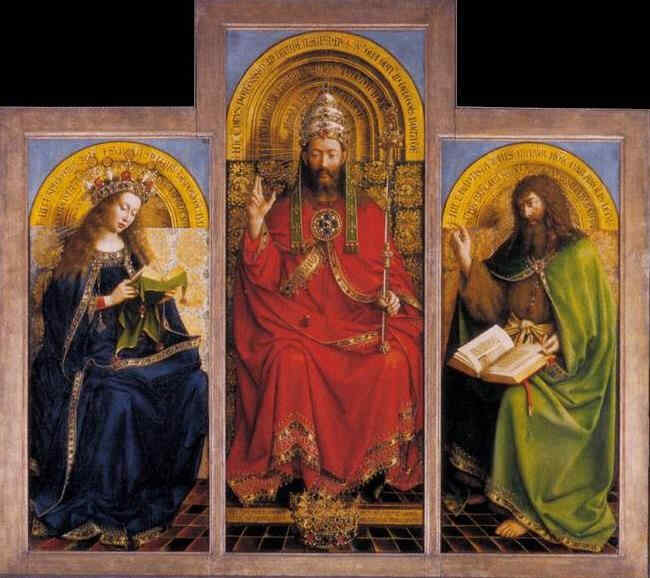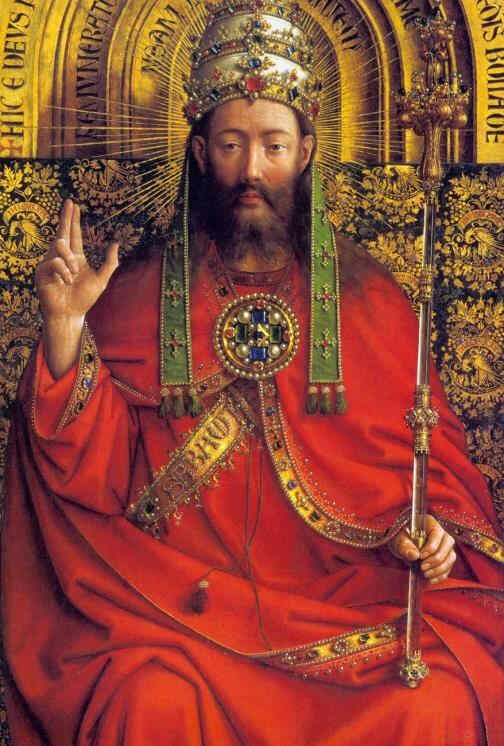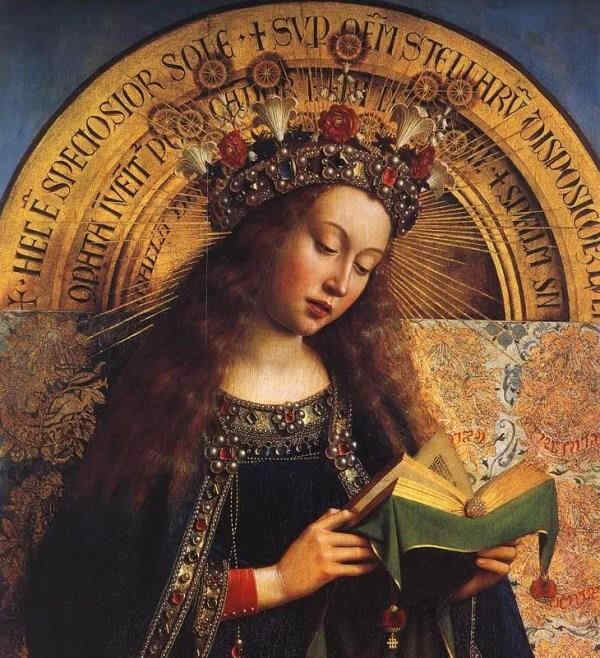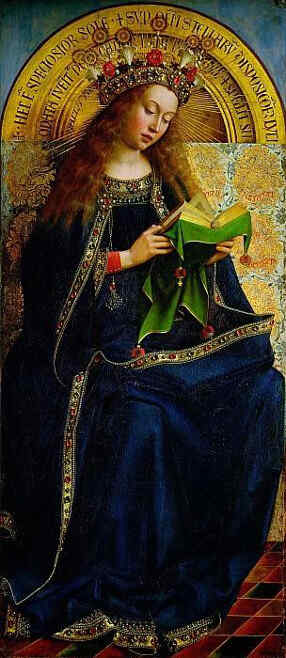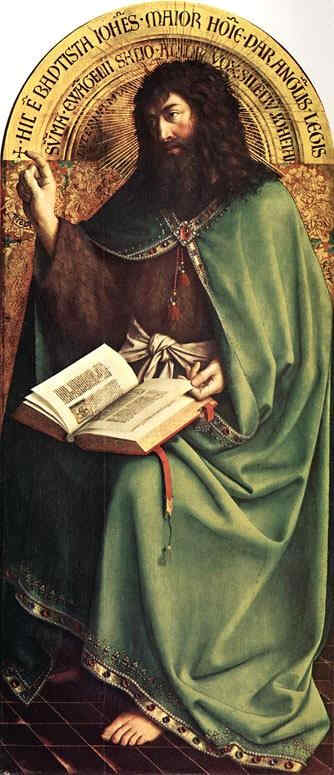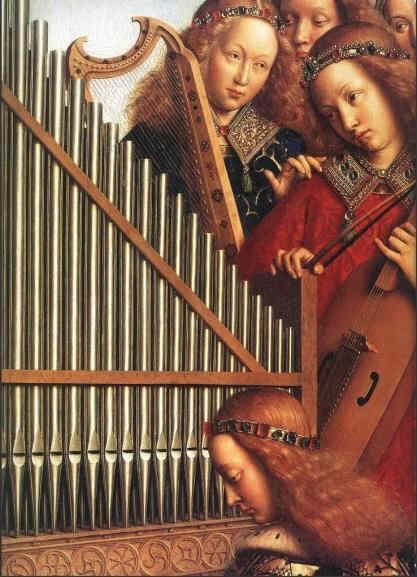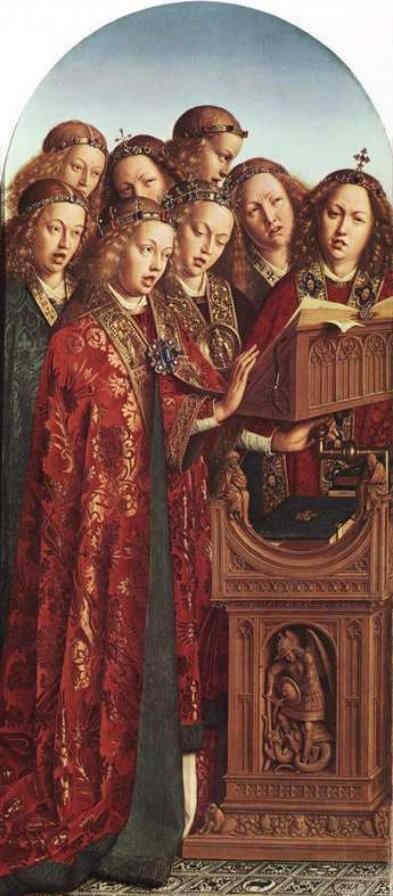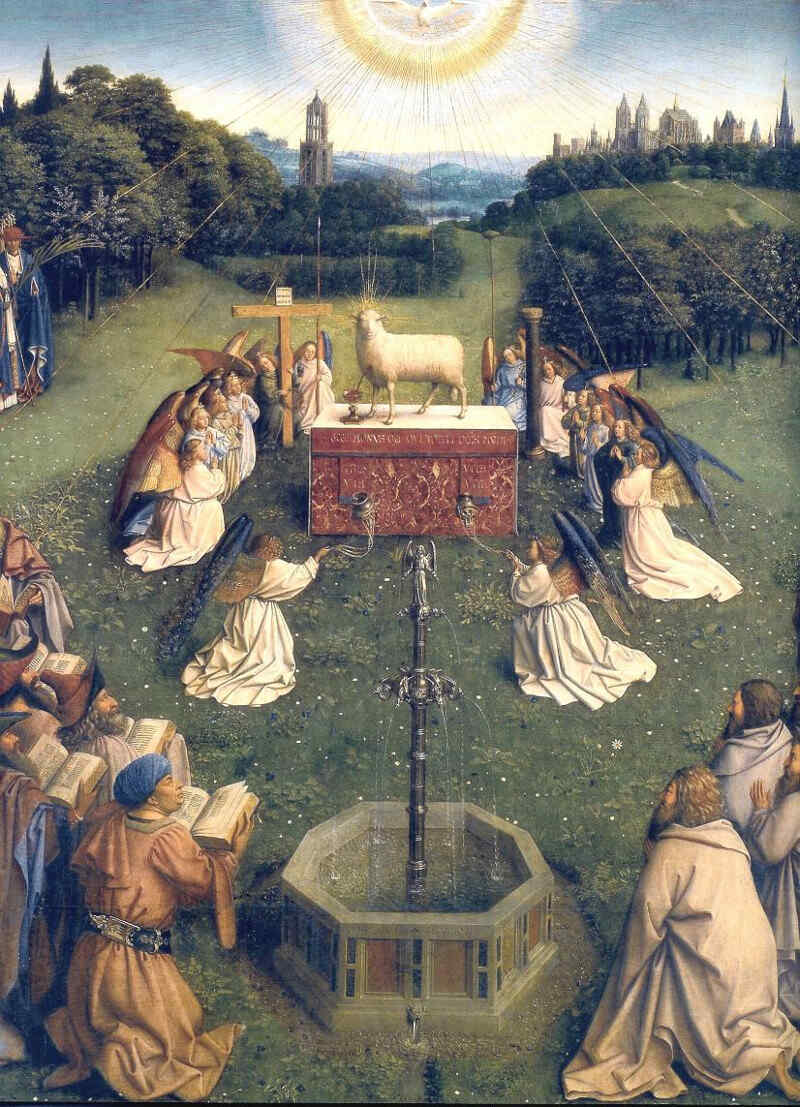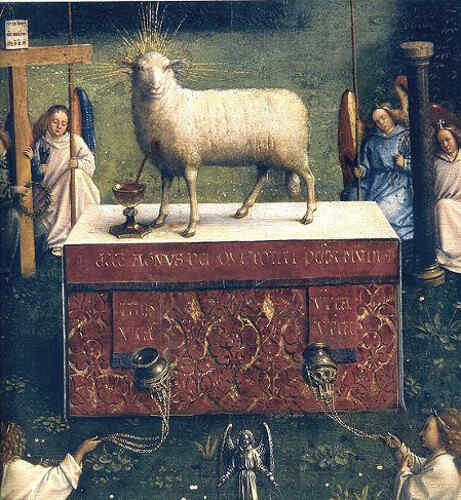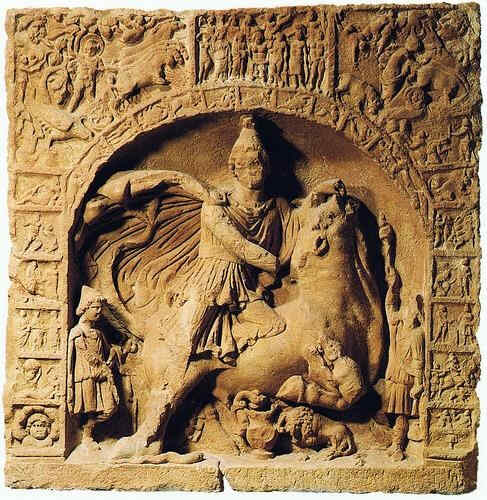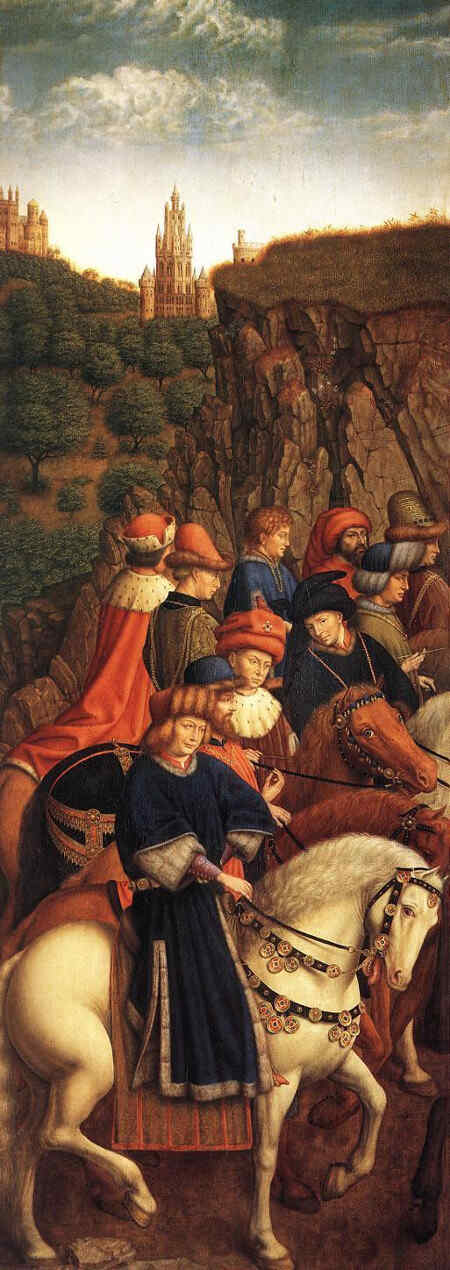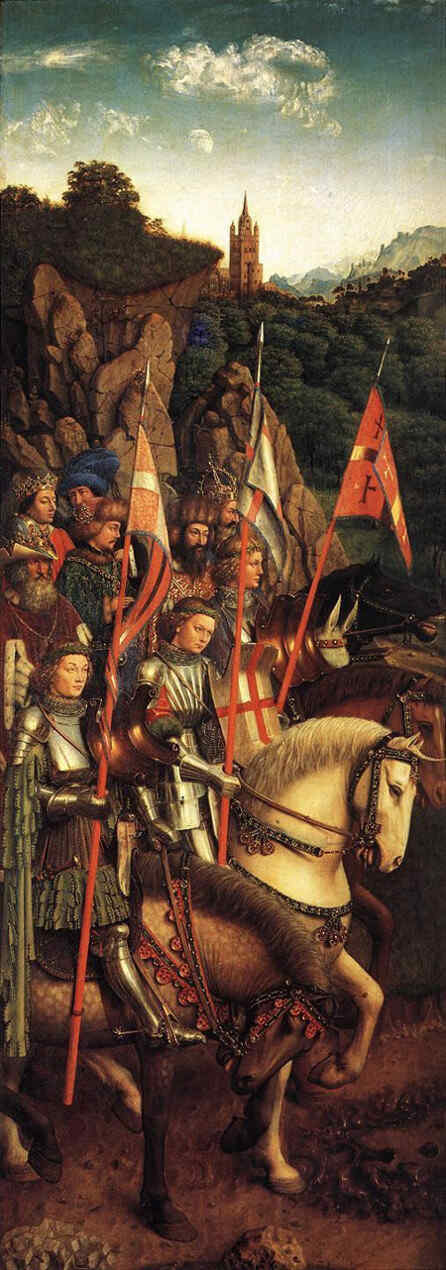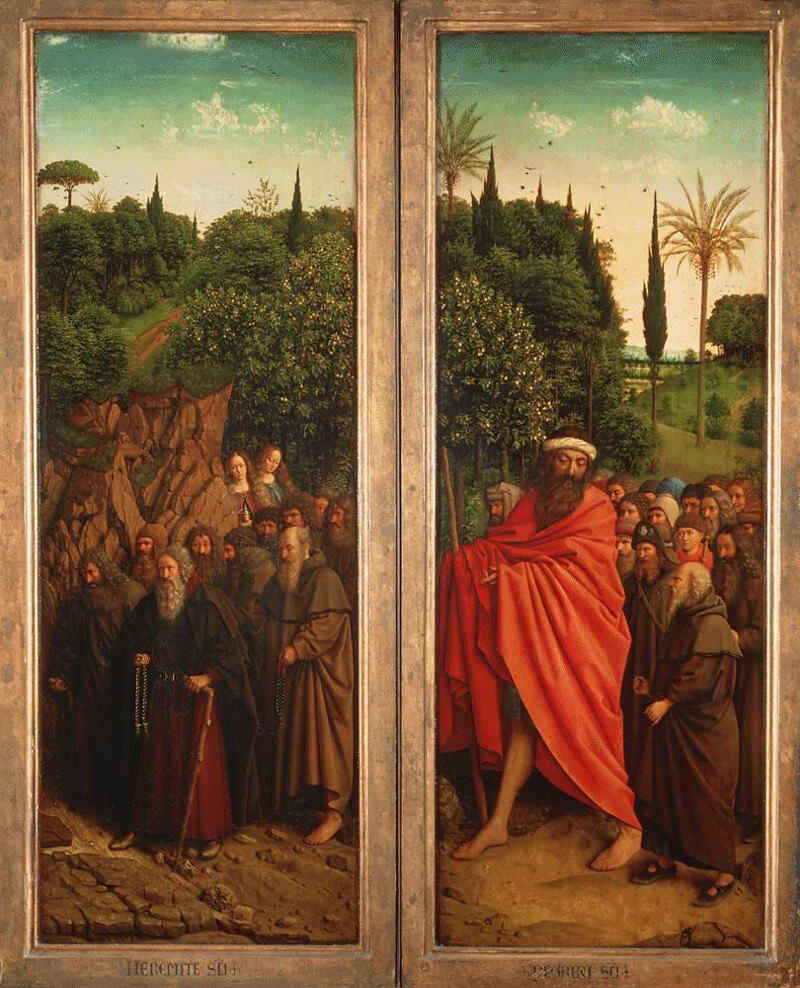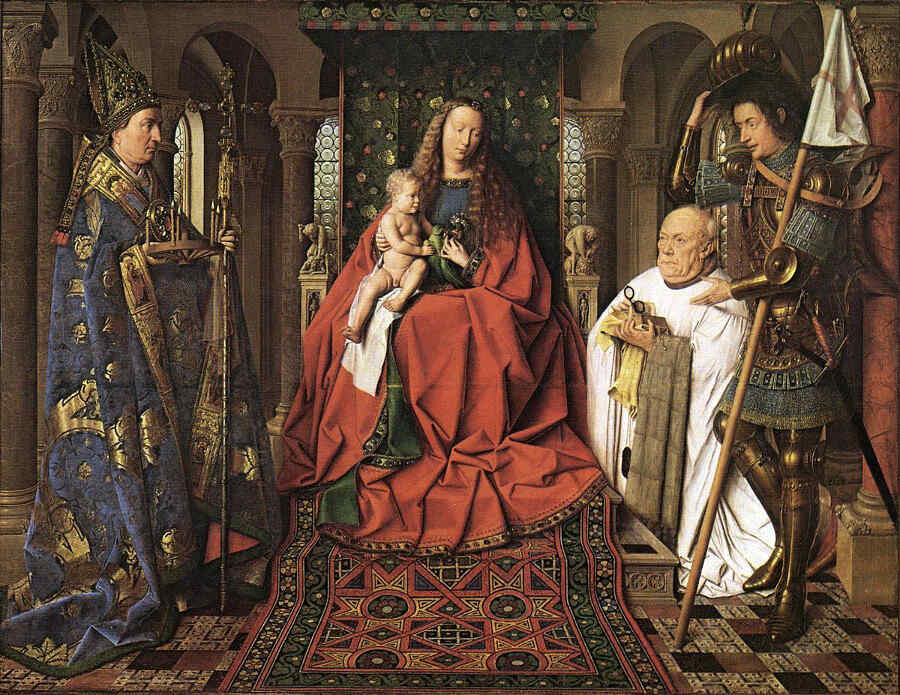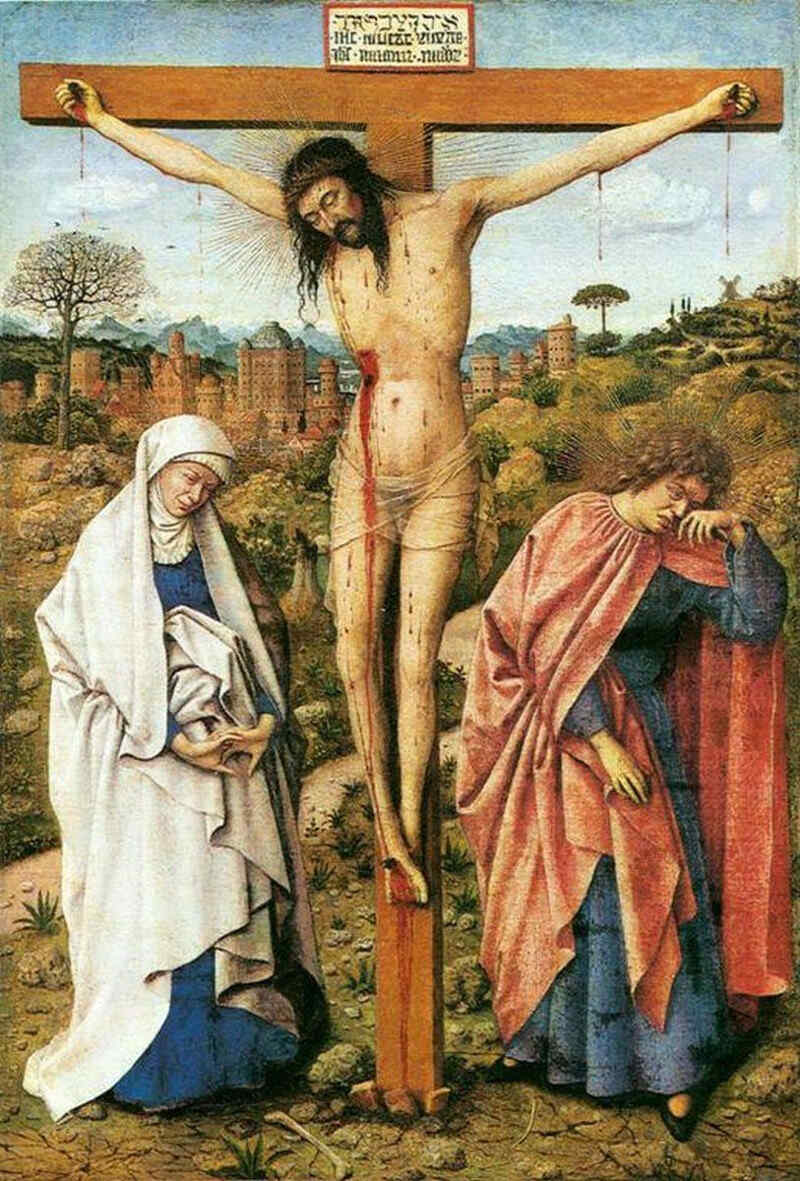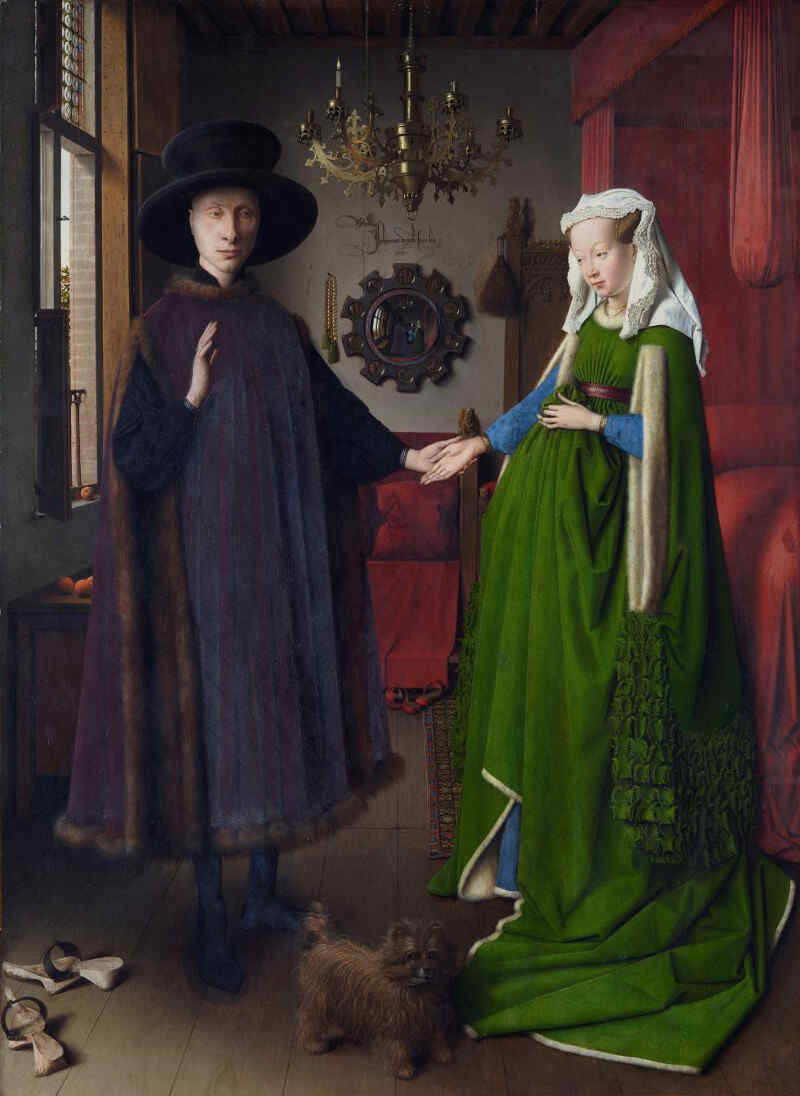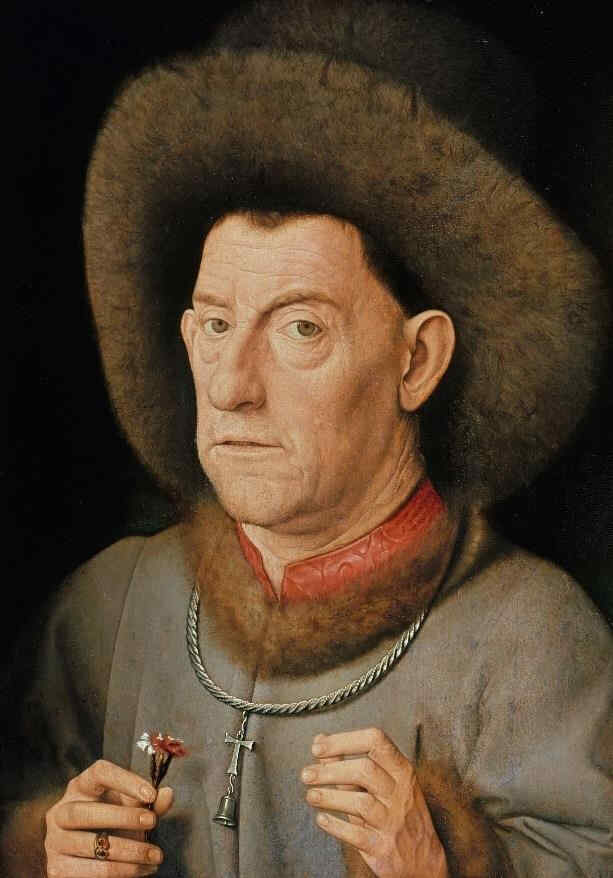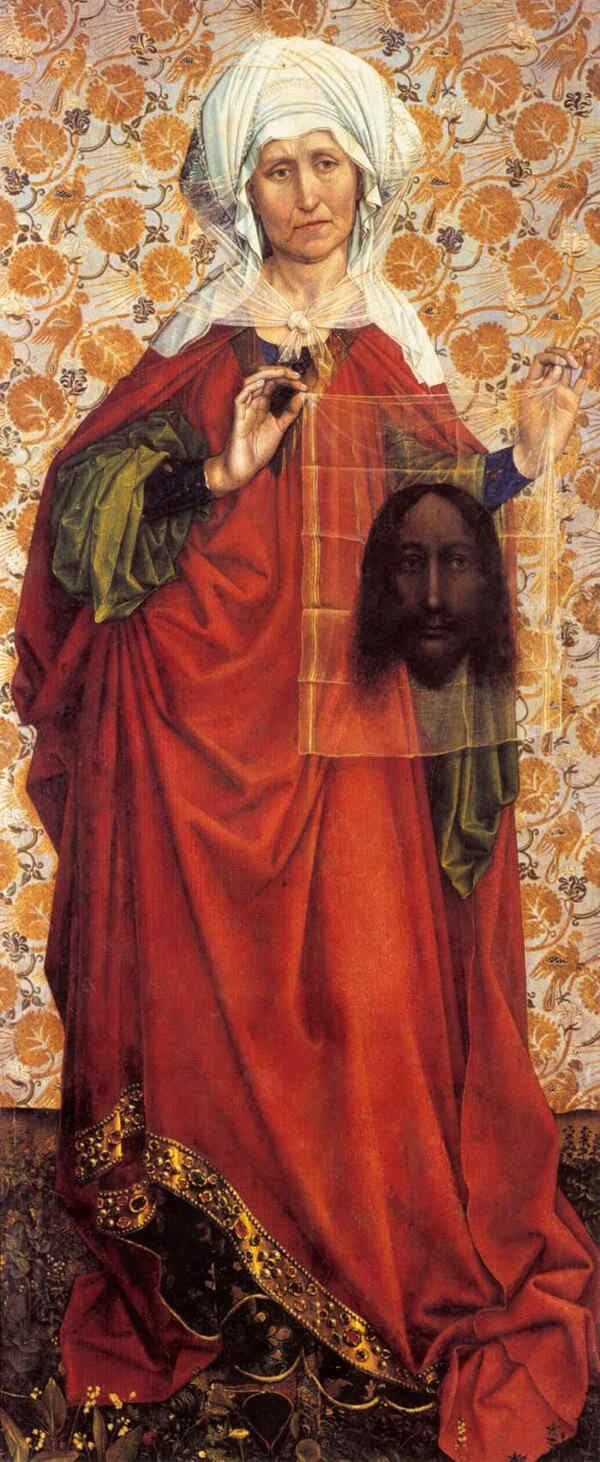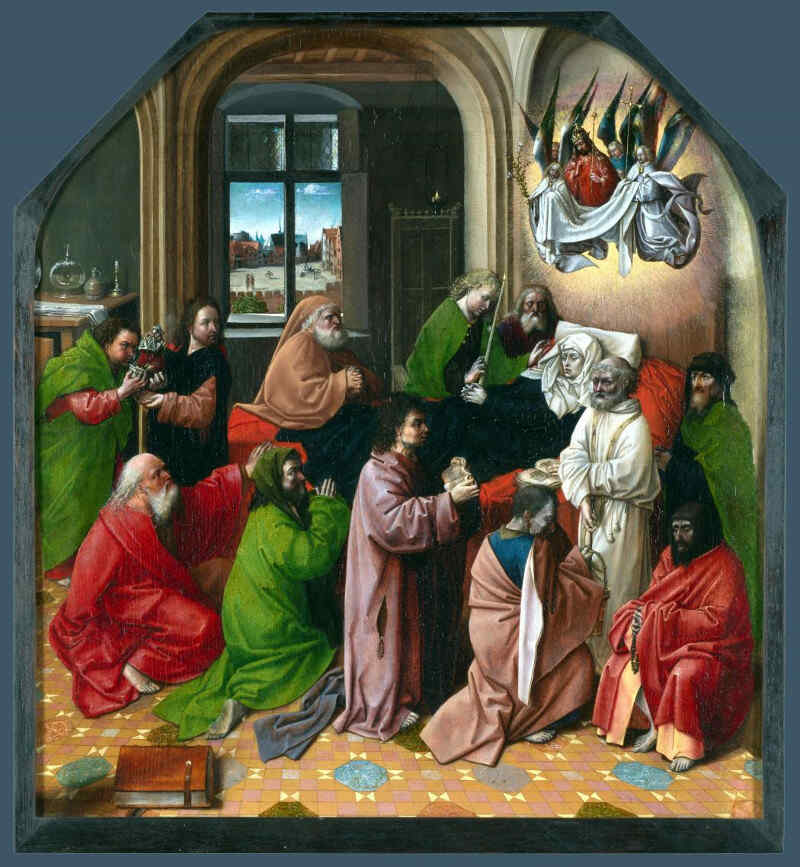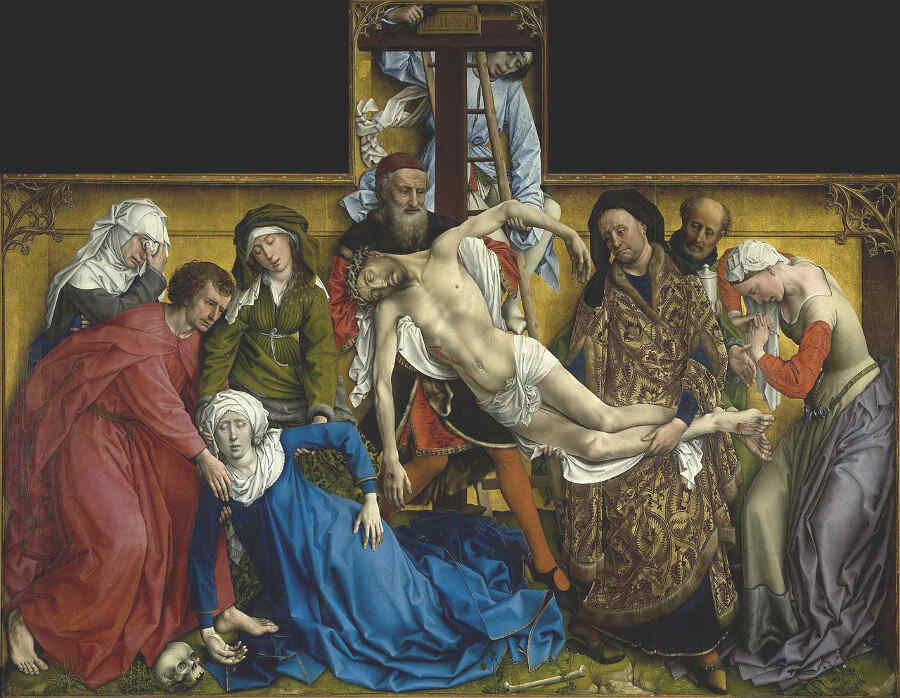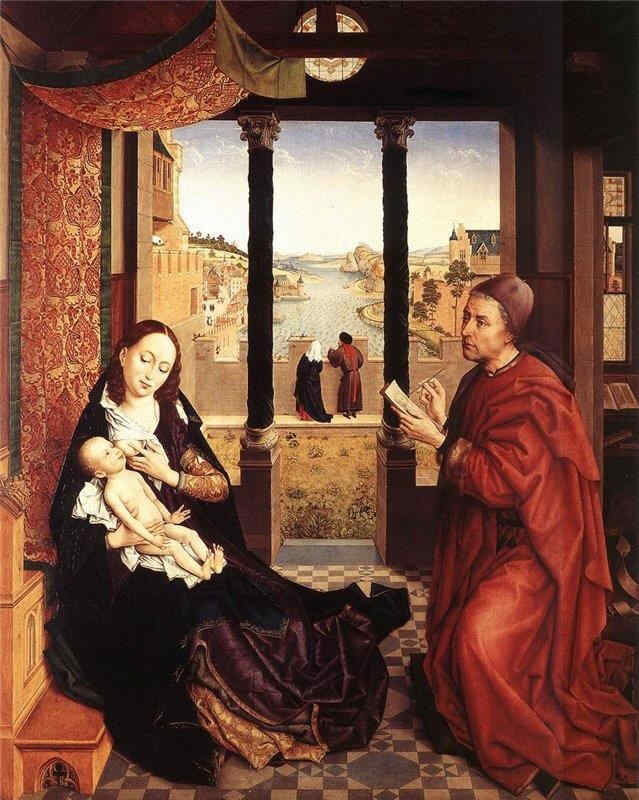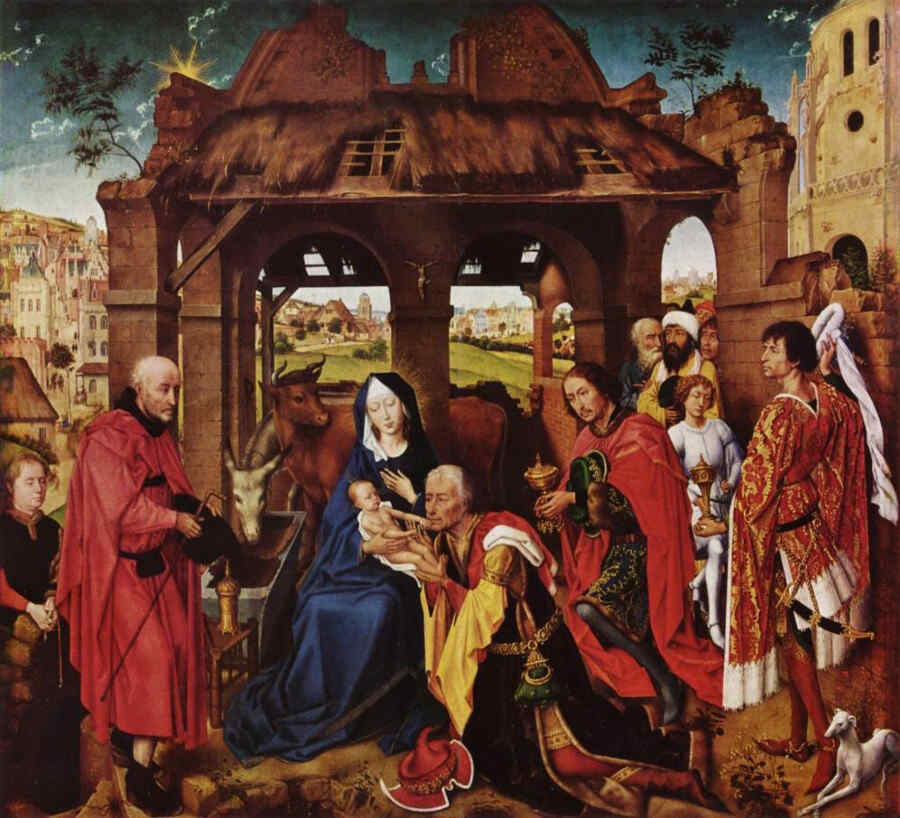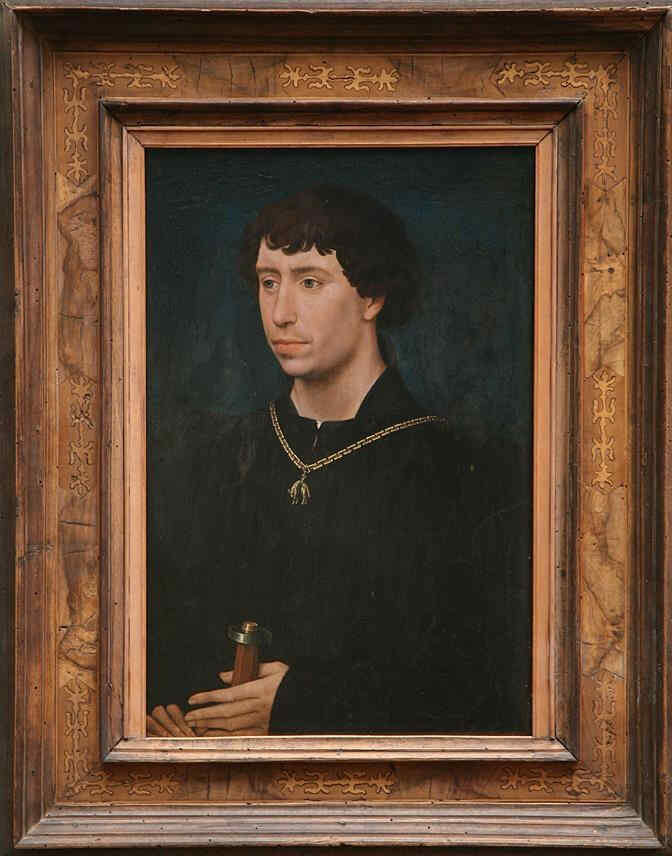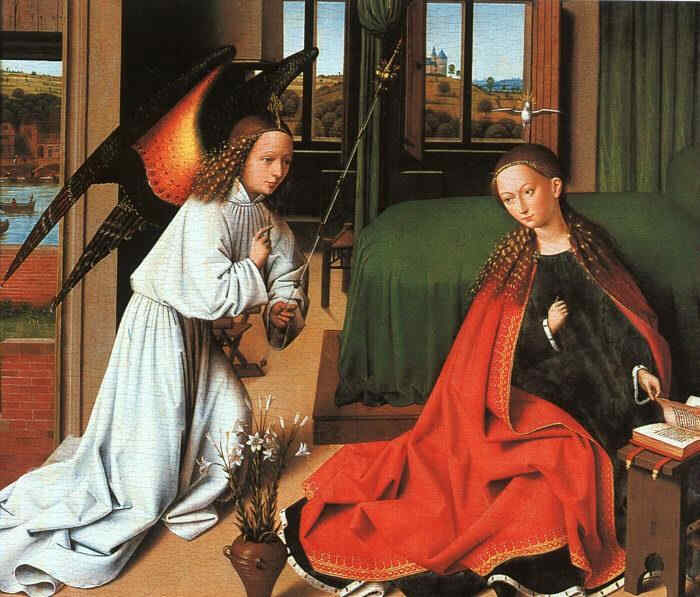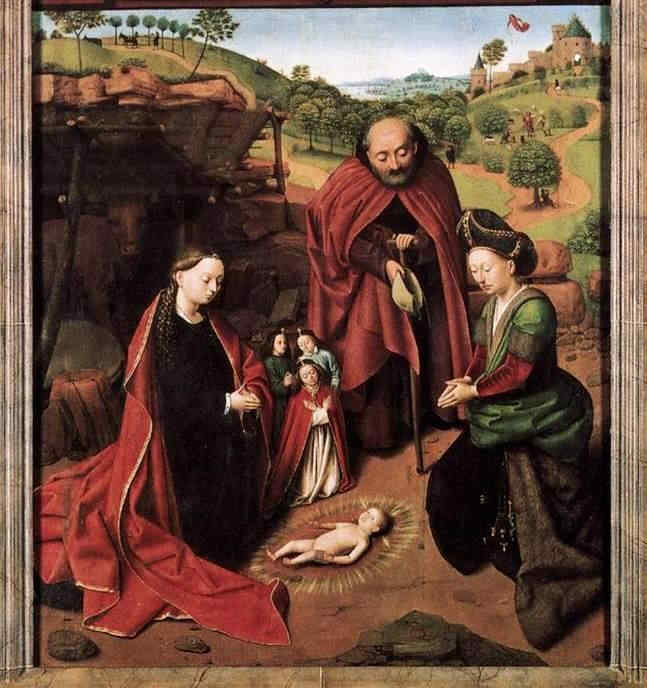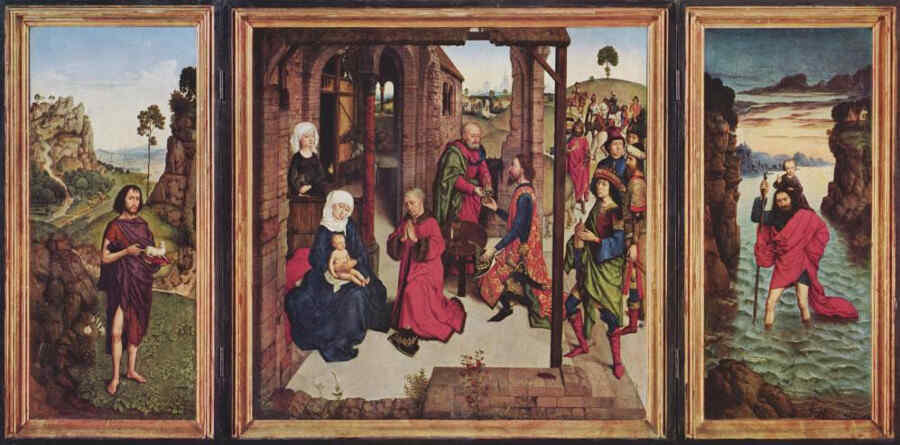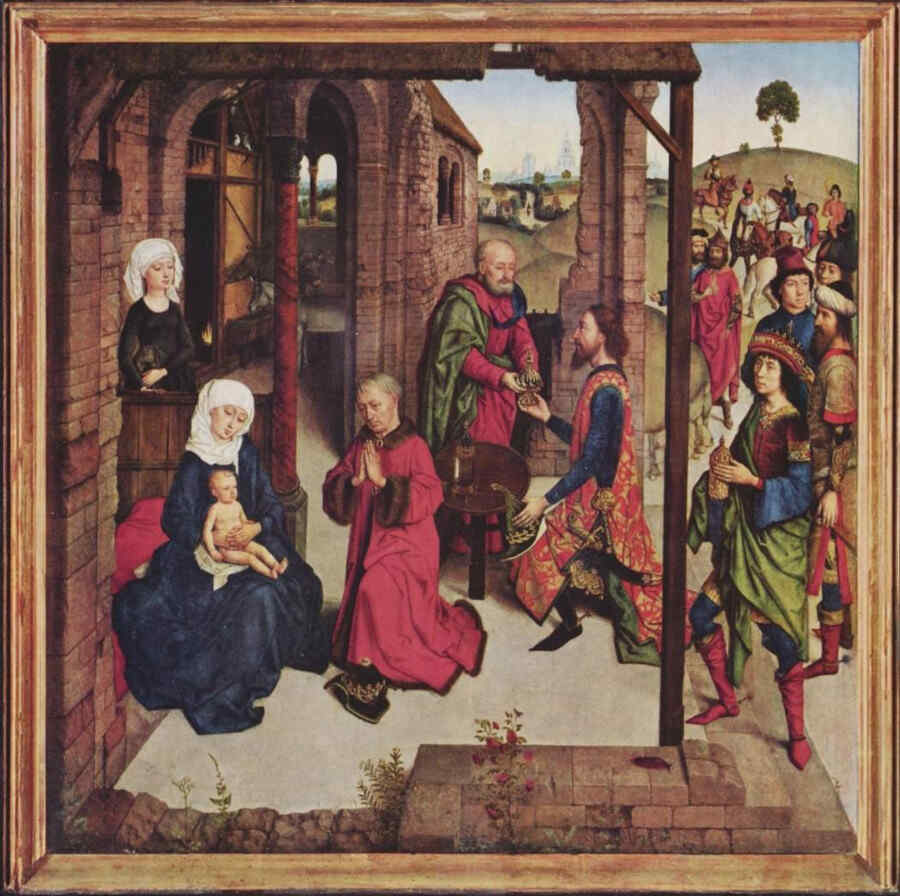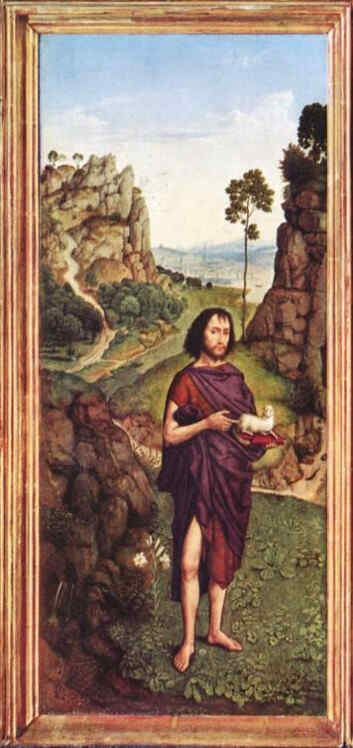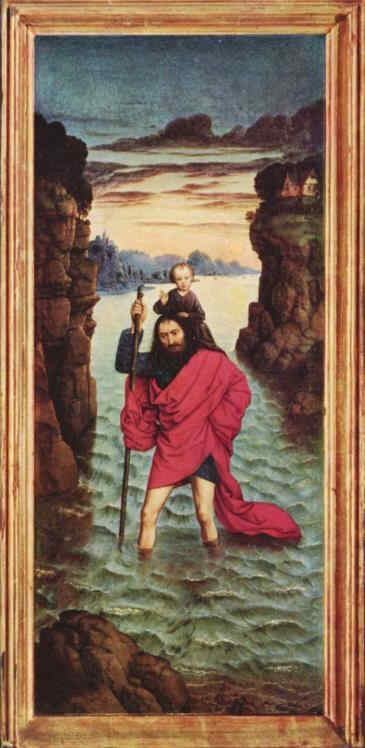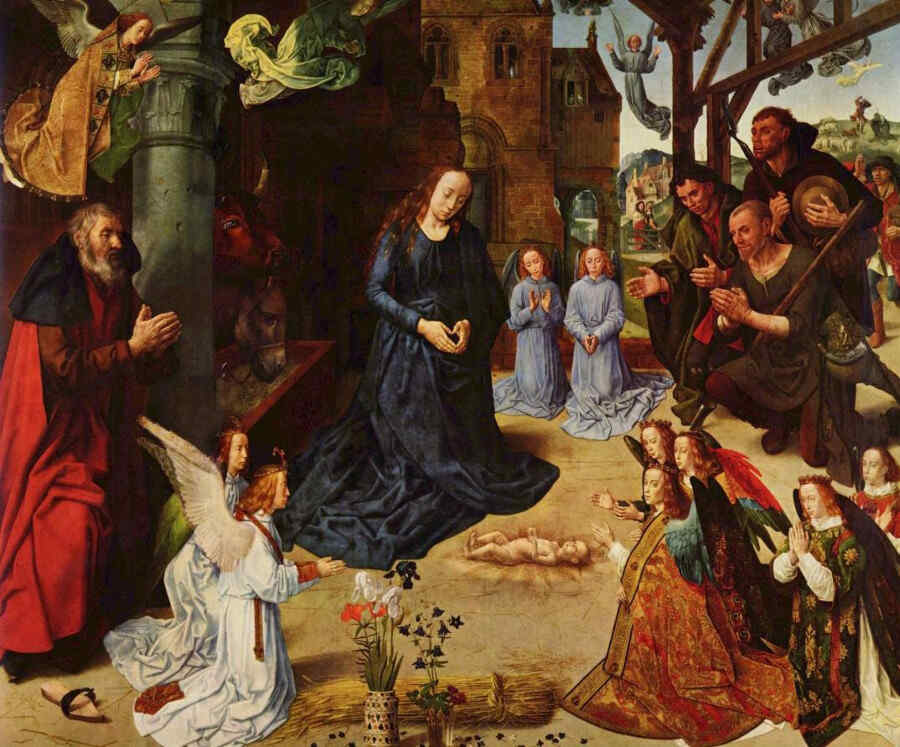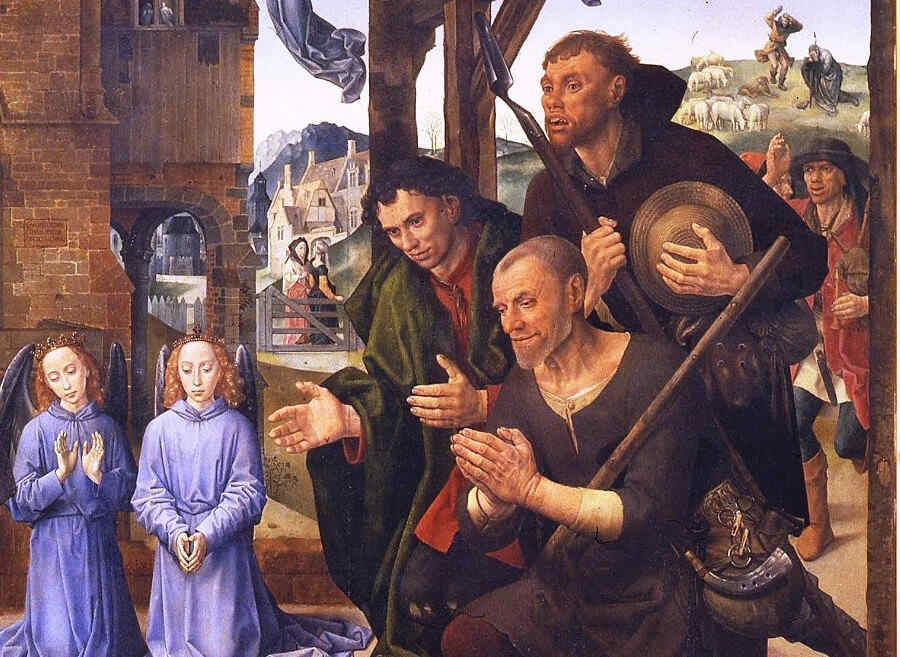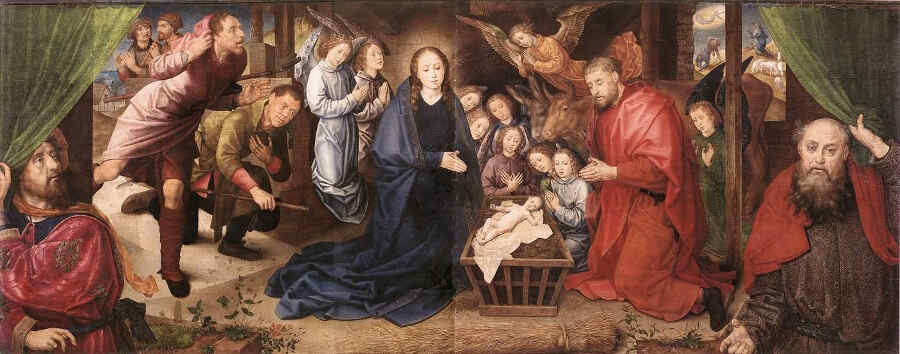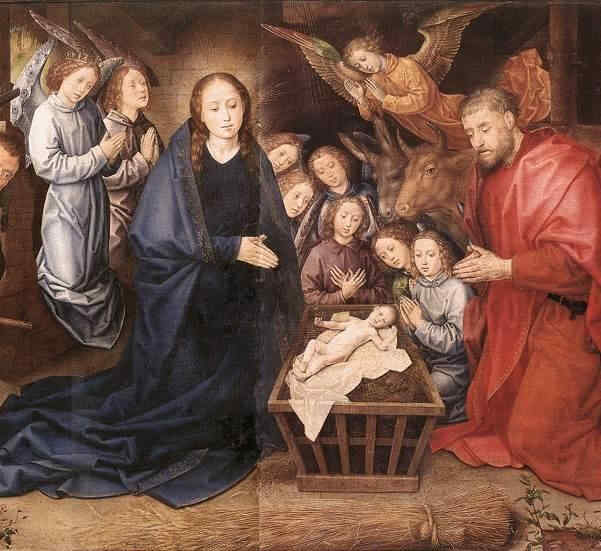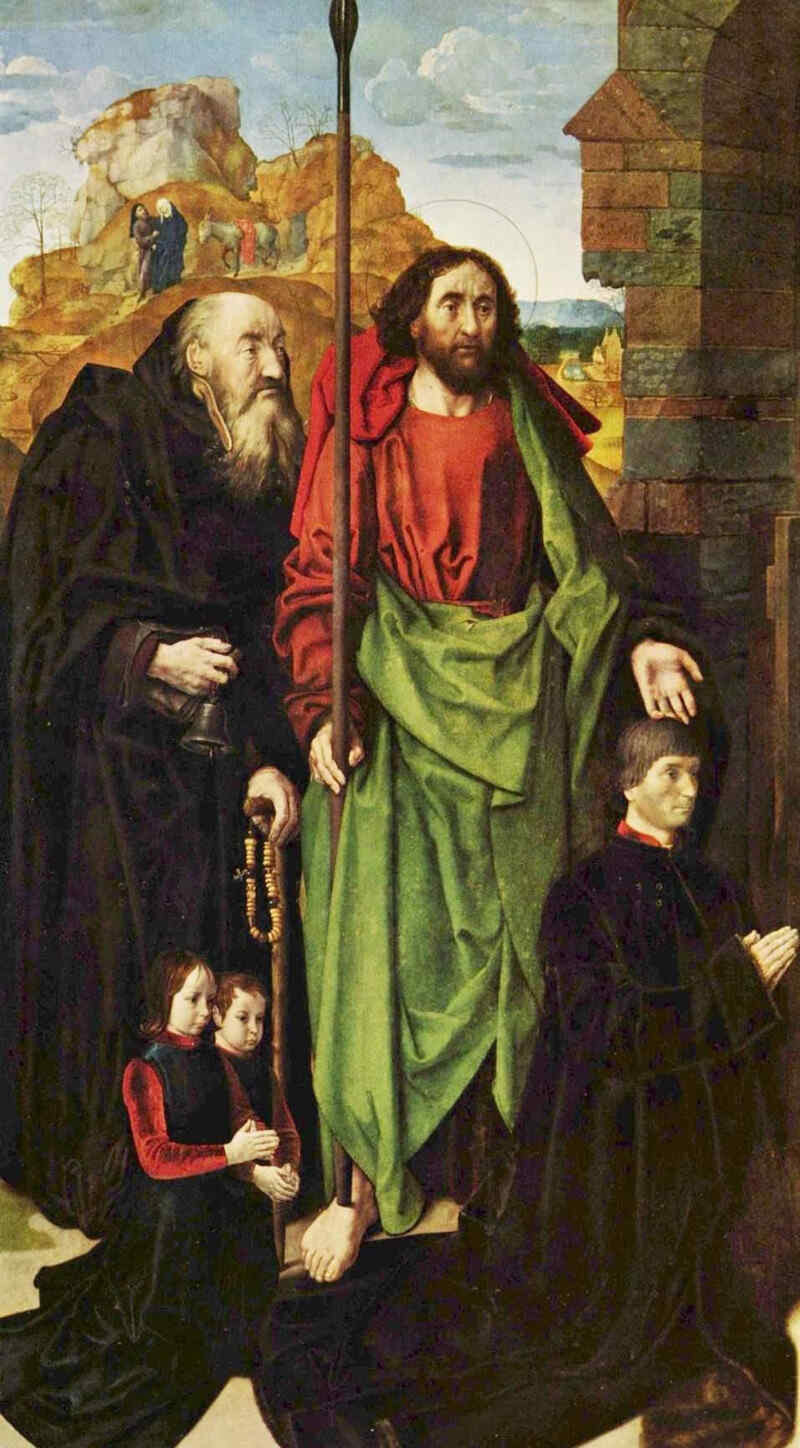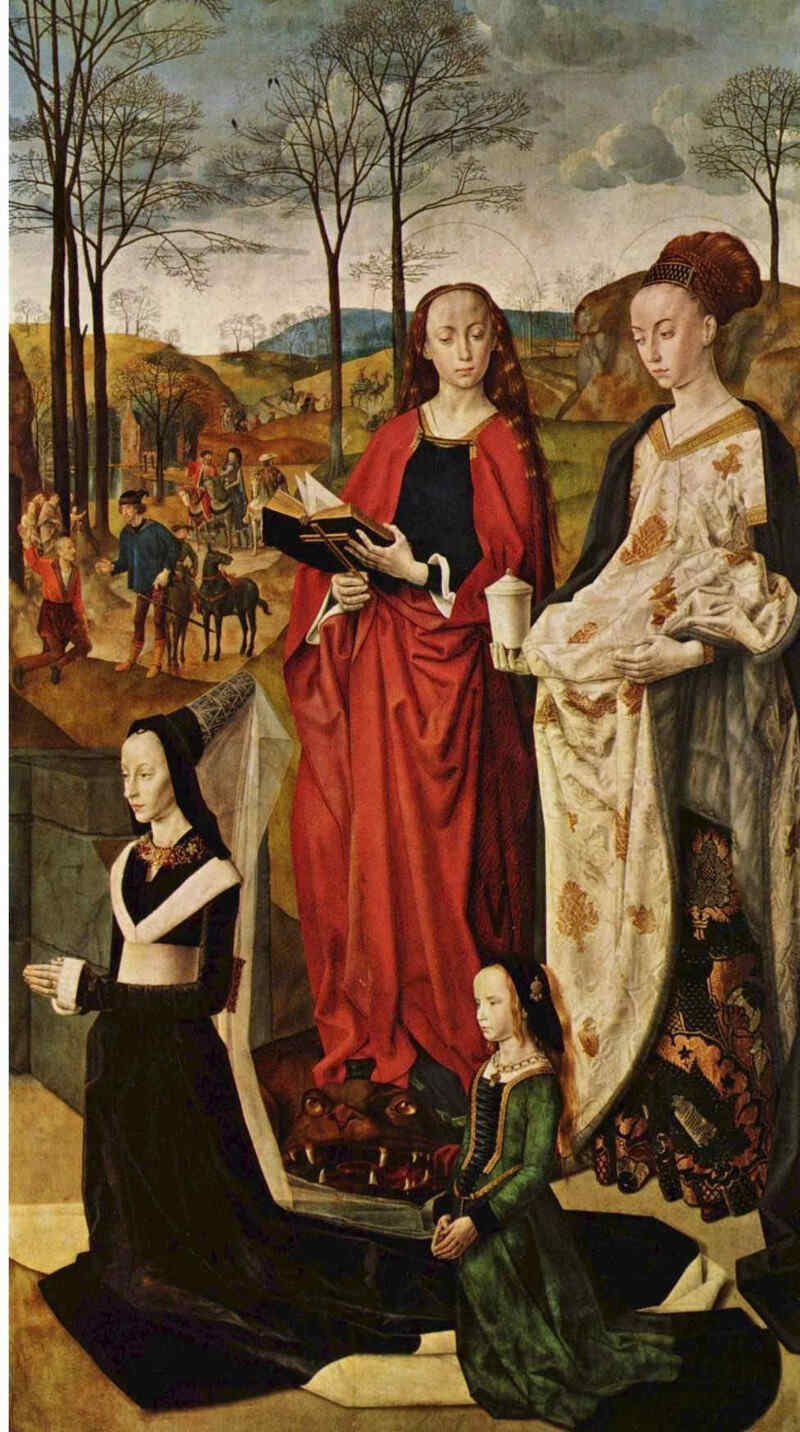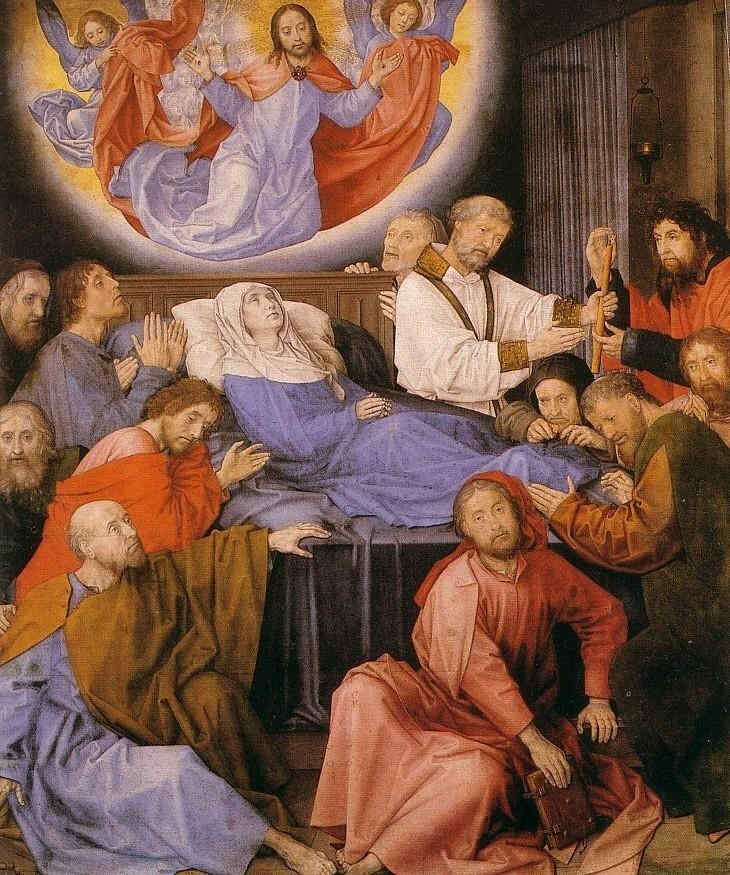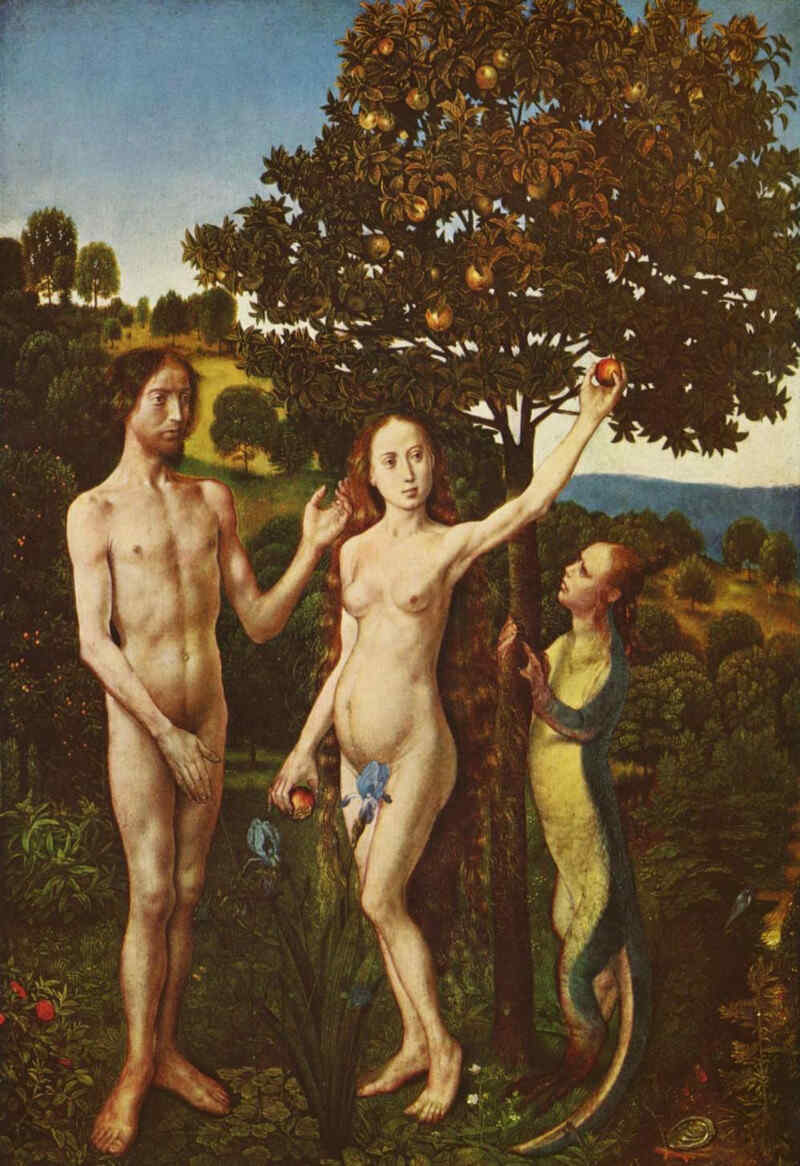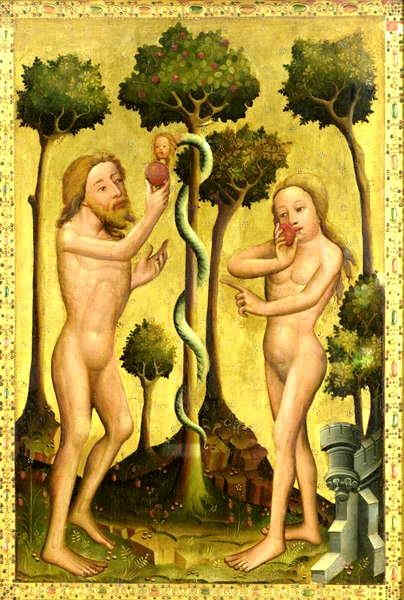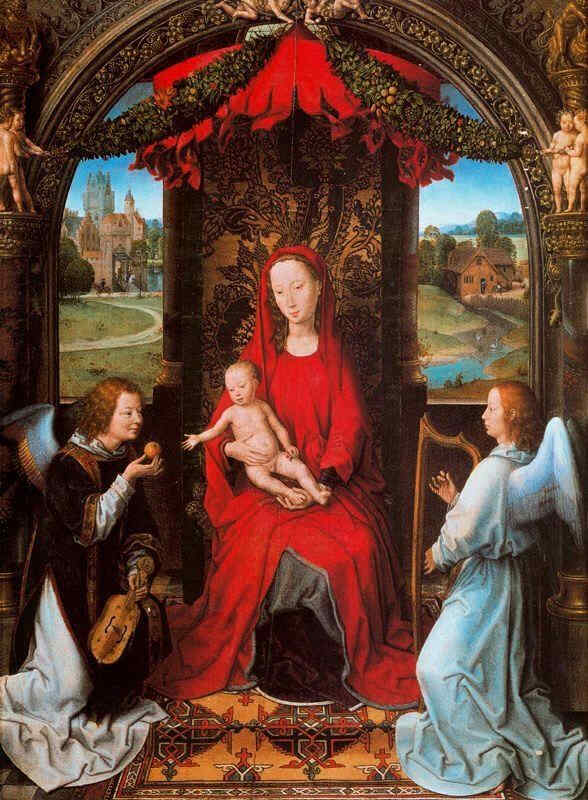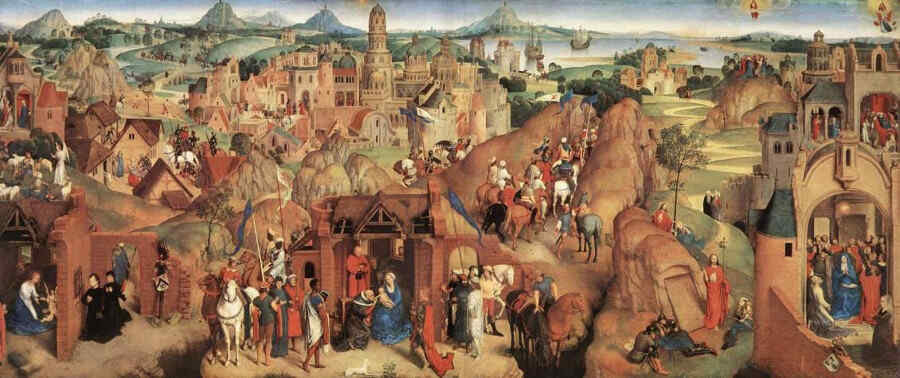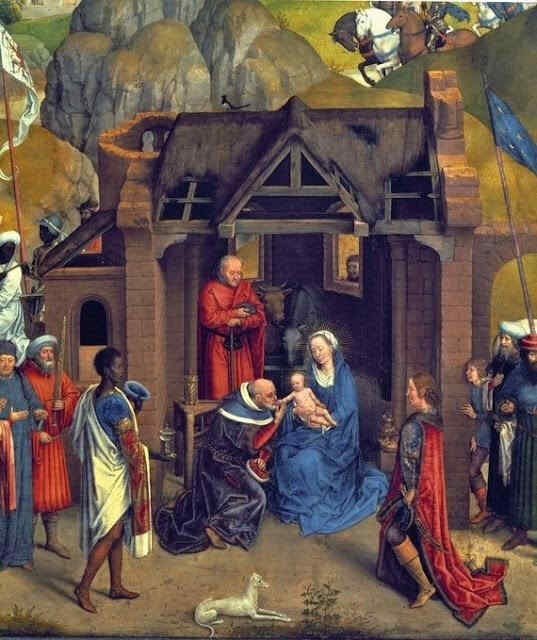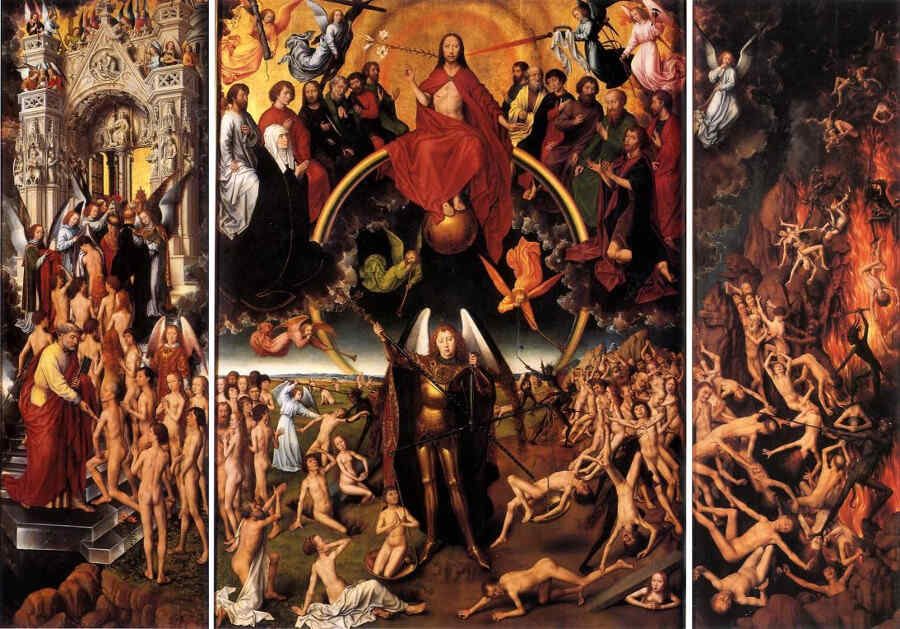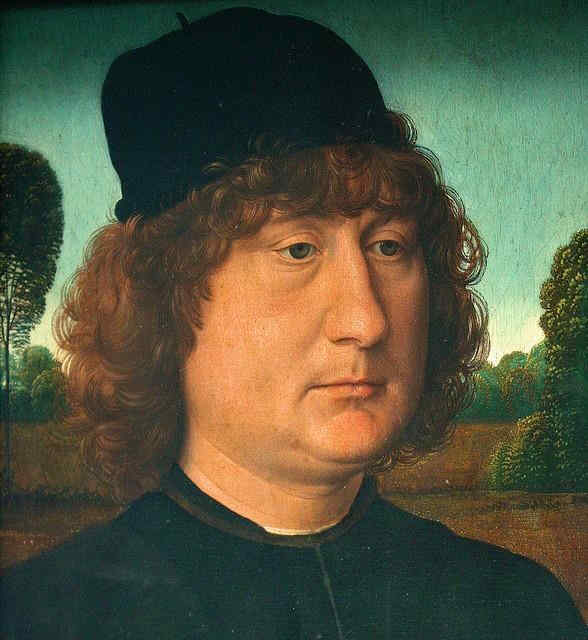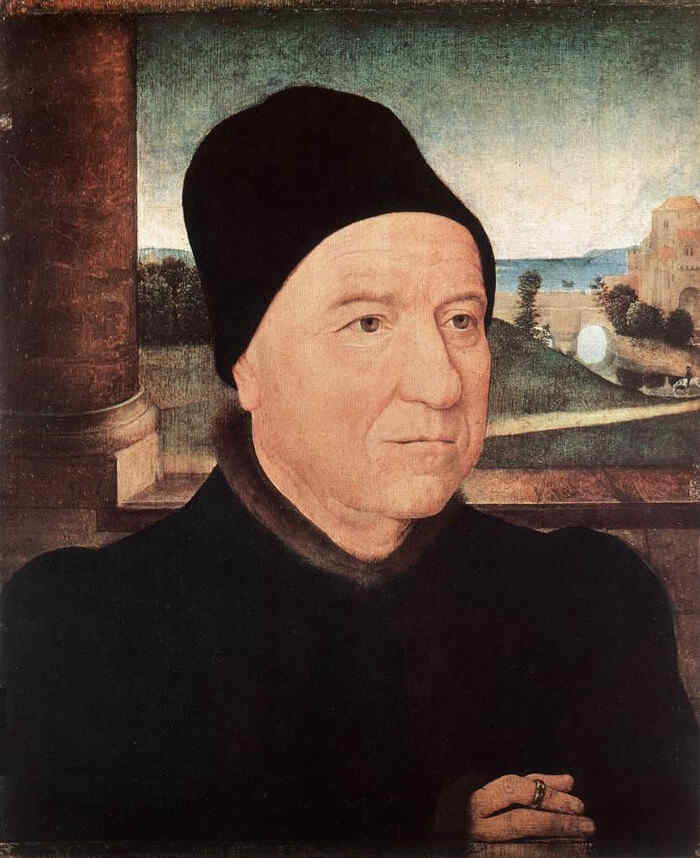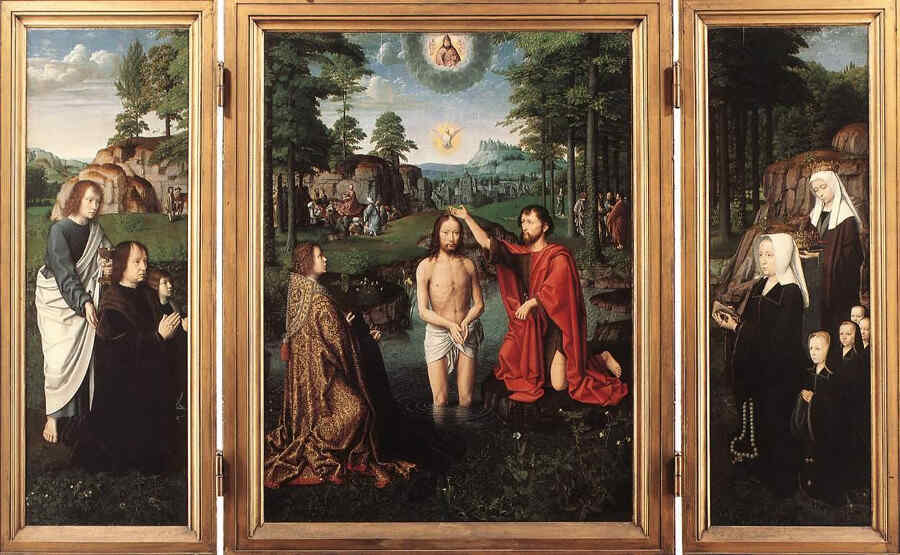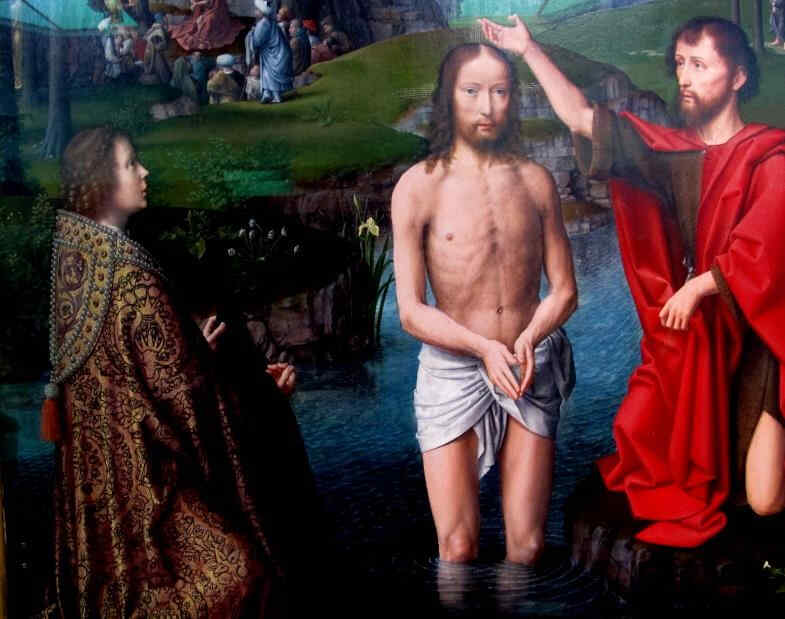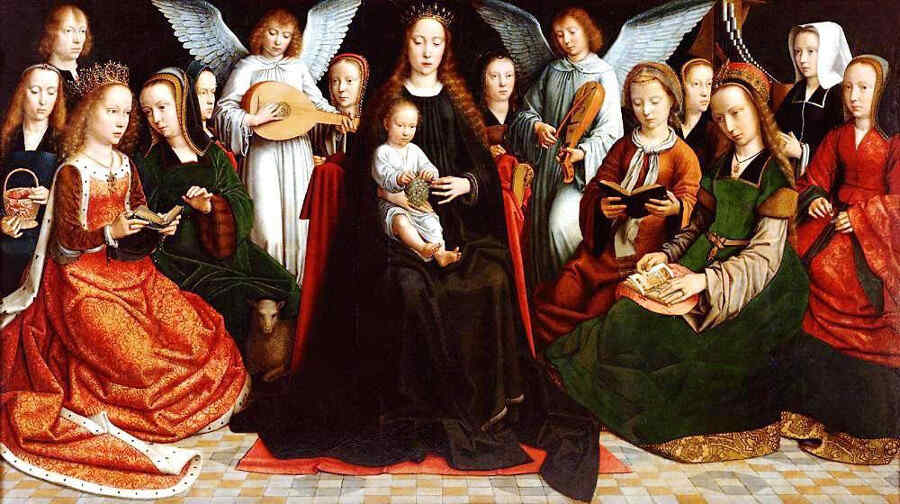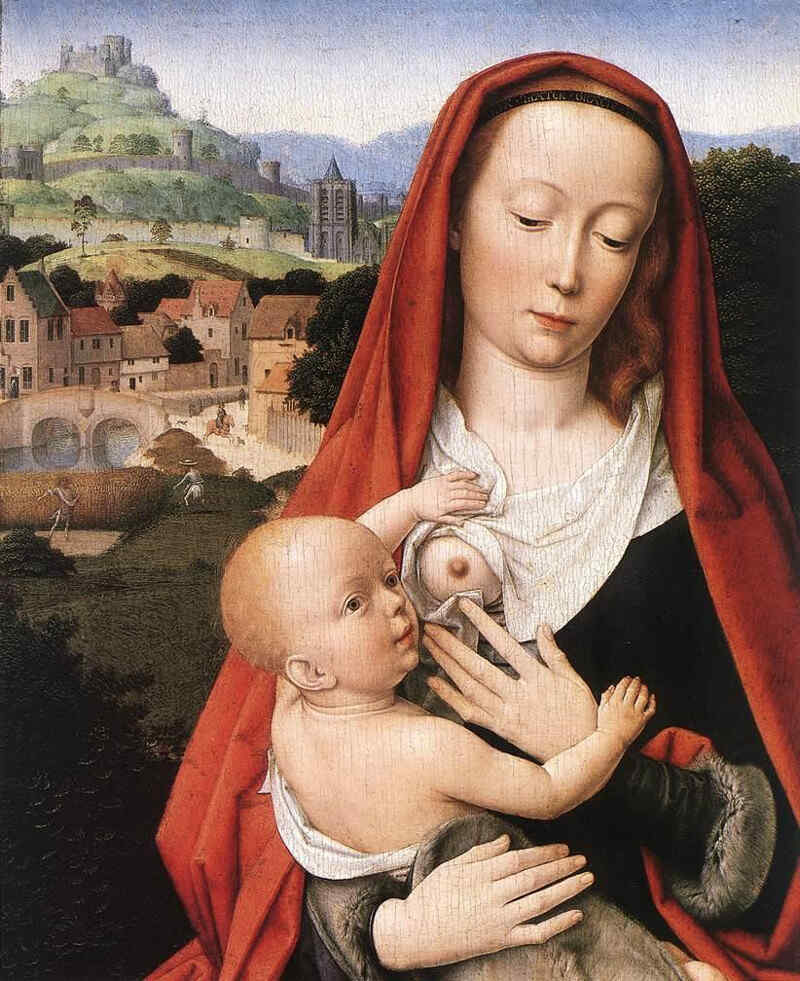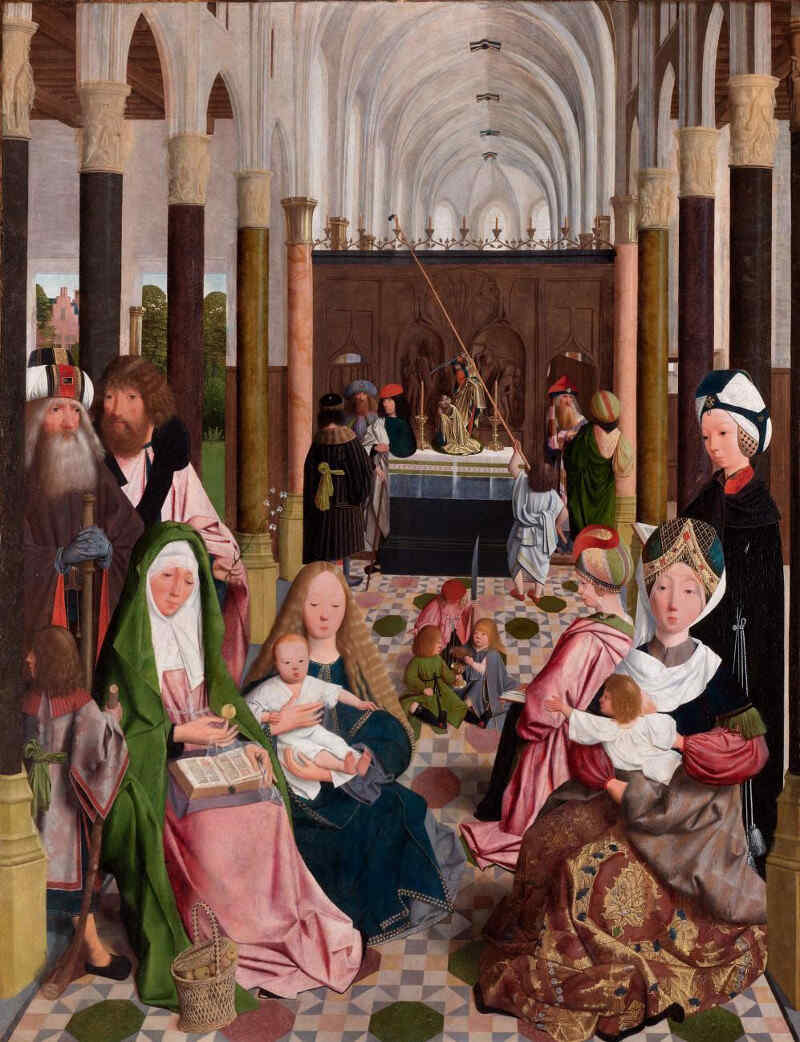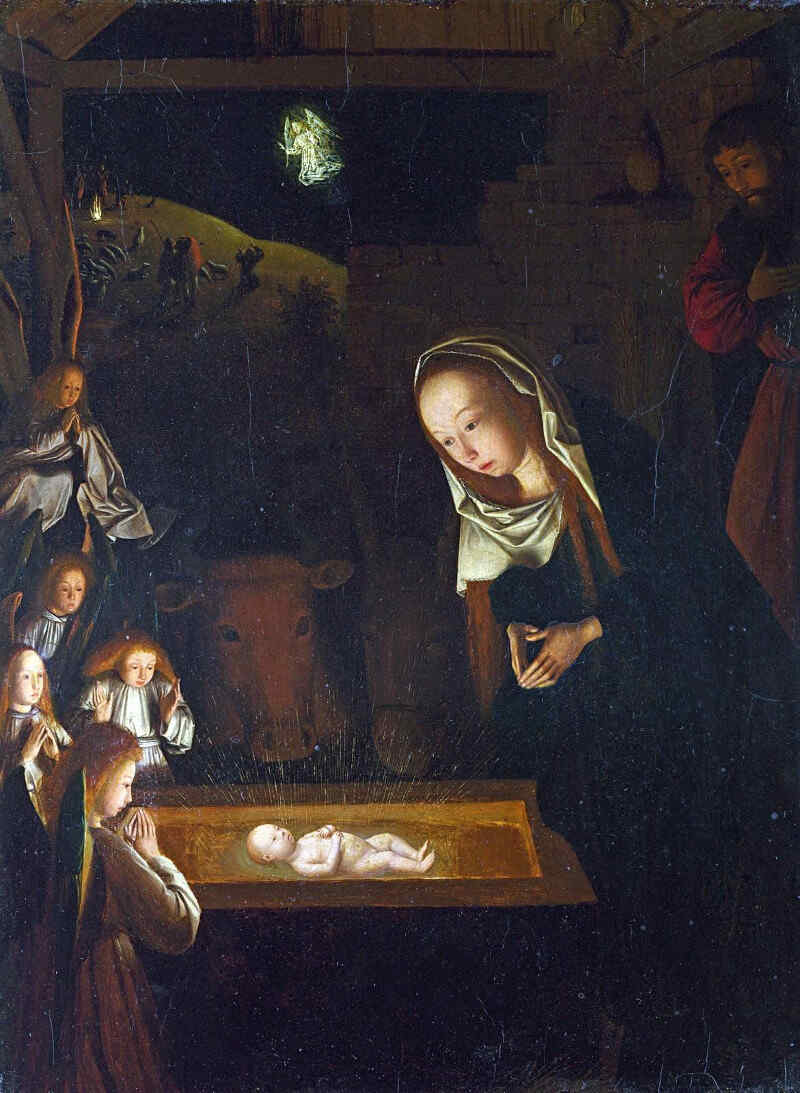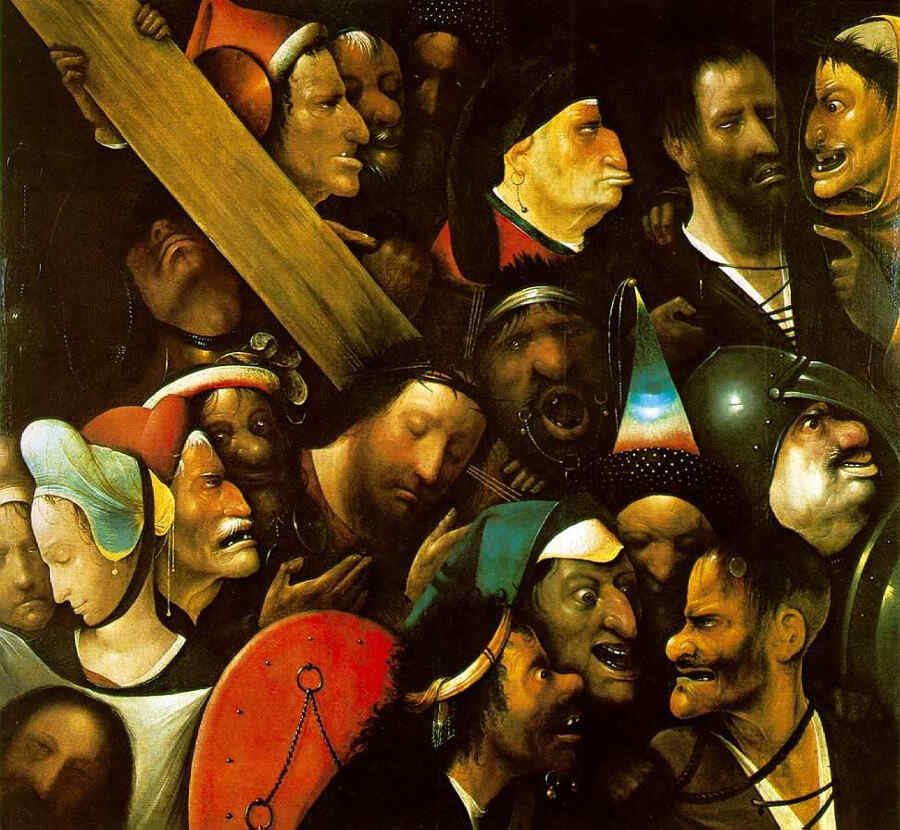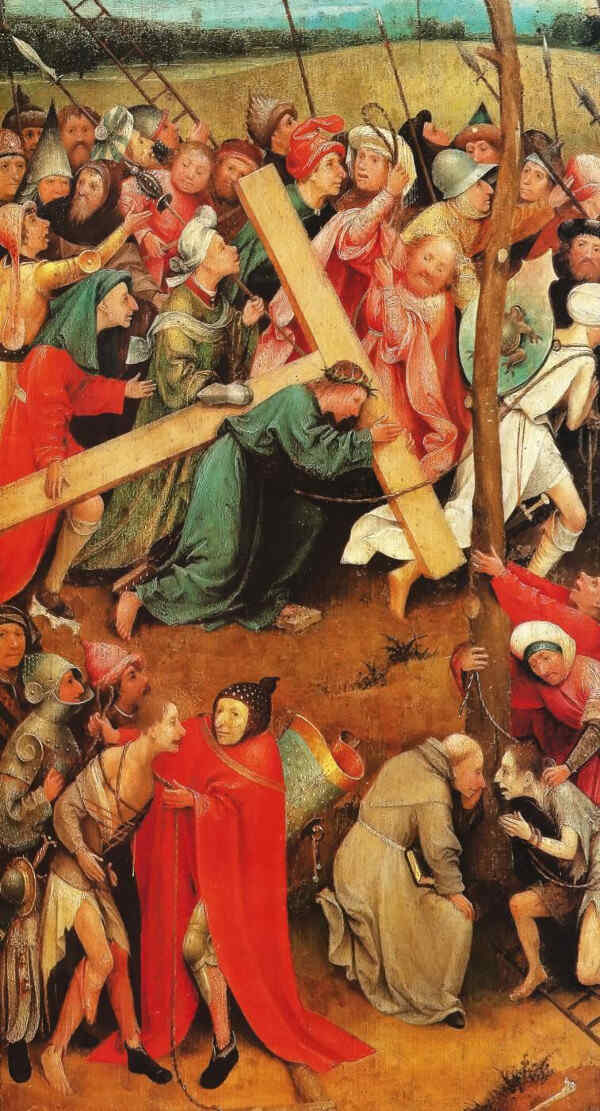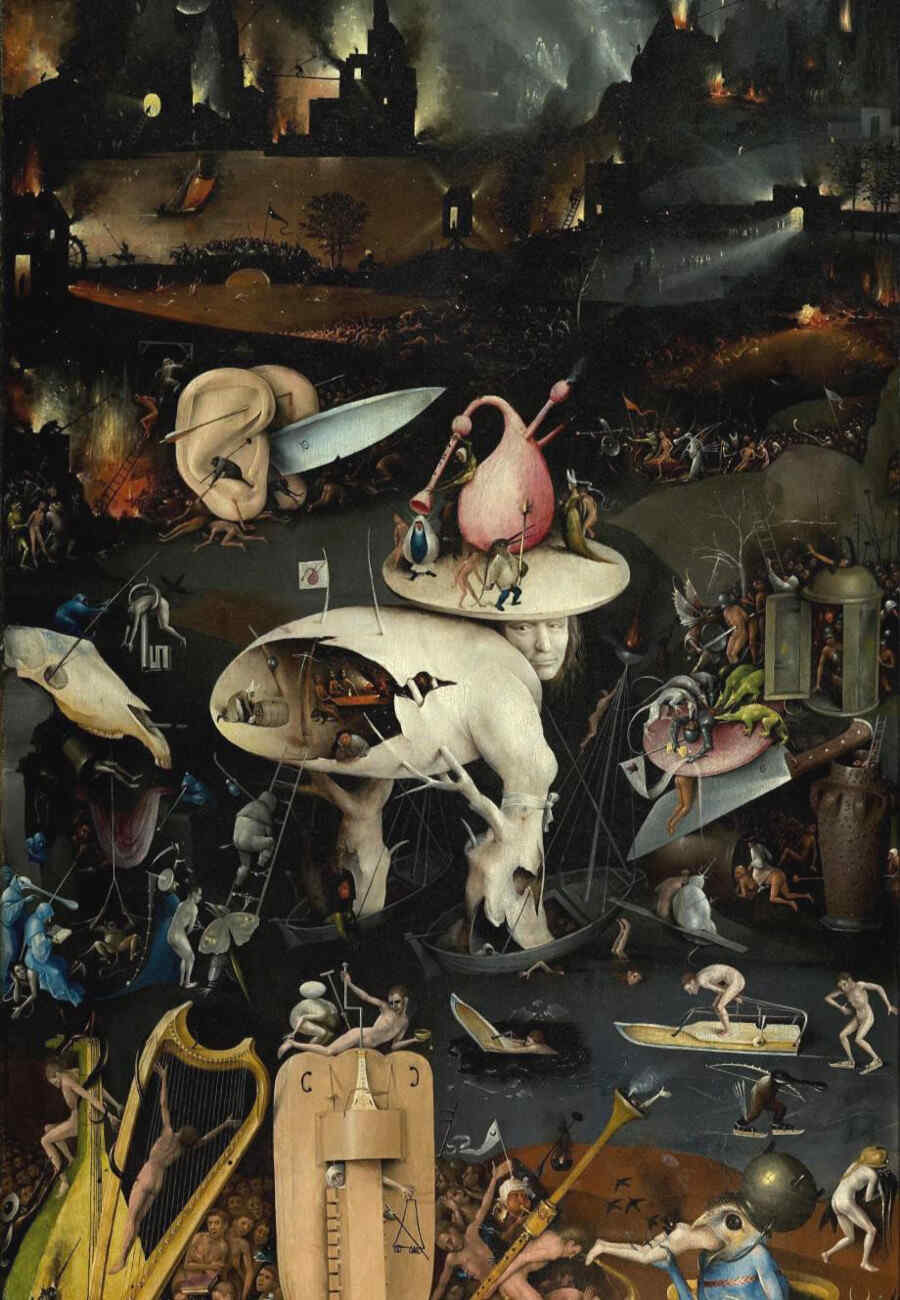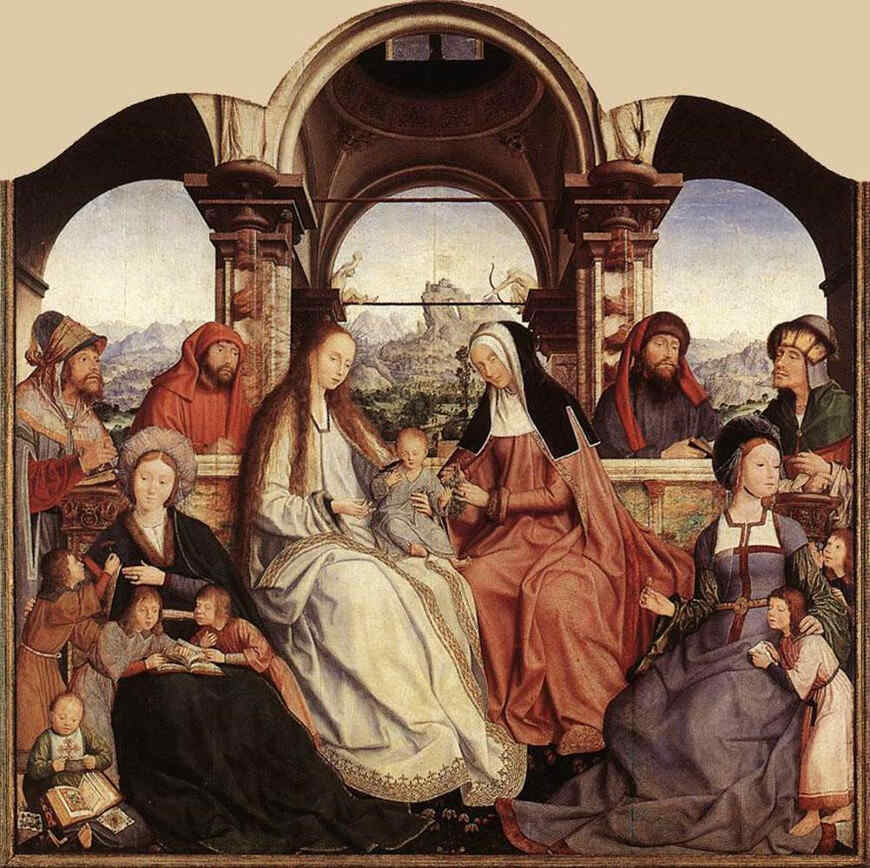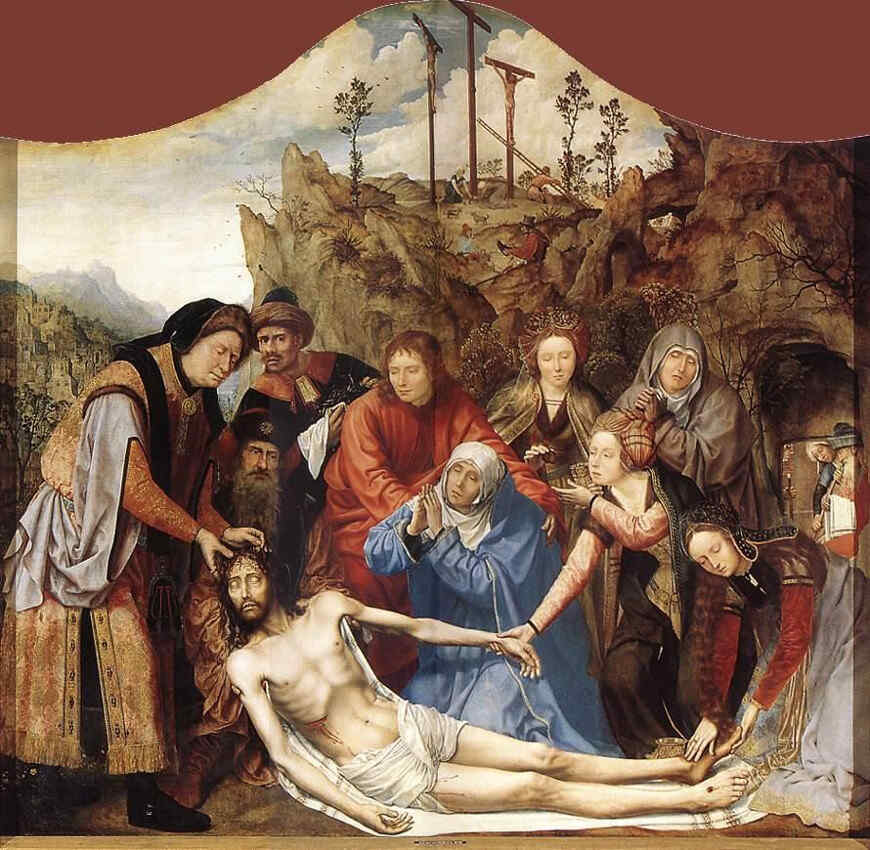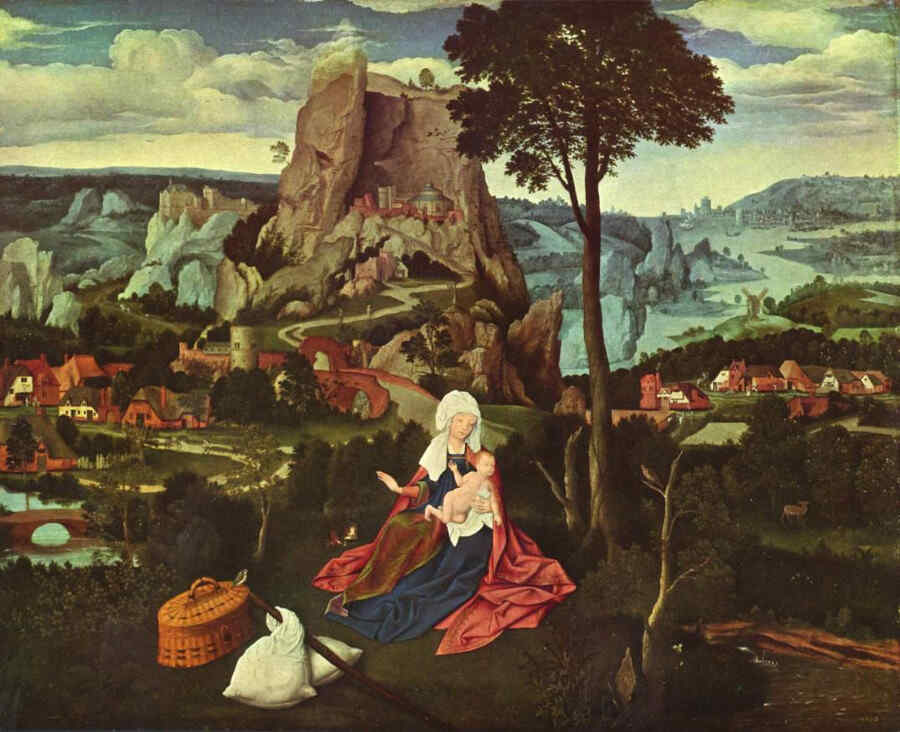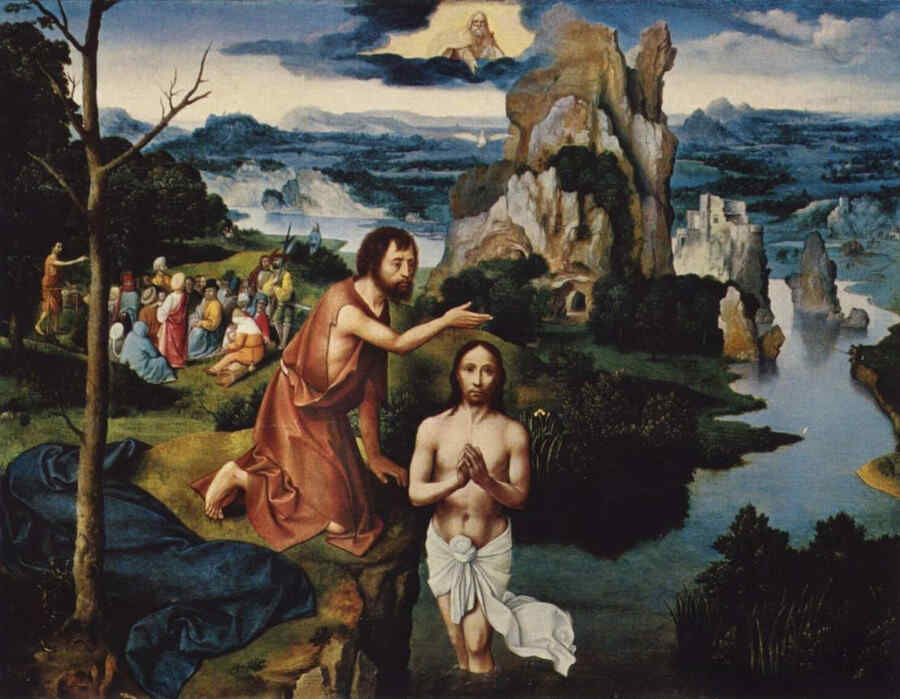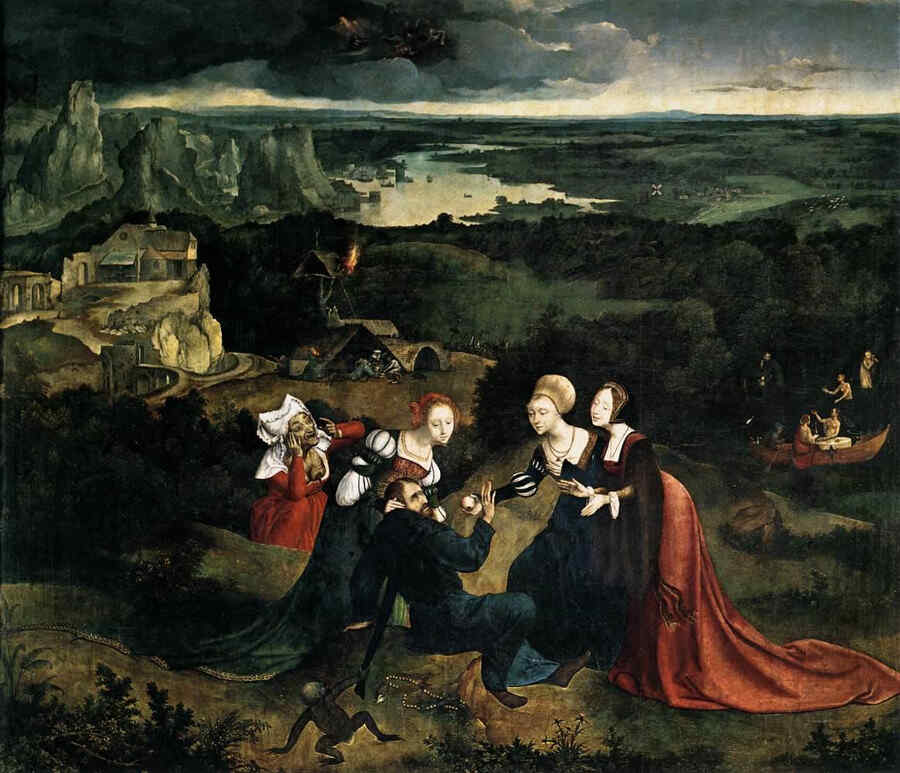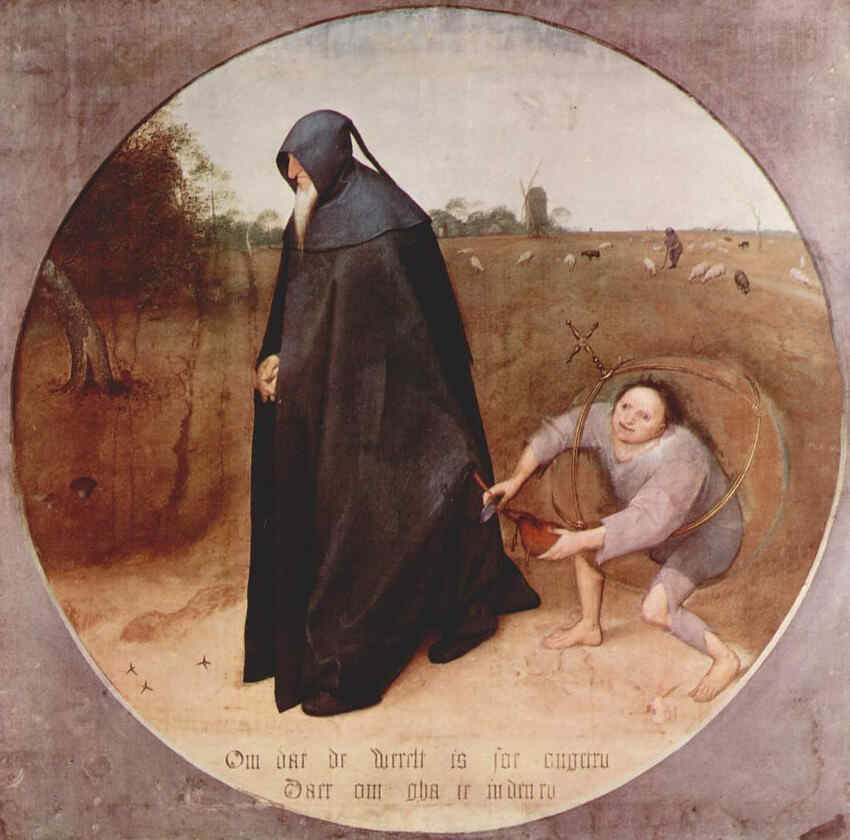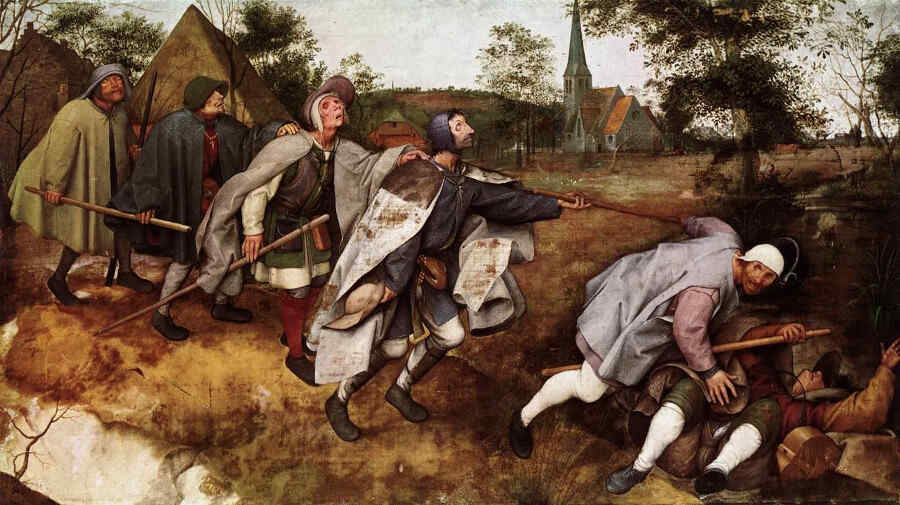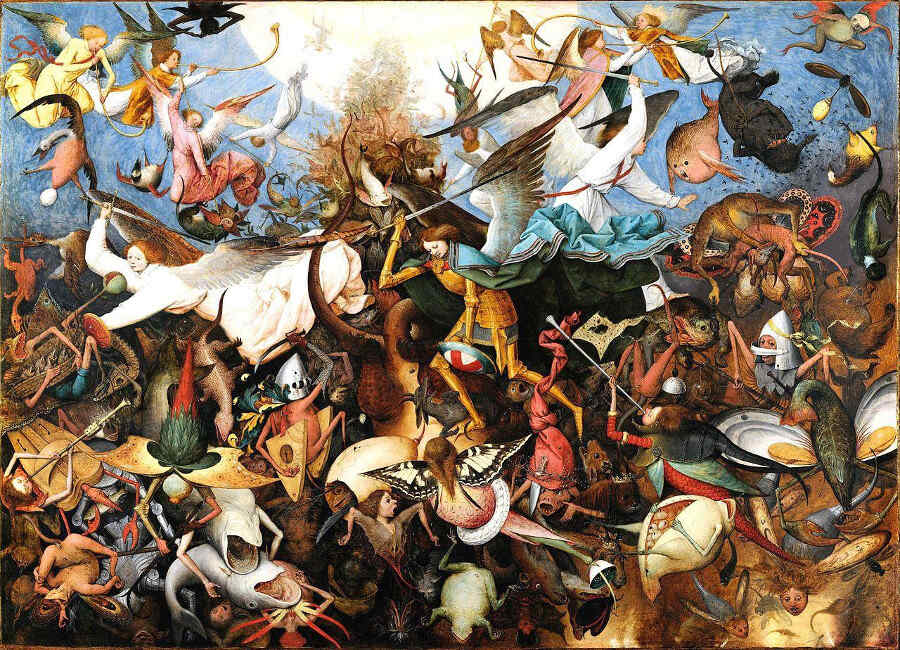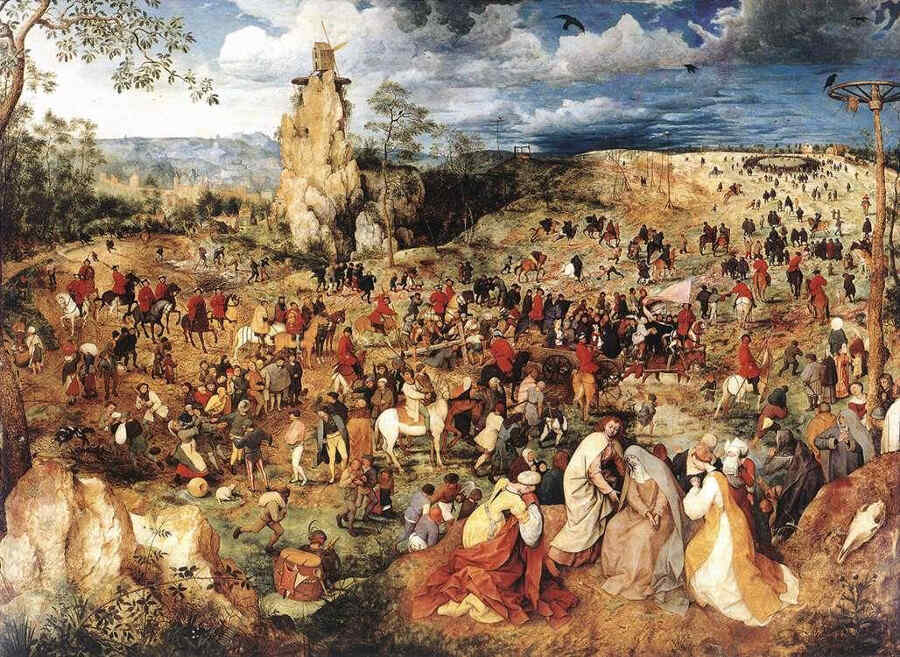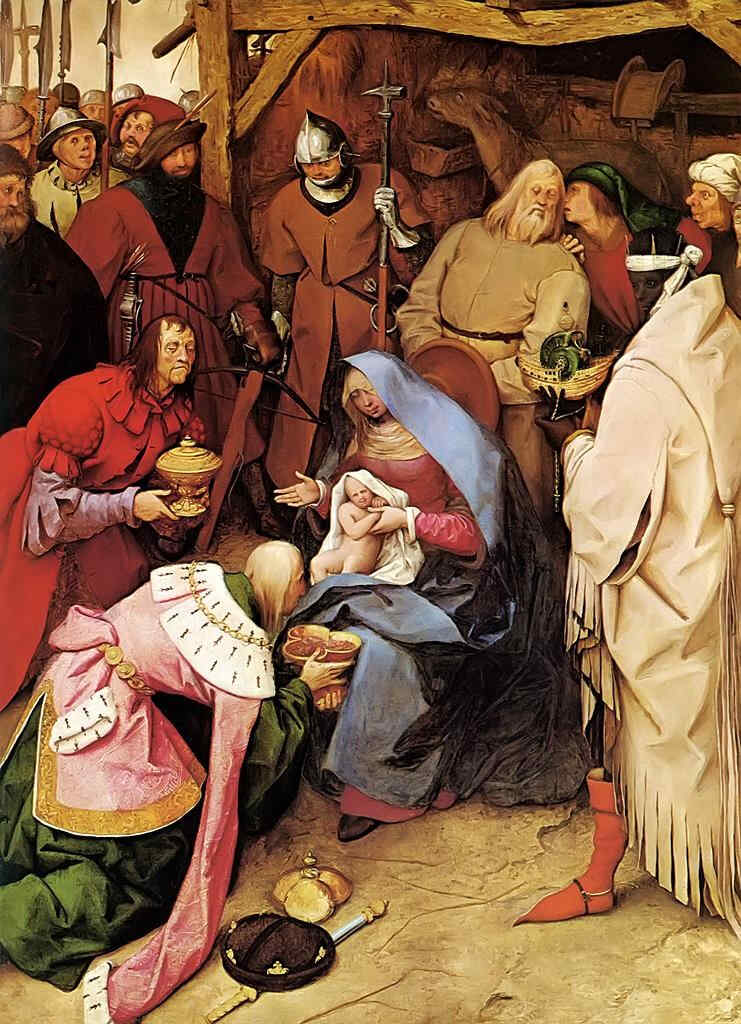| 159. The Mystery of Death: Cosmic Effects on the Human Members During Sleep
07 May 1915, Vienna Translator Unknown Rudolf Steiner |
|---|
| They must not set it in the summer, but in the winter, in the midwinter. This is Christmas. For this reason one sets Christmas and that which develops from it in the wintertime. This arose from a right knowledge of those who once arranged the Christian year. Out of esoteric truth Christmas was determined, not account of historical facts. For the human being, while he is embedded with his soul and spirit in the soul and spirit of the earth, is together with that most awake condition of the earth in the wintertime. |
| There are legends everywhere with the peoples that tell us how the especially talented human beings who experience no initiation but are endowed by their nature, by elemental forces working in them to be inspired, how these are inspired during the nights from Christmas Eve up to the Epiphany day, in thirteen winter nights. There is a very nice legend which was found in Norway not long ago, the legend of Olaf Åsteson who approaches the church at Christmas Eve and falls asleep. |
| 159. The Mystery of Death: Cosmic Effects on the Human Members During Sleep
07 May 1915, Vienna Translator Unknown Rudolf Steiner |
|---|
It must be my intention during these days to bring something home to our souls that is able to throw some light from the spiritual-scientific point of view on our big events. Therefore, it is also my task next Sunday to turn our sensations to certain points of view which can bring some light just in that which must now move our hearts and souls in the deepest sense. I would like to prepare the basis of that, directing your souls to certain powers and forces which have an effect in the historical existence of human beings which can be only recognised by those insights spiritual science can give and are not immediately discernible for the everyday consciousness. I want to point to developmental facts of human life, to more or less subconscious facts today which express themselves in the historical course of human life. We go out from the fact- you know it from the representation in my book How Does One Attain Knowledge of the Higher Worlds?—that what takes place in secrecy with every human being is recognised on successive levels of supersensible knowledge, of the so-called Imaginative knowledge, of the Inspirative knowledge and of the Intuitive knowledge. In the public lecture yesterday, I have already emphasised that one has always to keep in mind that the spiritual scientist who states something of the spiritual worlds on the basis of his knowledge of Imaginative, Inspirative and Intuitive perceptions, does not add anything that does not exist in the spiritual realms in which every human soul lives without being aware of them. The spiritual scientist only draws attention to that which always weaves and lives in the world and in which way the individual human soul is put in it. So that not only for somebody who has the intention to make his way into the current of esoteric experiences, but for every human soul the knowledge of them is important what is internal reality for it at any rate, only a reality which cannot be recognised by means of the everyday awareness of life. Thus I would like to go out from some facts of the Imaginative perception of the human nature generally. We observe daily that an event full of riddle, at least an event full of riddle for the external science intervenes rhythmically in our life by turns: the waking and sleeping states. We know for a long time that we belong with our four human members, the physical body, the etheric body, astral body and ego, in the waking state to the physical earth. We know that we are during sleep, from falling asleep up to waking, in the physical world only with our physical and etheric bodies that we withdraw as it were into the purely spiritual world with our astral bodies and egos. We can characterise that which presents itself now to the view of the spiritual researcher and say: the spiritual researcher looks at that which takes place, for example, constantly with the human being when he leaves his physical and etheric bodies while falling asleep and advances to the region of the higher world with his astral body and ego. The spiritual researcher simply watches what happens there with the human being—with every human being falling asleep. So that we can say: the spiritual researcher only observes what would show itself to every human soul if it could look down not in the dream state, but in the complete sleeping state at the world, so that it would find its physical and etheric bodies as something among the things of the world that is outside of it, of the sleeping soul. We must not imagine that we see that which we have left there, in which we have left behind our physical and etheric bodies, from the point of view of sleep as we see our physical surroundings with our physical eyes. We have to use our physical senses, our physical eyes to see our surroundings from waking up to falling asleep. We do not use them when we are beyond our physical and etheric bodies. If we became suddenly clairvoyant in the sleeping state, we would perceive nothing of that what surrounds us in the waking state, as it is in the waking state. We also do not perceive our physical and etheric bodies as we perceive the physical body looking into a mirror. It is quite wrong to believe that one looks at the physical and the etheric bodies as if one bends with his astral body and ego over the physical and etheric bodies. This is not the case. That what the Imaginative knowledge—we keep that in mind now: Imaginative knowledge—shows us that everything disappears to us, really disappears for the time being that we are used to see in the waking state. Also while we see our physical and etheric bodies, these are not like they are in the waking state, but our physical and etheric bodies appear to be enlarged to a world; they appear to us as connected with the whole earth. We are looking; we are aware that we are looking at the physical and etheric bodies. But we behold them, so that they are the only world for us at first. As well as we have mountains, rivers and clouds, the sun and stars et cetera round ourselves and look at them as our surroundings in the waking state, we look, while we look at our surroundings, when we are beyond our physical and etheric bodies, at our physical and etheric bodies as something that is extended to a world. We look at nothing else at all. We look at this as we look, otherwise, at the different things of our earth. We look there at our own physical nature like at a whole world. It is strange that we feel this world at which we look there falling asleep that we feel it as we feel the earth in spring when it produces the single green rungs, after it has been freed from the snowy cover of the winter, when it makes the vegetation grow on it again, when everything begins shooting and sprouting. Falling asleep we look at the physical and etheric bodies enlarged to a world, we look at them, so that we can feel them like a planet waking in spring. And this goes on through the whole sleeping state that way. What we see there in mighty pictures which really appear to us in the expansion of a planet, begins going to its summer like the earth is about to go towards its summer when the spring comes to an end. We experience the sleeping state that way if we experience it properly. We go in the sleeping state up to that point where we feel: our physical and etheric bodies bear something sprouting and shooting up to bloom, up to fruit; everywhere everything grows and blossoms. If I may express myself in detail, I have to say—for the Imaginative view that is paradoxical which shows itself that way, indeed: while looking physically we feel our earth's surface and experience its sprouting upwards, its growing and blooming in our consciousness. It is different when we now observe that from outside which takes action with our body and compare it with the plant world, as if its roots penetrate from above and grows with its flowers into our body. Thus we feel a completely reverse world, and the fruits are immersed. We learn then that with this immersion of the fruits is really expressed what becomes clear to us as the refreshment of sleep. We know thereby that our physical and etheric bodies receive the forces from the whole universe—because everything is forces at what we look Imaginatively,—while we go on sleeping. We watch forces coming from the universe which are active in the creation of plants. We see the universe driving a vegetation into our physical nature. We get the sure knowledge of the fact that we leave our body while falling asleep, because we take away our physical and etheric bodies from the effects of the cosmic forces with our egos and astral bodies from waking up to falling asleep. Because we ourselves go out, the whole universe is able to have an effect on our physical and etheric bodies. It sends elemental, not physical forces into us which express themselves in the described Imaginations. Thus a relation is produced between physical body and etheric body with the whole universe every time when we fall asleep. While we live in the waking state in the physical world, our physical and etheric bodies really live during sleep in that what we call the elemental world, the world of the bare forces which show themselves just in the described Imaginations. Where are we with our egos and astral bodies? We have often described, and it is also shown in different writings: we are with our egos and astral bodies in the world that has been described as the world of the higher hierarchies among the beings we call angeloi, archangeloi, archai et cetera. The egos and the astral bodies dive into these beings and their world. As well as we know about the beings of the animal, the plant, the mineral realms, when we are waking, and stand as human beings as it were above this world while we take up them in our thoughts, we are taken up like thoughts by the beings of the higher hierarchies. This is the significant matter that we can say: while here below our physical and etheric bodies are connected with the forces of the whole universe, we are thought from falling asleep up to waking, as if we were real beings, woven of thoughts and the will being; we are thought by the beings of the higher hierarchies.—As we think nature, the beings of the higher hierarchies think us. Hence, it is not right at all, exactly speaking, to say if one comes out of the physical body, he thinks the world. It is correct to say that one experiences to be thought by the world of the higher hierarchies. As the thought would have to feel itself during the waking life if it had consciousness, we would have to experience ourselves as the thoughts of the higher beings when we are outside our physical bodies. How do we experience the reawakening Imaginatively? While we prepare to wake up gradually, we experience that really as we experience—we can compare the Imagination again to the external nature—the winter coming with its forces destroying and paralysing the sprouting summer life. As well as the winter above the earth brings frost and cold and the destruction of the summer splendour, we ourselves dive into the physical body and etheric body. Waking up we prepare the decline of the forces which entered our physical body and etheric body really like a vegetation, even like an animal realm from the elemental world of the universe as the winter prepares the decline of the summer splendour. While we are awake, we really transport our physical and etheric bodies as a result of our presence into such a condition as the cosmic relations transport the earth when it is winter. We spread out the winter over our own physical and etheric bodies, entering them. You see at the same time that what one uses from physical points of view often as a comparison is not right for the spiritual view. Indeed, the human being already has the consciousness instinctively that he is connected with the whole universe and that his experience is a microcosmic image of the macrocosm. But the human being prefers to say when he really wants to compare something in his microcosmic life to the macrocosmic life: waking is like the spring coming in our life and the waking life is like the summer. The autumn is like becoming tired in the evening and sleeping is like the winter.—Just the reverse is reality. The summer life is the sleeping life and the winter life is the waking life. This is the truth of the matter. If the spiritual researcher investigates these relations, he finds that, while his ego and astral body rise to the realms of the higher hierarchies and are thought by the higher beings, not only the elemental world but also certain beings of the higher hierarchies work on his physical and etheric bodies. It is not only the elemental world which consists of forces, but real beings of the higher hierarchies, which work on our physical and etheric body. Something strange comes to light then that we can notice that we get to quite different conditions at the moment when we fall asleep as those in which we are while we are awake. As I have said, everything that can be expressed that way is based on the fact that the spiritual research permits us to watch the conditions of falling asleep and waking. Then it appears that also that being of the higher hierarchies has an effect on our physical and etheric bodies from waking up to falling asleep whom we must feel as the folk-soul to whom we belong. When the human being wakes up, he does not only dive into his physical and etheric bodies, but also into the processes which are carried out in his physical and etheric bodies by that which his folk-soul accomplishes. Something strange becomes apparent that the human being dives with falling asleep not only into those beings of the higher hierarchies who correspond to his individual development, but also into such spiritual beings we must regard as folk-souls. I ask to notice that, because it behoves us, who want to penetrate into spiritual science, to look deeper at the world interrelation than external perception can do it. Namely, the human being dives into the relationship to all folk-souls except his own folk-soul from falling asleep up to waking. Let us remember: during the waking state we live immersed in the spiritual facts which our own folk-soul carries out in our physical and etheric bodies. We live together with our own folk-soul from waking up to falling asleep. Beside our folk-soul all the folk-souls of the other peoples are existent in the world. With falling asleep we dive into the relations of the other folk-souls, not in a single other folk-soul—make a note of that,—but in what they accomplish together, what they accomplish as it were in association, as a society. Only the own folk-soul is taken away from this relationship during night. We cannot escape to have also a relationship with all those folk-souls which belong to the other peoples in whom we are not incarnated in a certain incarnation. Since, while we belong to our folk-soul in our waking state, we belong to the other folk-souls in the sleeping state, indeed, only to their sounding-together; while we belong in the waking state to the intentions of the individual folk-soul in whose area we are born in a certain incarnation. But there is a means to dive sleeping also into an other folk-soul. While we live in the normal awake state in our own folk-soul or its activity and in sleep in the harmony of the other folk-souls, we can dive sleeping in an individual folk-soul if we acquire a rather burning hatred of that which this other folk-soul accomplishes. So absurd it may sound, it is true—and we must be able in our movement to endure such a truth quietly: if the human being really feels burning hatred of a nation's area from his inner being, he condemns himself to sleep with the folk-soul of this nation's area at night, to be together with it. We just touch a truth where we can see that life begins to have a deep seriousness behind that veil which covers the spiritual worlds for the everyday view, and that it is quite uncomfortable in a certain respect to be a supporter of spiritual science. Since spiritual science begins to be most serious about circumstances which one thinks uncomfortable in life and over which we are generously helped to get because life does not reveal the truth in the everyday sense. Although we must stand, of course, in the external life on the ground which this external life requires from us, we have to be serious about such a principle if we rise in spiritual science to those realms where other characteristics of life begin. In my book How Does One Attain Knowledge of the Higher Worlds? I spoke of the fact that at the moment when one rises in the spiritual world—and every human being is in the spiritual world, it concerns here only to a knowledge of that which is there always,—then that comfortable unity of the human being stops in which we live in the physical world. The human being experiences some splits; apart from those splits which are mentioned there, and which one can observe after the meeting with the guardian of the threshold, some other splits happen, for example, that is of deep importance for the soul-life. We have to accept while we live in a certain incarnation in a certain nation that it is involved in the whole process of the earth's evolution. We have to do our duty for the nation in which we stand and we have to offer our love to it. It must be clear to us that we really belong, because we are also spiritual beings in our ego and astral body, to the whole humankind and feel with our impulses with the whole humankind. Spiritual science does not allow that we live in it in one-sidedness, but we must be able to harmonise these both sides completely. We have to realise that we harmonise—although we can love as a person of the present incarnation, even if we are spiritual scientists, our nation as intensely as somebody else is able to love his nation—this feeling with that which combines us with the whole humankind. And just spiritual science raises us to be brought together with the whole humankind because it shows us that we are connected with the whole humankind in our egos and astral bodies. Spiritual science demands more and more to harmonise contrasts from those who devote themselves to it with seriousness and dignity. It is bad if true spiritual science is confused with that unclear mystic activity which wants to combine the needs of the external, physical life with that for which we must rise diving into the spiritual world. Because unclear mysticism wants to bring in that everywhere in the everyday life what spiritual science only shows in the right light. That unclear mysticism will never be able to harmonise, for example, the love of the own nation with the love of the whole humankind, it leads to a hazy mystic cosmopolitism. One can compare it, as I have already done, to that which hazy theosophists say all the time about equality and about the equal validity of any religion. Indeed, you can say in the abstract: all religions contain the truth. But this is exactly the same, as if one says: pepper, salt and paprika and everything possible are on the table, and all are food ingredients. Sugar, pepper, salt, and paprika—everything is the same. So I give paprika once into the coffee and sugar into the soup, because they are all food ingredients. Exactly on the same point of logic are those who drivel in an unclear mysticism only about the uniform core of all religions instead of getting involved in the real being of any detail that appears in our earth development. It does not depend on emphasising always: all peoples are only expressions of the generally human, but that we recognise the specific tasks which are given to the individual peoples by their folk-souls. A key is given for that in the series of talks which was printed long ago, which was held several years before the outbreak of the war, which did not come into being under the influence of the war, which one cannot reproach that it originated under the impressions of the war: The Mission of the Individual Folk-Souls in Connection with the Germanic-Nordic Mythology. Just in our time it is important to call to mind such serious matters, so that the human being can find the harmony between general charity and patriotism. One does not need to shy away from characterising of any individual people, in so far as it is a people—the individual human being always rises up above his people. However, you can derive from my remarks that that has to take place without hatred, of course. Anybody does not recognise the real being of the individual plant if he hates the plant and describes what he feels as hatred. And also anybody cannot recognise the characteristics of a people if he describes what he hates of the people, or if he takes up that in the portrayal which comes from the emotions of hatred. Thus somebody who is able to rise up to the points of view of spiritual science has to be eager all the time to see the being of the world not in a uniform unity, but just in the harmony of a variety. The human being has to find the possibility to feel all possible warmth for his people, concerning which he needs not show less commitment than anybody who does not strive for spiritual science, and to combine, on the other side, what brings us together with the whole humankind as a big complete being. I said that we resume such matters the day after tomorrow. Now, however, I want to note that we take off that which brings us together with the single incarnation by our physical and etheric bodies at the same time, while we pass from our waking state into sleep and are thereby taken up in the beings of the higher hierarchies. So we take off our national being in sleep, too. We become only human beings, human beings with all the characteristics which we must have by that which we have acquired as human beings. If we look as spiritual scientist at that which happens to the human being, waking and sleeping, we perceive at the same time that in sleep the human being lives in the spiritual world with his ego and astral body, just as now also his physical and etheric bodies belong to the big world. The independent existence stops, which passes as it were in our skin, and we extend our selves to the big self. Take into account that we go through a summer state and a winter state always in the course of twenty-four hours. The earth goes also through this summer and winter states, but the earth goes through them in the cycle of the year. Why does the earth go through these states in the cycle of the year? Because the earth is a being as we are, only on another level of the hierarchies. The whole earth, if we look at it physically, as it is around us, is only the body of the earth; and as well as we carry our soul and spirit in ourselves, the earth also has its soul and spirit. Only that is the difference that we are awake and sleep in the course of twenty-four hours, and the earth is awake and sleeps in the cycle of the year. It is awake from the autumn up to the spring and sleeps during the summer. So that we can always say, actually when we live in the summertime: we live embedded in the sleeping earth.—When we live in the wintertime: we live embedded in the waking earth.—It does not hold true that the earth is awake in summer and sleeps in winter as we can say in the trivial comparison taken from everyday life. But it is correct that when autumn comes the earth wakes up as a psycho-spiritual being and is most awake in the midwinter. The earth spirit thinks in the midwinter the most and starts stopping its thinking bit by bit while spring is approaching; and it sleeps when the external life sprouts; in the summertime the earth spirit is sleeping. We as human beings are not only in connection with the body of the earth by our physical body, but also with the spirit of the earth. We know from various talks that the spirit we call the Spirit of Christ was united with the spirit of the earth by the Mystery of Golgotha. The Christ Spirit lives in the spirit of the earth since the Mystery of Golgotha. If the human beings want to commit a festival which should express that the Christ Spirit is in the earth spirit—in which time they have to set this festival? They must not set it in the summer, but in the winter, in the midwinter. This is Christmas. For this reason one sets Christmas and that which develops from it in the wintertime. This arose from a right knowledge of those who once arranged the Christian year. Out of esoteric truth Christmas was determined, not account of historical facts. For the human being, while he is embedded with his soul and spirit in the soul and spirit of the earth, is together with that most awake condition of the earth in the wintertime. There he lives in the waking earth. And what did the ancient peoples do about whom we know that they worked and got knowledge with the help of a kind of dreamlike clairvoyance? They must refer preferably to that which lives in the sleeping earth spirit when the earth spirit sleeps mostly, has withdrawn mostly to its sleeping state. There they have risen to that—in contrast to the modern humankind—which gave them the truth unconsciously, as it had to be for them. Hence, in the midsummer we find the St John's-tide festival with the peoples who belonged to the cult which scooped its knowledge from the more sleeping, dreamlike state. It is the summer festival in contrast to Christmas which is fitting for the modern humankind. What is determined so externally, and what our materialistic time does not understand at all, this actually has its deep bases in the spiritual reality. We live now in a time in which the human beings must start again thinking and feeling quite differently as it was the case in the past time. The past time had the task to bring the realm of materialistic thinking and feeling home to the human beings. And just the last centuries which the human souls lived through should bring them home to the materialistic thinking and feeling. The earth development had to go through the materialistic time. We do not do well to harshly criticise materialism. It had to come once in the earth development. But now we live in a time when materialism must be overcome again when spiritual beholding has to enter human souls again. This is the more or less bright or dark sensation of those who are attracted in their own souls to our spiritual-scientific attempts, to our spiritual-scientific world view. They just feel that now the time is there when one has consciously to take up this spiritual world, while the spiritual world was once seen in a dreamlike condition. Spiritual science is there for that. The past time was that of materialism. Because humankind had to dive into materialism, the strong impulse which takes up humankind again had to work just through the time of materialism. This is the Christ Impulse. When the Christ Impulse came into the earth evolution, the preparation already began. It came in the 14th, 15th centuries all the more. But when it approached, humankind already prepared itself to dive into materialism. The Christ Impulse was there as an objective fact in the world evolution, but the human beings of that time were not able to understand it least of all. Now we live in the time when one has to start to really understand it. What do we see, hence? We see a strange course of the Christ Impulse in the previous development. We see that this Christ Impulse when it has entered in the human development as a result of the Mystery of Golgotha is not understood at all by the human beings. Let us try once to form an idea about that which people did in their cleverness. Just in the first and the following centuries, after the Christ Impulse had entered, we find that any possible theological system forms, that the people argue about how they have to imagine the Trinity et cetera. We see an infinite theological squabbling through centuries, and it would probably be the worst way to want to understand the Christ Impulse today from this theological squabbling how the Christ Impulse has worked during these centuries. The people who quarrelled there about its understanding have also understood nothing of the way the Christ Impulse stands in the evolution. Let us try to realise how this impulse really worked once. I may give you single facts. I take the event that happened in the fourth century A.D., in 312, on the 28th October, which determined the later map of Europe completely: this was that Constantine, who was called “the Great,” the son of Constantius Chlorus, moved against Maxentius, the ruler of Rome, and triumphed over him. That is why Christianity also was victorious in the western world in an external way. Constantine declared Christianity the state religion et cetera. However, did he act out of his cleverness? Did that happen, which happened in those days, out of cleverness? We cannot say this. What happened then, actually? When Maxentius, the ruler of Rome, got to know that Constantine was approaching, he asked the Sibylline Books at first. That means that he set about understanding the world phenomena in a dreamlike way. He got the statement out of these books that somebody would accomplish the right action if he left the city as a ruler of Rome and went into battle outside Rome. This was something most unusual that one could think. Because Constantine had a much smaller army than Maxentius and could have achieved nothing without doubt if Maxentius had remained in Rome. But Maxentius moved out of Rome on the advice of the Sibylline Books. However, also in the army of Constantine the generals were not victorious. Rather Constantine had a dream showing him the symbol of Christ. On account of this dream he made his armies carry the cross as the symbol of Christ. He made his behaviour dependent on that which the dream had revealed to him. This battle by which the map of Europe was determined at that time was not decided by means of human cleverness, nor did the generals triumph, but dreams and prophecies. Everything in Europe would have changed if in those days the matters had taken place according to the consciousness of the human beings and not according to that what worked out of the subconsciousness what the human beings just did not know. The theologians have argued about the question who is Christ, whether He is born with the Father in eternity, whether He is born in time whether He had the same validity as the Father et cetera. In their thoughts nothing of the Christ Impulse was included. But it worked within the human beings in the subconscious regions. It worked not by the egos, but by the astral bodies. The Christ Impulse was reality and worked without human beings understanding it. This is the important, essential part. The working of Christ is so independent of that what human beings understood of it like the course of a thunderstorm is independent of that what human beings have learnt about electricity or in the physical laboratory. Now it is the time to immerse oneself consciously in the effectiveness of the Christ Impulse. But Christ was always working as a force in the historical events. We go over from this to another, later example. However, there we have to remember of what I explained to you. For the time when materialism approached it is important to know that the human being, while he wants to immerse himself in the spiritual world, must do that best of all in the wintertime. Hence, the view arises everywhere for this time that at the mentioned nights of midwinter especially talented people are endowed with inspirations from the spiritual world. There are legends everywhere with the peoples that tell us how the especially talented human beings who experience no initiation but are endowed by their nature, by elemental forces working in them to be inspired, how these are inspired during the nights from Christmas Eve up to the Epiphany day, in thirteen winter nights. There is a very nice legend which was found in Norway not long ago, the legend of Olaf Åsteson who approaches the church at Christmas Eve and falls asleep. He sleeps up to the sixth January; and when he wakes up, he knows how to tell in imaginations about that which has taken place in the soul land, in the realm of spirits, as we call it. He expresses it in pictures, but he has experienced it through these thirteen nights. Such legends are found everywhere. They are just not that which one calls legends today. Indeed, there have always been endowed human beings who have gone through a physical initiation by elemental forces working in them which the human being can go through if he carefully follows the instructions of the initiatory path by his will. So that we can say: in the time of materialism there could always be human beings who could unite with the earth spirit and receive inspirations when the earth spirit is most awake, in the midwinter. This was also the time when the Christ Impulse was able to work which united with the earth. Imagine especially endowed souls who are receptive for the spiritual world. It became apparent to them that they just got the impulses to that what they had to accomplish from the spiritual world in these thirteen nights up to the sixth January. This had to appear and appeared always again in little and big examples that there were human beings in the historical course who were inclined spiritually so that if the right point in time entered when they lived through those thirteen nights in winter the spiritual impulse—and in this time the Christ Impulse in particular—came into them. Initiations by nature, initiations which did not take place by means of conscious work have been carried out in the time of materialism always the easiest in these thirteen nights. We can find out that where such initiations appeared they took place in these thirteen nights. And now we have a fact that even those will accept, who have only a little good will to recognise the spiritual world—the fewest people have this today,—that spiritual forces entered the historical course in the 15th century in the form of a virgin, the Maid of Orleans, as can be proved. You can verify this also historically that again the whole map of Europe was arranged differently, because the Maid of Orleans helped the French against the English at that time. Who thinks about it can find out that everything would have formed differently after that what human beings are able to do unless the shepherd girl had intervened—and in this shepherd girl just the forces of the spiritual world. The Maid of Orleans was only the instrument for that which was caused in those days. The Christ Impulse worked in her. However, she had to have a physical initiation for that—and this physical initiation had to be carried out the best in the thirteen nights up to the sixth January. The Maid of Orleans had to get a sleeping state in the time from the 24th December to the sixth January when she would have been especially receptive for the spiritual influence which can be there just in this time. So that one had to demand that the Maid of Orleans would have experienced the time in a not quite conscious state from the 24th December to the sixth January and would have got the Christ Impulse.—Yes, the Maid of Orleans went through this state in a quite striking way. One cannot go through it more strikingly, than when one is still in that sleeping state in which somebody is before his birth, in the last times which he/she spends as a child before the birth in the body of the mother. The external consciousness is not able, of course, to take up anything. There is a sleeping state, and if it is the end of the time in the womb, it is the ripest condition of the internal-motherly sleep. Indeed, the Maid of Orleans is born on the sixth January. This is the great secret of the Maid of Orleans that it went through an initiation by nature during thirteen days, which preceded her birth. That was why especially sensitive people gathered on that sixth January, when the Maid of Orleans was born in the village, and said that something quite particular must have happened. They sensed that something particular had come to the village. The Maid of Orleans was born. She worked through an initiation by nature in that sleeping state which she experienced in the body of the mother in the last time before her birth. There we see the spiritual beings working behind the threshold of that which takes place for the human consciousness, which are under this threshold of consciousness. We see what history can mean if it counts only on that which is given in documents and external communications. The gods go differently through the course of history. The gods work by other means and in other ways. They put a Maid of Orleans into life who is able because of her special karma of this incarnation to take up the Christ Impulse and to work with it. They allow the Christ Impulse to flow in at the right moment. Of course, both were right for that: the special individual karma of the Maid of Orleans had to be added. Not any child that is born on the sixth January could accomplish the same. Thus we can really say: the Christ Impulse worked in the human being using those forces which did not become clear to these human beings. Only today do we live in the time in which we must consciously take up that which used another way for centuries than the conscious way to be effective in history. I wanted to arouse a feeling in your souls how the subconscious powers work definitely, what external history is which can be studied according to the external documents, that it is trivialities. It is good if one does such a study in particular in our time. We see, nevertheless, just in our time something great, something immense, something valiant, combined with sacrificial actions, occurring. But we see this great that takes place in our time, being really accompanied from the consequence of the extreme materialism, from that consequence which tries to explain everything that takes place in our time by means of bare external circumstances. This finds expression in the fact that one nation puts the blame on the other nation for the present events and wants to judge everything externally, so that one finds the guilt with the other for that which takes place. Also for our time the causes and reasons of the events are right down at the bottom in the subconscious processes. We will speak about that the day after tomorrow. Our time will be suitable—also because of the bloody events—to remind the human beings of spiritual impulses of cognition. If once again peace is in the countries waging war today, one will realise that one cannot explain such immense wars of world history out of external causes. One will find out that one cannot explain them. Today people still say, especially the clever ones: nobody is allowed to speak about everything that has caused this war, history will speak about that.—They regard themselves as especially prudent who say there: only in fifty, in hundred years history will speak the right thing about that. What one calls history today will never explain the causes of these events; however, one will see that from the historical consideration the causes cannot be fathomed. But other support will be there. An esoteric observation of our present just shows this. What is one of the most remarkable facts in this destiny-burdened time? Oh, one of the most remarkable facts is without doubt this that so countless human beings go through the gate of death in their youth. We know what happens with the human being when he goes through the gate of death. We know that he comes out of the physical body with his etheric body, astral body and ego and that he takes off his etheric body after relatively short time and makes his journey with the essence of the etheric body. However, you can imagine that a difference must be between an etheric body, which is taken off between the twentieth and thirtieth years which could still have supplied the functions of human life for decades, and an etheric body, which is taken off at the later age. Yes, there is a big difference. If a human being dies because of age or illness, the etheric body has fulfilled its task. But countless young human beings go now through the gate of death, and their etheric bodies could not yet fulfil everything that they could fulfil. I would like to show you at a concrete example how it is in a certain way with such etheric bodies that are torn away by force from the physical bodies. One could give many examples, of course. But today I want to give you an example which we ourselves experienced in Dornach in autumn. We experienced it at the site of our construction. A family which lives near the construction had a little son of seven years—a family which belongs to our anthroposophical circle. It was a dear boy of seven years, really a boon boy. He was so well-behaved that when his father had gone to war the seven-year-old Theo said to his mother: now I must be especially diligent, because I must help you where the father has helped you. One evening after a lecture, a person belonging to our circle came and reported that this little Theo has disappeared since the evening. One could imagine nothing but that he has had an accident. A removal van had driven in that evening by what one calls in the external life chance at a place where for years indeed no van has gone, and since that time also not. Here the carriage had tipped over. The little Theo had been in that small house which one calls the canteen because there our friends who work on the construction are supplied with food. Strangely enough—he would have left sooner—he was detained by somebody, and while he wanted to go out through a door through which he would have gone on a certain way, this time he had to go through another door, and he thereby passed the removal van, just when the removal van toppled over. The van fell on him. This is one of those examples where we see clearly karma working. I often used the simple comparison to show how often cause and effect are totally confused: we see a person going along a river. Suddenly we see the person falling into the river. We go and find a stone lying where the person has fallen. The person is drawn out of the water. He is already dead. If one does not go on examining the matter, one tells the matter with the best external conscience in the following way: the man fell over the stone and then into the river, and drowned.—One would have only needed to examine, and one would have thought that death did not happen because the person fell into the water, but the person fell into the water because he was dead; he had got a heart attack. Just the opposite happened as one imagines. You see how easy it is to confuse cause and effect everywhere in life. However, in the usual science this happens everywhere that causes and effects are confused. Of course, here is the case that this Theo just caused it. He was the cause that the van passed at this time, he steered it to himself. You have to imagine this as the real secret of the matter. But now I will go on: a human child is killed in an accident in the very first blossom of life. If anybody is combined wholeheartedly with the construction work in Dornach and has the possibility at the same time to observe what is working on this construction, then one can say: this etheric body which was separated by force from the little Theo is in the atmosphere of the construction. Thus one gains the best Inspirative forces for the construction combining his own soul with that what lives, expanded to a little world, in the atmosphere of the construction. Never will I hesitate before confessing unreservedly that I have to thank for much that I could find for our construction in that time that I directed my soul to the etheric body of the little Theo working in the atmosphere of the construction. Thus just the connections are in the world. The real individuality of this human being goes on, but the etheric body remains which could have still supplied a human life for many decades. Imagine the number of the unused etheric bodies which are floating there in the spiritual atmosphere over us and over those who will also live after us. Those etheric bodies which are left behind by those who went in young age through the gate of death in our destiny-burdened time. We do not speak of the way the individualities go through, but we speak of the fact that an own spiritual atmosphere is created by these etheric bodies. The human beings, who will live there, will live in this atmosphere. They will be submerged into a spiritual atmosphere which is filled with these etheric bodies which sacrificed their lives, because just in our time humankind can advance by these events. But it will be necessary that one feels what these etheric bodies intend which are the best inspirators of the future humankind. A good time of spiritualism comes if human beings show understanding, internal heart understanding for that what these etheric bodies want to say to them. All these etheric bodies are assistants of the spiritual impetus of the future. That is why it is so important that there are souls who are able to feel that what comes into the atmosphere of the future by these etheric bodies. You do not learn anything about the nature of the etheric bodies that you can tell: the human being consists of physical body, etheric body, astral body and ego, but that you also know such a secret of the effective spirituality of the etheric bodies as it is there in future. Those have to prepare themselves who already tend to stand up for spiritual science, to receive that which these etheric bodies want to say. If we turn our souls to the spiritual world, we prepare ourselves and those who come after us to feel that which the legacy, the etheric legacy of the dead wants from the future humankind. If human souls are stimulated by spiritual science, so that they are able to direct their spiritual senses to the spiritual worlds, then something great and immense will certainly sprout up as an effect of the blood, of the courage, of the sufferings, and of the sacrifices. Hence, I would like to summarise at the end of this consideration in some words that what may now inspire, invigorate us if we as spiritual-scientific supporters direct our senses to the big, destiny-burdened events of our time.
|
| 264. The History of the Esoteric School 1904–1914, Volume One: The Nature and Work of the Masters V
28 Dec 1905, Berlin Rudolf Steiner |
|---|
| Mantras create vibrations of the word that correspond to the vibrations of thought in the Akasha matter. About the Christmas saying “Gloria in excelsis Deo et pax hominibus bonae voluntatis”: it has a mantric effect in Latin. |
| 264. The History of the Esoteric School 1904–1914, Volume One: The Nature and Work of the Masters V
28 Dec 1905, Berlin Rudolf Steiner |
|---|
Memoranda from Eugenie von Bredow There were two things he wanted to tell us today about mantrams and about the most important instructions that the exalted Master Morya gives his disciples. There are nine qualities that are inherent in the masters:
He demands five things from us:
The mind must be purified. Love must lose all unchastity and become divine. The memory, in order to become objective, should not hold anything that could awaken prejudice. The mind should be clear and the will should be extinguished where it is selfish, but should be kindled where it serves as an instrument of the masters. Mantras create vibrations of the word that correspond to the vibrations of thought in the Akasha matter. About the Christmas saying “Gloria in excelsis Deo et pax hominibus bonae voluntatis”: it has a mantric effect in Latin. Then he said another Indian mantram with a similar content, with which he also concluded. The festivals are nodal points set by the masters. New Year too. Therefore elevation is important. |
| 263. Correspondence with Edith Maryon 1912–1924: Letter to Edith Maryon
02 Sep 1923, London Rudolf Steiner |
|---|
| There was a theater performance (Woman Knows All) - Sunday morning here was a meeting of the branch for the founding of the English Society, like the Swiss and Norwegians, and so on, which will then merge into the International Anthroposophical Society in Dornach next Christmas. Sunday afternoon branch lecture. Monday and Tuesday evening the medical lectures. So everything is done. |
| 263. Correspondence with Edith Maryon 1912–1924: Letter to Edith Maryon
02 Sep 1923, London Rudolf Steiner |
|---|
163Rudolf Steiner to Edith Maryon London W, Harley Street c/o Dr. Larkins My dear Edith Maryon! I have now (Monday evening) also given my last lecture on medicine here in London; tonight there is a eurythmy performance here arranged by Rosenkrantz, and then on Wednesday I start my journey back home. I have to be in Stuttgart, but only for a day. We will see how quickly the journey goes now because of the trains. But there should be no obstacles in this direction. Everything has been fine. I am completely healthy. Yesterday I was at McMillan's Nursery School. That is something extraordinarily good. I will tell about it. The Penmaenmawr-London trip went very well. Saturday evening was the only free evening. There was a theater performance (Woman Knows All) - Sunday morning here was a meeting of the branch for the founding of the English Society, like the Swiss and Norwegians, and so on, which will then merge into the International Anthroposophical Society in Dornach next Christmas. Sunday afternoon branch lecture. Monday and Tuesday evening the medical lectures. So everything is done. I am looking forward to Dornach, hope that my recovery will progress well and thank you for the letter to London here, send the warmest greetings and thoughts Rudolf Steiner |
| 263. Correspondence with Edith Maryon 1912–1924: Letter to Edith Maryon
07 Jun 1922, Vienna Rudolf Steiner |
|---|
| I take the view that everything should be left to the local committee and not, for example, interfered with, as was done at Christmas in Dornach. There are always tendencies in this direction that are not good. I am writing this between two lectures by Blümel and Baravalle, and so I can only send very best regards from Rudolf Steiner |
| 263. Correspondence with Edith Maryon 1912–1924: Letter to Edith Maryon
07 Jun 1922, Vienna Rudolf Steiner |
|---|
107Rudolf Steiner to Edith Maryon Vienna, 7 June 1922 My dear Edith Maryon! Thank you for your letter, which gave me great pleasure. So far, everything has gone well here, with the exception of the fact – as I already mentioned – that the follow-up to Kolisko's lecture has completely failed to materialize in scientific circles, especially among doctors. What happened during this lecture was not exaggerated, but – on the contrary – was even presented quite mildly by the newspapers this time. Otherwise, however, things have gone quite well so far. I cannot be present at the discussions this time. There is too much work to be done. But I am also doing well physically and hope that this is also the case there. I will be very happy to be back in our studio. — The series of the first five lectures has ended. Today the second series begins with “Time and its Social Demands”. The eurythmy performance was also well received here. I am being asked many questions about whether someone should do this or that for the event in Oxford. I take the view that everything should be left to the local committee and not, for example, interfered with, as was done at Christmas in Dornach. There are always tendencies in this direction that are not good. I am writing this between two lectures by Blümel and Baravalle, and so I can only send very best regards from Rudolf Steiner |
| 161. Brunetto Latini
30 Jan 1915, Dornach Translated by George Adams Rudolf Steiner |
|---|
| Recently, you will remember, at an appropriate season we spoke of the story of Olaf Asteson, who slept through the days after Christmas and did not reawaken until the day of the Three Kings, the 6th of January. In this connection we remarked, that in the season when the outer physical rays of the Sun have the least power, the spiritual power enveloping the Earth is greatest. Therefore the Christmas Festival is rightly placed in the season when the darkness is physically greatest. Then it is that illumination comes over the soul that is capable of illumination. |
| She was borne by her mother, so as to pass through the Christmas season in the body of her mother in the last thirteen days of her embryo life. For she was born on the 6th January. |
| 161. Brunetto Latini
30 Jan 1915, Dornach Translated by George Adams Rudolf Steiner |
|---|
The manifold studies which we have recently pursued have shown that all true Art eventually issues from the secrets of Initiation. We have frequently spoken of this fact, and we have indicated many examples. Great epochs of Art, when artistic deeds raying far and wide over humanity have taken place, derive their sources again and again from Initiation. This shows how Art brings spiritual life into the physical. Initiation opens out to man the possibility to advance from the physical plane into the spiritual worlds. That which can then be experienced, more or less consciously in spiritual worlds, true Art carries down into the physical forms wherein it finds expression. But the inner connection of the facts to which we are here referring, cannot be fully penetrated unless we also bear in mind that the last few centuries of evolution have in reality eclipsed—made imperceptible to the vast majority of men—things that were not by any means a secret to the same extent, five, six or seven centuries ago, as they are today for those who call themselves civilised mankind. To point to one significant example, we may choose a work of art which does indeed ray out over the ages—the Divine Comedy of Dante. No one who lets the Divine Comedy work upon his soul will fail to perceive the spiritual note that pervades what Dante has here expressed. Nowadays, if it be a question of studying how Dante arrived at the magnificent pictures of his poem, people will readily be inclined to use the word fancy or imagination. Dante, they say, was filled with artistic imagination. They are content to leave it at that. Needless to say, I shall not deny that artistic imagination was at work in Dante. But even in the light of outer history it would be wrong to suppose that he created the whole of his magnificent poem, as it were out of the void, out of mere fancy. Dante had a friend and teacher Brunetto Latini, who, as I think you will recognise from what we shall presently say, may be described as an Initiate in the true sense of the word. It is this connection between Dante and a man who was initiated according to the conditions of his time, which we, in the light of our ideas, must fundamentally point out. One thing at any rate was known to that time. They knew that man, to reach the secrets of existence, must take the path that leads through his own re-birth. This above all was fully and absolutely living in that time: the recognition that the path to knowledge of the world must necessarily lead through self-knowledge. Self-knowledge, however, must not be thought of in the superficial sense in which people often speak of it today. Who does not think himself able to know about himself? By way of introduction, let me bring home to you with an example, how difficult self-knowledge is even in the most elementary matters. How little a man is inclined to set out for what can truly be called self-knowledge! I have here a book by a famous philosopher of today—Dr. Ernst Mach, who has written a number of works highly characteristic of the present time. At the very beginning of his book on the Analysis of Sensations, dealing with the connections of the physical and the psychical, the following remark occurs: ‘As a young man,’ he writes, ‘I was once going along the street when I saw a face which was highly distasteful to me. How astonished I was when I observed that it was my own face which I had seen by the chance combination of two mirrors in a shop-window!’ Thus, as he went along the street, his karma led him past a shop where two mirrors were so inclined that he could see himself. He saw the face, highly distasteful to him, and then discovered that it was his own. We see that even with respect to this most outer aspect, it is not quite easy for us to acquire the most elementary self-knowledge. But Mach makes another remark as well. He becomes a University professor; so he has some idea of the appearance of a scholar or a pedant. ‘Not long ago,’ he writes, ‘tired after a long railway journey, I got into an omnibus. Simultaneously another man entered from the opposite side. What a wretched-looking pedant, I said to myself, and presently discovered that I had only seen myself, for a looking-glass was hanging opposite the entrance.’ ‘Thus,’ he continues by way of explanation, ‘the class-type was far more familiar to me than my own special type.’ He had formed an idea in his mind of the typical pedant. He knew that the man, getting in opposite, looked rather like an out-of-work schoolmaster. Not until afterwards did he discover that it was himself. A pretty example of the often very deficient self-knowledge of men, even as regards their outer form. As to the knowledge of the soul, it is a great deal more difficult. Nevertheless, personal and individual self-knowledge is none other than the first elementary beginning of the path which leads through man into the universal secrets of existence. When we regard the world externally, here in the physical world we have before us only that which belongs to the outermost nature of man—to the system of his physical body. Look out over the widespread environment which we can see on the physical horizon of this world; there we have everything that is related to our own outer body—the physical human body. We know that this is only a portion of our total being. Behind it is the etheric body; but man in the first place is unaware of all that in his environment which resembles his etheric body. Still less does he surmise that which resembles his astral body and his Ego. Man, to begin with, on the Earth, is for himself the only example—the only document he has brought over from the spiritual world. Therefore he must pass through this, the document of his own being. He must go through himself. This was always known to those who experienced anything of Initiation. Thus it was known to Brunetto Latini, teacher and friend of Dante. Moreover, it is characteristic how Brunetto Latini's Initiation, as we may call it, was eventually brought about. It happened by a particular event. That is what frequently occurs. Fundamentally speaking, every one who sets his foot on the path of spiritual science is waiting for the portal of the spiritual world to be opened to him sooner or later, as indeed it will be. It may be—indeed it often is so—that the entry to the spiritual world takes place by degrees. Then we grow slowly into the spiritual world. Nevertheless, very, very frequently it happens that the world is opened to us as by a kind of shock which breaks in upon our life—by a sudden and unexpected event. Thus, as Brunetto Latini himself relates, he had been sent as ambassador to the ruler of Castile. On his way back he learned that his party, the Guelphs, had been expelled from Florence. Florence had utterly changed during his absence. This message brought him into confusion. Such confusion of our state of soul which is suited to the outer physical world, often goes hand-in-hand with what becomes the starting-point for an entry into the spiritual world. Brunetto Latini goes on to relate how as a result of his confusion, instead of riding home, he rode into a neighbouring forest, quite unaware of what he was doing (or so at any rate he afterwards believed when he looked back on it). Then, when he came to himself, he had a strange and unwanted impression. He saw no longer the ordinary world of the physical plane around him, but something that looked like an immense mountain. He did not come to himself again in that consciousness which normally confronts the physical world. He came to consciousness over against quite another world than that which was physically there around him. There was an immense mountain; but these things were such that they came and went—came into being and passed away again. There at the side of the mountain stood a woman, according to whose commands that which arose, arose, and that which passed away, passed away again. Brunetto Latini now beheld the laws and principles of Nature's working in the forms of Imagination. All Nature's laws—the living and creative essence of Nature herself—came before him in an Imagination, in the figure of a woman who gave her orders for all these things to arise and pass away again. We must imagine ourselves living in the time of the thirteenth, fourteenth century, when the natural scientific way of thought was slowly entering. In later times, men spoke abstractly of the Laws of Nature; they would on no account imagine that there was any reality of being behind the totality of Nature's laws. Brunetto Latini, however, saw it in the form of Imagination, as a woman, out of whose spirit proceeded all that was subsequently felt as abstract Laws of Nature, like a Word that held sway throughout this Nature, which stood before him in living Imagination. This woman, he relates, then bade him deepen the forces of his soul; so would he enter more and more deeply into himself. Here it is interesting. Raying out over him her forces, as it were, she gives him the possibility to enter more and more deeply into himself. He dives down into his own being, and the sequence he now indicates is indeed, under certain conditions, the true sequence of Initiation. The first thing, he tells us, which he now learned to know were the forces of the soul. Diving down into himself, man does indeed learn to know what otherwise remains unconscious in him—the forces of his soul. This recognition of his own soul-forces is a thing from which man will often flee, when he draws near to it. For when we perceive the forces of the soul, it often seems to us that we say to ourselves: ‘What an unsympathetic soul that is!’ We do not like this feeling, any more than the worthy professor did when he saw his own form, which was distasteful to him. We do not want to see. For with the chorus of the soul's forces we often see many a thing we have within us, which we by no means attribute to ourselves in ordinary life. We see it as something that is at work in the totality of our own being—enhancing our being, or making it smaller; making us of greater or lesser value for the Universe. Thus, to begin with, we rise into the soul-forces. At the next stage, we experience the four temperaments. There it becomes clear to us how we are woven together, of the choleric, melancholic, sanguine, and phlegmatic, and how this weaving together lies deeper down than the soul-forces. Then, when we have gone through the temperaments, we come to what may be called the five senses—in the occult sense. For in the way man ordinarily speaks of the five senses, he only knows them from outside. You cannot learn to know the senses inwardly till you have descended through the temperaments into the deeper regions of your own self. Then you behold the eyes, the ears, the other senses from within. You experience your own eyes, for instance, or your ears—filling them from within. You must imagine it thus. Just as you came into this hall through this door, and perceived the objects and persons that were already here, so when you undergo this descent into yourself you come into the region of your eyes or your ears. There you perceive how the forces are working from within outward, to bring about your seeing and your hearing. You perceive an altogether complicated world, of which a man who only knows the outer physical plane has no idea at all. Some, no doubt, will say: ‘Maybe, but this world of the eyes and the ears will not impress me greatly. The world of the physical plane which I have around me here is great, and the world of the eyes and ears is very small. I should be gazing into a minute world.’ That, however, is maya. What you envisage when you are within your ears or within your eyes is far greater, fuller in content, than the outer physical world. You have a far more abundant world around you there. Then and then only, when you have gone through this region, you come into the realm of the four elements. We have already spoken of all the properties of the several elements; but it is only at this stage that you feel really within them—within the earthy, the watery, the airy, and the element of warmth. Man ordinarily knows his senses from without. Here now he learns to know them from within. Consciously entering into the eye from within, he then breaks through the eye, and breaking through the eye comes into the four elements. But he can likewise break through the ear, or the sense of taste. By these four elements he is perpetually surrounded, only he does not know what they are inwardly. He cannot see it with outer organs of sense. He must first get out of the sense-organs—albeit, get out of them from within. He must leave them again, as though by a gateway. He must get out, through his eye or his ear. So he slips through—through the eye, through the ear—and comes into the region of the elements. And in the region of the elements he learns to know all the spiritual beings who are living there—the manifold Nature-spirits, and Beings who belong to the Hierarchies nearest to man. Then, going on and on, he comes into the region of the seven Planets. He is already farther outside, and learns to know what is creatively connected with man, in the great Universe. And then at last he has to cross Oceanos—the great Ocean, as it has always been called.
What does this passing through the ocean signify? Man can approach the planets while with the last portion of his soul's being he still remains within the physical. But when he thus goes inward through the gates of the senses, eventually he must take with him the very last relics of his soul, so that he may consciously enter the condition in which he is normally only in sleep. Ordinarily, when he is with the planets, he still remains in the body with a portion, as it were, with a fragment of his soul. But when he draws even this last out of the body, it seems to him as though he were floating through the universal ocean of spiritual being. All this, Brunetto Latini undergoes. He tells how he undertook one after another of these steps, at the behest of the woman who appeared to him in his Imaginative cognition. Then she instructed him that he must go still farther. This, however, was at a particular moment, which again is highly characteristic. Think of the situation. Perplexed, at a loss on account of what has happened in his paternal city, he rides into a forest. He comes to himself again, but this awakening leads him not into the physical world. It leads him through all the regions which we have here described. Then, however, the moment arises when, not by accident, not by mere chance, but by the definite summons of this woman he sees himself in the forest once more. Having undergone all these things, having passed through the soul-forces and the temperaments and through the senses outward into the elemental world, where he already perceived abundant spiritual life; having perceived the seven planets, and through them the higher Hierarchies, circle on circle; having felt himself at length not on the solid ground but swimming as it were, swimming through the great ocean; now he awakens again in the physical world. That is the very significant thing we recognise in all these Initiations. The disciple passes through a complete cycle and returns again into the physical world. Having lived through all this, Brunetto Latini feels himself once more in his forest. Now he is really surrounded by all that is physically about him. And anon the woman is there again at his side, albeit he now has the physical forest around him. She tells him to ride on towards the right, and she gives him instruction, how he shall come to Philosophy and to the four Virtues of man, and to the knowledge of the God of Love. Mark what a significant truth lies behind these things! A man of today will be quick enough with his reply: Philosophy—with that I am familiar! I have studied the whole history of philosophy. I know what philosophy is, and what it teaches. As to the four Virtues—Plato already named them: Wisdom, Courage, Balance or Moderation, and Justice. And the God of Love, who does not know of Him! You need only read the four Gospels. The man of today is familiar with all these things. But it is precisely the characteristic of spiritual knowledge: we begin to see that we do not really know all these things. We must first go through the understanding of the spiritual world and then return to what the physical provides. Then only do we understand the physical world. If Brunetto Latini were to arise again today and a very learned man of our time were to approach him—a learned professor of philosophy, a famous man, let us assume—and were to say: ‘I am familiar with the whole range of philosophy,’ Brunetto Latini would answer: ‘Yes, yes, no doubt you are, but in reality you know nothing of it. You must first learn to know the aspect of the super-sensible worlds, you must know what things are like in the super-sensible. Then you can come back again to philosophy, and it will be something quite new to you. Then only will you begin to divine what you now imagine that you know quite well.’ The same thing may be put in another way. After all, who would not think it absurd! ... A famous thinker of our time writes a philosophic book. Surely then he must understand it. How should he not understand what he himself has written? ... And yet, it is literally true: he may have written the book and may yet understand nothing of what he has written. It is not at all difficult nowadays to write a book. Books almost write themselves. One pieces together the things one has learned to repeat. One need not penetrate into the deeper meaning to do so. That is the greatness that meets us in Brunetto Latini. What others learn to know by external study—he only will claim to know it after having penetrated through the spiritual world. Then he meets it again. He meets again what others imagine that they know of the physical world—the knowledge of Philosophy, of the four Virtues, and of the God of Love. I should like my meaning at this point to be quite fully understood. No doubt a certain kind of knowledge is also attainable without spiritual cognition. But these things appear in a new light when one has first made oneself familiar with that which lies behind the physical. So do we see it in this example of Brunetto Latini, whom I have only cited to show how outer artistic creation is concerned with Initiation. We see it in this example, in the relation of Brunetto Latini to Dante, revealing how Dante's great work of art is connected with Initiation. Dante could never have reached his peculiar relation to the spiritual world if he had not had Brunetto Latini for his friend and teacher, to educate him into the spiritual world. Every age has its own way of seeking the spiritual world. Already in the centuries preceding Dante's age, we find again and again with the most varied Initiates the woman of whom Brunetto Latini speaks—the guidance of man into the spiritual world by this woman. This line of evolution reaches back to the seventh and eighth centuries. Some of them actually refer to her as Natura—the living, creative Being of Nature. Initiates of old describe her living and creative Nature—as the counsellor of nous, of the Intelligence that works creatively throughout the world, Intelligence or Reason that permeates the world. Moreover, they call her a kinswoman of Urania. Out in the Cosmos, nous is counselled by Urania; here in this earthly realm, by Natura. When we see clearly through this, we are led into still more ancient times, when the Initiates tried in another way to come near to certain secrets of existence. We find the same woman again in Proserpine—Persephone who weaves the garment for her mother Demeter. Thus do the Imaginations change in the course of centuries, showing, however, that the secrets of Initiation are always working in the progressive stream of human evolution. To come thoroughly near to these things, it is also necessary for us to permeate ourselves with the living feeling, that in all that happens in the world, not only those forces and beings are at work which outer senses and intellect can perceive, but that the spiritual is working everywhere. We must take this into our reckoning. What man today describes—and for some time past has described as spiritual or intellectual development, is the development of forces that are bound to the physical body. This condition has developed gradually. We know that there was in ancient times the normal condition of clairvoyance. This gradually ebbed away and died down, and what we call spiritual today is altogether bound to the physical man. It is true that with the Mystery of Golgotha something great and mighty entered the evolution of humanity—so great that it will only be able to be understood in its fullness in the course of time. What man had hitherto was a kind of tradition. With the last relics of atavistic clairvoyant power, the writers of the Gospels wrote down what had happened. That, as I say, was a last exertion of the old powers. Now we are once more beginning, with a newly awakened, newly discovered power of clairvoyance, to understand the first truths of the Mystery of Golgotha. We must realise that coming ages will penetrate more and more deeply into these secrets of the Mystery of Golgotha. We are only at the beginning, but we are indeed beginning. The impulse, however, of the Mystery of Golgotha has been working ever since the moment when the life of Christ passed through the Earth. Had the Christ-Impulse only been able to work through that which men were capable of understanding, they would only have had very little of Christ in the past centuries. I have often given two examples—and I might give many more—to show how the Christ works in the human soul, in that which passes through mankind's historic evolution, but of which men know nothing. Truly, what the Emperor Constantine knew of the Christ-Impulse when he himself, being converted, made Christianity the State religion, was very little. But the whole arrangement which came about by his victory—the victory of Constantine, son of Constantius Chlorus, over Maxentius—was such that we see the Mystery of Golgotha at work on every hand. The Sibylline Books were consulted by Maxentius. I mentioned it in the Leipzig Lecture-Cycle a year ago. They told him how he should act, over against the advancing army of Constantine. Moreover, he had a dream. In obedience to his dream and to the Sibylline Books, he, with an army many times stronger, went forth from the city to meet Constantine—a grave error, according to all the rules of war. Constantine also dreamed. He dreamed that he would be victorious if he let the symbol of the Cross of Christ be carried before his army, and he did so. Not through all human wisdom of which one could partake at that time, but by dreams, all these things were decided. Something was working through these dreams which could not be understood or received into consciousness. None the less, it was the living impulse of Christ. Truly, these men could not understand what was working in them—livingly, actively carrying forward the evolution of the world, determining for that time the face of the European Continent. Again we find an epoch when we observe men—not only with reason and intellect but with their faculty of feeling—wrangling with one another about all manner of dogmatic questions. These dogmas seem very strange to the ‘enlightened’ people of today. The question, for instance, whether it is right to receive the Holy Communion in one or in two forms, and the like ... Yet we know what an important part these conflicts played, for they subsequently worked themselves out in the Hussite movement, in Wycliffe and in others. There were all these conflicts, showing how little the intellect of man could reach to what the Christ-Impulse was in its reality. Where, then, did the Christ-Impulse really appear, in an important historic moment? This, too, I have often indicated. In a peculiar kind of vision, the Christ-Impulse manifested itself in a shepherd maid—the Maid of Orleans. We must know what this signifies. It represents a kind of helping hand, held out by the super-sensible, the spiritual forces that worked into the feeling of man at a time when they could not yet work into human concepts. In Joan of Arc it is particularly interesting to see how this happened. Her inner being was opened, as it were. But it was not that part of her inner life which was bound to the physical body. It was the perception of her ethereal and astral being that was spiritually opened, so much so that we find in her case a true analogy to the events of Initiation. Recently, you will remember, at an appropriate season we spoke of the story of Olaf Asteson, who slept through the days after Christmas and did not reawaken until the day of the Three Kings, the 6th of January. In this connection we remarked, that in the season when the outer physical rays of the Sun have the least power, the spiritual power enveloping the Earth is greatest. Therefore the Christmas Festival is rightly placed in the season when the darkness is physically greatest. Then it is that illumination comes over the soul that is capable of illumination. Therefore, the legend tells, it was just in this season that Olaf Asteson attuned his inner life of soul, so that it was taken hold of by those forces which as spiritual light pass from the Sun into the aura of the Earth, at the time when the outer forces of the Sun are weakest. Until the 6th of January he really underwent an entry into the spiritual world. The soul of the Maid of Orleans had to be kindled for a great historic mission. There had to be present in her soul the impulses that surge and weave their way throughout the world with the Christ-Impulse. They had to be there in her soul. How should they enter her? They could indeed have entered her, if at some time in her life she had undergone an experience similar to that of Olaf Asteson; if she had slept for the thirteen days after Christmas and had awakened on the 6th of January. And so indeed it was. Though she did not do so in the way of Olaf Asteson, still in a certain sense she underwent in sleep this time which is so favourable to Initiation. She underwent it in the last thirteen days of her embryonal life. She was borne by her mother, so as to pass through the Christmas season in the body of her mother in the last thirteen days of her embryo life. For she was born on the 6th January. That is the birthday of Joan of Arc. Thus she passed through the very time in which the spiritual forces weave and work most strongly in the Earth's aura. Therefore we need not wonder, if even outer documents relate that on that 6 January 1412, the villagers ran hither and thither, feeling that something momentous had happened,—though what it was that happened on that 6th of January they did not know until a later time, when the Maid of Orleans fulfilled her mission. For one who penetrates into the spiritual facts, it is of great significance to find it recorded in our calendar of births that Joan of Arc was born on the 6th January. Thus, even in such facts as shine out far and wide in history, we see how necessary it is to pass through an understanding of the spiritual and thence to return to earthly affairs, for it is only then that we can fully understand the latter. I have put this before you once more in order to show how old and dry and arid has become what is commonly known as the spiritual and intellectual culture of our time. He who can understand anything of the deeper impulses flowing through the evolution of the world and humanity, will realise that we must now be approaching a renewal, wherein we ourselves must play an active part through our understanding of and longing for the spiritual world. The more intensely we realise that a renewal is necessary, the better shall we find the possibility to co-operate. With pale and petty changes and reforms of the old, we cannot serve this future. Radically we must renew the spiritual life of humanity. Great as is the difference between ‘spiritual science’ in our sense of the word, and that which is taught about the spiritual life in wide circles in the outer world—equally great will be the difference between the civilisation of the future and that of today. And if the people of today find it so easy to judge the pursuits of spiritual science fantastic, foolish and absurd, it only means that they describe as foolishness and as absurdity all that will dominate the spiritual culture of the future. Yet, in precisely such a time, a rebirth of the life of the human soul must take place. All branches of human life must find their way into the impulses of this renewal, this rebirth. And among other things, all the artistic life must come near again to Initiation. These are the real reasons why we with our Goetheanum had to make the attempt to create a beginning—I have often emphasised that it is only a beginning—which, with all its imperfections, is nevertheless related in all detail to what the science of Initiation has to say for our time. The results of spiritual science must come to life in our souls. As a living and vital result they must find expression in the outer form. By this alone can that which is arising in our Goetheanum have its corresponding value. Then it will indeed have its value—not as anything complete, but as a new beginning. Would that there were an intensive consciousness in our circle of the intimate relation that exists between the spiritual science which we have been seeking to acquire for all these years, and that which our Building contains in every line, in every feature. If we ourselves are once filled with this recognition, then we shall be able to say to the world through our Goetheanum what must needs be said. Then we shall look with satisfaction into that future which will be destined to create, out of the primitive beginnings of this Building, something increasingly complete and perfect, it is true, yet in the same style and character. |
| 251. The History of the Anthroposophical Society 1913–1922: Report on the Lecture Tour in Holland and England in 1922
30 Apr 1922, Dornach Rudolf Steiner |
|---|
| And one would actually only need to understand what I just said about human development in my Christmas course on education here last Christmas, then it would be a completely understandable phenomenon that such nonsense can be achieved; but one would also see that it is completely harmful. |
| On Sunday afternoon we were in the school in the London area, at the Kings Langley boarding school, which is run by the lady — Miss Cross — who was also here for the pedagogical Christmas course, and were able to see how a number of children are educated and taught in such a boarding school. |
| The intention has now arisen here during the Christmas course at Miss Cross's to set up this boarding school in the sense of a Waldorf School, and this is considered to be a very serious plan. |
| 251. The History of the Anthroposophical Society 1913–1922: Report on the Lecture Tour in Holland and England in 1922
30 Apr 1922, Dornach Rudolf Steiner |
|---|
[My dear friends!] As you know, my intention today is to discuss some of the experiences in Holland and England. As you know, the Dutch friends organized an Anthroposophical School of Spiritual Science this spring, which took place from April 7 to April 12. A large number of our lecturers were present. The topics were from a wide range of scientific fields. However, the main aim was to provide an insight into the extent to which the anthroposophical worldview is rooted in scientific life and the extent to which it must be taken seriously by today's scientific community. That was actually the task at hand. The fact was that although a large number of our Dutch anthroposophical friends were present at the lectures, we were essentially dealing with an audience that was still quite unfamiliar with anthroposophy, an audience recruited from the student body of the various Dutch colleges, and which, above all, mostly wanted to have something like a first acquaintance with anthroposophical ideas. This was particularly the case with this Dutch course, which is now the case with regard to anthroposophy in general: a large proportion of young people who are scientifically oriented regard anthroposophy as a matter of time. Of course, the circumstances of the present time are such that only very few of those who want to address this question muster the courage and inner strength to really get close enough to anthroposophy. But even if the effects in this direction are slight, it is still apparent on such occasions, when anthroposophy is seriously sought, as in this Dutch course, that a few individuals, especially among the younger contemporaries, are becoming aware that anthroposophy, in addition to the satisfaction it offers in religious and other respects, is thoroughly scientifically grounded. And we were also able to perceive this in Holland, that among the younger contemporaries who were present were those who, after completing the course, had the feeling that here we are dealing with a scientifically serious matter. An extraordinarily lively discussion was provoked by the lecture by Dr. von Baravalle, who spoke in a very stimulating way about mathematics in the light of anthroposophy. The discussion that followed was interesting because one older lecturer and one younger student who took part in the discussion really did try to engage scientifically with what Dr. von Baravalle had presented, and in a very forceful way. It is a satisfying fact that specific details, for example in thermodynamics in physics, can be discussed in an appropriate way based on anthroposophy. Of course, discussions also occur in other scientific fields; but the point of view that Dr. von Baravalle took is truly quite far removed from the points of view that are adopted in present-day thermodynamics; and one is accustomed that those who are firmly seated in their chairs and well established in the present as scientists, simply dismiss with a slight wave of the hand these things that are so far removed from what they are accustomed to thinking. That this can no longer be the case today, that one must at least consider the corrections of formulas that one is able to make to current science through the results of anthroposophy, is an extraordinarily satisfying result. Unfortunately, with such short lecture courses as we still have to give, one is obliged, I would say, to pick out individual short chapters from large areas, and that therefore hardly anything else can be given through such courses but a very inadequate stimulus. But for the time being we have to be satisfied with that. It is not yet possible, given the circumstances of contemporary life, to give more than this. My first task was to elucidate the position of anthroposophy in the spiritual life of the present day. I endeavored to show how the spiritual life of the present day has, after all, taken on a kind of scientific character in all directions. Even if this is denied, it is still found that scientific thinking asserts itself everywhere; only the peculiar phenomenon emerges that, on the one hand, scientific life is declared to be the only one with authority, while, on the other hand, one is forced to let certain other areas, such as art and religion, move away from science as far as possible. On the one hand, one wants scientific certainty. But with this scientific certainty, which one strives for, one cannot do anything in art; one cannot do anything with it in religious life. Therefore, one tries to base art, if possible, only on fantasy and entertainment, not on a deeper penetration into the secrets of the world and their reproduction, and to base religion not on knowledge but only on faith. It is therefore peculiar that on the one hand one seeks a panacea in science, and on the other hand, in order to save other areas of intellectual life, one tries to distance them from science as much as possible. This is something that must and does create deep divisions in the lives of serious people today. Today they remain unconscious in many ways, showing only their effects, but they are present and lead our civilized life into the abyss. My initial task was to show this and to show the truly scientific character of anthroposophy. But then I tried to show how, in particular in the visual arts, when it is understood that it reveals the secrets of the world, there is something that really does create out of the ethereal life of beings, and only through this does it acquire its true content, and how a natural path can be created through the anthroposophical worldview into art. Then I had to speak about the anthroposophical research method and individual anthroposophical results. These are things that you know well, and that I therefore only need to discuss in terms of the topic. And then I had to speak about anthroposophy and agnosticism. It is a topic that I discussed quite extensively last summer at the Stuttgart University course, at the Stuttgart Congress, actually. But in The Hague I had a reason to approach the subject from a different point of view. In Stuttgart I had approached the subject, agnosticism, that is, the view that one has limits to one's knowledge, which necessarily prevent man from really penetrating into the very foundations of existence with knowledge, with reference to the damage it does to the whole of human feeling and willing, how it paralyzes the powers of will, how it paralyzes artistic development, how it paralyzes religious depth, and so on. I had characterized agnosticism in Stuttgart as the bringer of cultural damage. I had not set myself this task in The Hague, but I had set myself the task of clearly explaining the significance of current scientific knowledge. It leads to not transcending the sensory world, and instead to constructing all kinds of crazy theories about atoms, which in the very latest times have even led to the fact that now, everywhere in the feature pages of newspapers, it is reported to the more popular audience that reads things that Rutherford has succeeded in splitting atoms by a kind of cannonade! One always wonders what people actually imagine when they are presented with such articles, especially as laymen. No one gets any idea from such articles of what actually happened in the laboratory. Because if he did get an idea of that, he would just see what a grandiose nonsense it is, which is even going around the world in a popular way. The newer natural sciences have not grown through these fantasies of the atomic world, but rather by adhering to the phenomena, the appearances, the facts that can be observed by the senses. But in doing so, it has necessarily come to agnosticism, because one can indeed trace the fact back to its archetypal phenomena, but one cannot thereby advance to the archetypes of the world. But by being driven in a justified way through phenomenalism to agnosticism, one is precisely compelled to seek paths to the archetypes of existence in another field. Take an older form of knowledge: people still saw spiritual entities in every spring, in every bush, everywhere. There was still spirituality in the whole environment. When you find spirituality in the whole environment, you also find moral impulses in the environment at the same time. Because we have come to phenomenalism and thus to agnosticism, we are surrounded only by nature, and if we still want to seek a moral worldview, we must look for the basis for it in moral intuition, as I have explained in my “Philosophy of Freedom”. This means that agnosticism helps us to look first for purely spiritual impulses in the moral realm. Then, by first seeking the moral intuitions, we are driven further to those imaginations, inspirations and intuitions that otherwise arise for the world. And so agnosticism has this good side to it, that it deprives man of the possibility of finding the spirit outside through ordinary cognition. Thus, cognition must develop its own strength; it must become more active. We can no longer speak of some kind of given moral commandments. We must speak of moral intuitions. I have shown this in my “Philosophy of Freedom”. This is where the good side of agnosticism comes to the fore. And it is necessary to make it clear: a truly meaningful view of the world allows everything to appear from the most diverse points of view. One can just as well speak pro agnosticism as contra agnosticism. It is then always only a matter of what one says. And only by approaching the world from the most diverse points of view can one arrive at a real content of knowledge that is then useful for life. Of course, it is an abomination for the philistines when one deals with agnosticism in its effect, in that it causes nothing but damage to civilization and culture, and then one looks at agnosticism from the other side, in that it - I would say - causes as a reaction that which is precisely the spiritual world view. For according to the commandments of philistinism, I don't know how many, one may have only one view of any given thing, and if one illuminates the different sides, if one does that at different times, then philistinism finds contradiction upon contradiction. We can say that, according to the Dutch organizers, the lecture course in Holland, this university course, has nevertheless brought a satisfactory result for the anthroposophical movement. Of course, it is still difficult today to penetrate with anthroposophy, even to a very small extent, here or there. But we must be thoroughly satisfied with every small step that can be taken in this direction. For me, the Dutch School of Spiritual Science was followed by a trip to England at the invitation of the “New Ideals in Education” committee, in order to give two lectures at the events that took place in Stratford for a week this year to mark Shakespeare's birthday. The events in Stratford were a festival that was organized in honor of Shakespeare's birthday and in memory of Shakespeare. A wide range of speakers gave talks from Tuesday to Monday, and one could learn a lot from these lectures about what contemporary English intellectual life is like and what characterizes it. It is not my job to speak critically about what has been organized during these days, I would just like to note that some things were quite remarkable. For example, an interesting lecture given by Miss Ashwell on Wednesday about drama and national life, in which she explained with great inner strength how difficult it is in England to muster enough enthusiasm to cultivate dramatic art in the right way. The dramatic arts are, to some extent, suffering from the fact that they have to be performed by individual troupes, which in turn have to take into account the tastes or lack of taste of the audience, so that real artistic development is extremely difficult. With a certain strong emotion, this was particularly expressed in Miss Hamilton's lecture on trends in modern drama next Thursday. Now, that this already points to certain deeper things, is also evident from something else. Every evening we spent in Stratford, we went to the theater performance that was given in parallel by a special troupe. The first evening, which “The Taming of the Shrew” showed the director on stage after the performance, and the director apologized for the lighting effects and other aspects of the production not being up to standard by saying: Yes, you just can't do everything the way you want to according to your artistic conscience, because we are actually in a movie theater. So one learned that the “Shakespeare Memorial Theater” had actually been converted into a movie theater in modern times, and only during these festivities had it been converted back into a theater! We have read in the last few days that the Berlin State Opera has already started showing films, and we are well on the way to phasing out the dramatic arts in modern civilization and replacing them – how can one put it without offending people? – with cinematic inartistry. But even that will be taken amiss by some who are enthusiastic about the cinema. I believe that the cinema system shows just how many destructive elements there are in our present civilization. Now, I had announced two lectures for this Stratford week, one lecture on drama in relation to education for Wednesday afternoon and one lecture on Shakespeare and the new ideals for Sunday afternoon. It is natural that when, as is the case in our college courses and as was also the case at this event, lectures follow one another in quick succession throughout the day, as in a timetable, it leads to difficulties when lectures like mine have to be translated and thus take up twice as much time. And so, of course, on Wednesday I could only say part of what I would have liked to say, since time was already up. I had the satisfaction of being given a kind of petition the next day, asking that I present what was missing on one of the following days in a subsequent lecture, and this lecture could then be given on Friday. Then I gave my lecture on Shakespeare and the new ideals on Sunday. I organized the lectures for this Shakespeare event in such a way that they were thoroughly based on anthroposophy, although they were actually given in the style of a Shakespearean celebration. And so too in the examination of Shakespeare's drama, which has proved its mission in education in world history by simply showing itself to be historically pedagogical in the tremendous effect it has had on the education of Goethe. One need only recall that Goethe named the three personalities Linnaeus, the naturalist, Spinoza, the philosopher, and Shakespeare, the poet, as the ones who had the deepest influence on his life. But we must bear in mind how different these influences were. Linnaeus, despite having such a great influence on Goethe, actually only had the influence that Goethe opposed him, that he developed the opposite view. Spinoza only influenced Goethe to arrive at a certain mode of expression, but he never appropriated Spinoza's inner life. He only appropriated a kind of language through Spinoza, whereas through Shakespeare he really had a living impulse that continued to work in him. I then expanded on this in particular on Sunday in the lecture on Shakespeare and the new ideals, by pointing out what actually had such a strong effect on Goethe from Shakespeare. I characterized this in an objective way at first by saying: There are whole libraries about Shakespeare; if you put together the books that have been written about him, you could fill this wall with them just about “Hamlet” alone. But the influence of Shakespeare on Goethe can be explained by the fact that all that is written about Shakespeare in these books had no effect on Goethe; that something quite different had an effect that cannot be found in all these books; that one can leave all that out and must look for the matter in something quite different. Yes, I even said that one can take everything that Goethe himself said about Shakespeare – theoretically, intellectualized – and regard that as false; that not even what he himself said theoretically about Shakespeare is the actual impulse; he may have erred, and what he said about Hamlet can be refuted. What matters is something else. And actually the most significant expression that Goethe made in relation to Shakespeare is this: These are not poems, this is something like the omnipotent book of fate, open in front of you, where the storm winds of life turn the pages now and then. With this emotional thing that Goethe said about Shakespeare, the power with which Shakespeare worked in an educational way in Goethe is actually meant. On the one hand, I was now able to take the path in the first two lectures to explain our educational principles, as you know them so well. On the other hand, however, I was also able to characterize the relationship to anthroposophy by linking Shakespeare to Goethe, Goethe to the Goetheanum, the Goetheanum to anthroposophy, and so it was a complete circle. So it was possible to bring to bear the spiritual life, as it develops as a Central European spiritual life on the one hand, as an anthroposophical spiritual life on the other, especially at such a Shakespeare festival. It may also be said that it is fundamentally different what one feels when one has to represent anthroposophical being on the continent and when one has to represent it over in England. I had the two things in immediate succession: in Holland the School of Spiritual Science, in England something completely different. On the continent, there is now a strong and growing need to uncover the firm, secure scientific foundations of anthroposophy everywhere. As a result, the latest phase of our anthroposophical life has taken on a certain character, which can certainly lead to very popular presentations, as I am now doing in public lectures, but which must be adhered to in a certain sense. Such a need does not exist in England. On the other hand, there is a pronounced need there to be brought closer to the spiritual world in a more direct way. And so I tried to characterize, now from a deeper spiritual point of view, what it actually is that led to Goethe taking such an intense interest in Shakespeare, one that was meaningful for his entire life, and how Shakespeare was able to remain a driving impulse in Goethe until a very late age. For me, the decisive factor was that if you take Shakespeare's dramas, both tragedy and comedy, and really let them take effect on you, the figures all come to life. And if you now, equipped with imaginative and inspired knowledge, take what you experience with the living figures of Shakespeare's plays into the spiritual world, you experience something very peculiar: the figures continue to live. They do not do the same things that Shakespeare has them do on the physical plane; they do different things, but they live. So you can certainly take the characters out of a Shakespearean drama from the drama itself: on the astral plane, let us say, the characters do something different from what they do in “Othello” or in “The Taming of the Shrew” or the like. The whole thing can be transferred to the astral plane: the people do something completely different, but they act, they live, they are living beings over there. With a Captain or the like – one has a hobbyhorse with Captain, the other with Sudermann, that is why I mention as many as possible and actually none at all – but with the others, who are less concerned with imagination than Shakespeare, who are more concerned with imitating something in life, it is quite different. You see, Shakespeare does not actually imitate life. You won't be able to point to real life when you have Shakespearean characters. He creates them. And how does he create them? By knowing that he is creating them for the stage. Shakespeare is a theater realist, he creates for the stage. He knows that the stage has only three sides. The newer playwrights, especially the naturalists, have always forgotten that the stage is open on one side, because they write their plays so that they would actually have to be closed on four sides. Otherwise – well, the audience could have a strange pleasure if the play were performed in a room closed on all sides. But Shakespeare knew that you can't bring characters imitated from life onto the stage. He knew it, just as a painter should know that he has to paint on a surface, not in space, and that he must therefore treat the colors so that the surface comes into consideration. Shakespeare is not an imitator of life, Shakespeare is a creative spirit. But he reaches into what is available to him. That is how he created his living figures. That is how one can still look up to the astral plane, to the Devachan plane, into the whole spiritual world; the people there do something different than they do on the physical plane, but they live, they do something. If you take naturalistic poets into the spiritual world, the figures become like wooden puppets. They are no longer alive, they cannot walk or stand, they cannot do anything, they are no longer alive. What one experiences through spiritual contemplation, Goethe felt — this original life, this being brought forth from the spiritual world — in Shakespeare. And that is what makes Shakespeare's drama so significant for the age in which Shakespeare created it: it was indeed a continuation of the ancient mystery dramas, which I also spoke about in the lecture on Shakespeare and the new ideals on Sunday. The entire lecture on Shakespeare and the new ideals had the following meaning. I said that one would expect me to now begin to enumerate these new ideals: first, second, third. One person enumerates three, another enumerates five, another seven. But I said: The world already has enough of that, because such new ideals are indeed being fabricated and developed everywhere. But it is not a matter of setting up such new ideals, as others also have them, or of developing others before the world today, but rather it is a matter of finding the real strength to achieve an ideal life. Many people today think up ideals, but the strength to live by ideals can only be found by becoming aware of how real spiritual life has worked, say, in older art, in the art that still emerged from the mysteries and that was ultimately effective in Shakespeare. Even if Shakespeare is still very much a theorist, we must recognize how this spiritual life has worked in the Shakespearean plays and how we can arrive at a new ideal by absorbing this impulse, by allowing meaning and understanding of the spiritual world to arise from our soul life. Whether or not we then formulate this in detail is up to us. So in three lectures during this festival, I was able to develop just what can be said about anthroposophy, about Goethe, about Shakespeare and about education in this context. During the event, a strangely interesting fact came to my attention. There was an exhibition that interested a large number of people very much: an exhibition of remarkable works of art that a Viennese professor - yes, how should I put it - produces in children from the ages of 8, 9, 10 up to sexual maturity. These children really paint in such a way that one is extraordinarily captivated when looking at the things with the understanding that many people today have for art. Individual scenes are painted with great perfection, street scenes with types of people – some say “criminal types”, such as are often found on the streets today – painted with great perfection. The children paint these pictures. They paint them, and then, when they reach puberty, in their 14th, 15th, 16th year, they lose their ability to paint. After that, they can no longer paint anything. And the professor — I can only say: He makes them able to do it! Today, one marvels at such a thing. What is it really? It is pedagogical nonsense of the worst kind. Of course there are all kinds of subconscious and subconsciously acting forces that can be used to influence children in such a way that they arrive at such demonic paintings from the rhythmic system of their being, for there the lung and heart demon paints in the children. And one would actually only need to understand what I just said about human development in my Christmas course on education here last Christmas, then it would be a completely understandable phenomenon that such nonsense can be achieved; but one would also see that it is completely harmful. Once again, we are dealing with only a single phenomenon. But these phenomena are very numerous today, and they can only be understood with an unbiased approach, if we really look at our pedagogy and didactics. Because then you realize that, as you know, the head system prevails in the child until the second dentition changes, and the rhythmic system prevails from the second dentition change until sexual maturity; but that the demonic, which possesses the child, has an effect in this rhythm – and that it is precisely in the child that what is called for here should be fought. And then people are amazed when the child reaches sexual maturity and can no longer draw anything. It is quite understandable that it can no longer draw anything if you do not teach it to draw itself, but if you cause the ahrimanic demon to draw! How important it is to address the damage of our present civilization in an anthroposophical way is shown by such a heartbreaking example, which sensationally produces this admirable result of such a false education and does not even see what is important. I am saying these things, of course, only because it is necessary to form a sound judgment within anthroposophical circles about what is present in our present-day civilization. I can say that I am extremely grateful to the committee “New Ideals in Education” for giving me the opportunity to speak about anthroposophy, Goetheanism, education and Shakespeare, and to say what I have tried to say in these three lectures. And I would like to say: It is indeed a guarantee that if we as human beings all over the world were to cultivate anthroposophy in the appropriate way, we could achieve many things that are very necessary for the reconstruction of our culture. What has been achieved by the “New Ideals in Education” committee is connected to what has been achieved before and after by the activities of our anthroposophical friends in London. After the Dutch course ended on Wednesday, April 12, I gave my first lecture on Friday to anthroposophists and an invited audience in London on Knowledge and Initiation; then on Saturday the second lecture on the anthroposophical path to the knowledge of Christ, and a more intimate lecture on Sunday morning. In these lectures I tried to say what can be said in the present phase of our anthroposophical life, taking into account the way in which such things can be understood in England in particular. On Sunday afternoon we were in the school in the London area, at the Kings Langley boarding school, which is run by the lady — Miss Cross — who was also here for the pedagogical Christmas course, and were able to see how a number of children are educated and taught in such a boarding school. It is extraordinarily interesting to see how, in this boarding school in particular, children are actually brought closer to life in a certain way, based on certain ideals of the present day. The forty to forty-five children who live in the boarding school have to do absolutely everything; there are no servants there. The children have to get up early, take care of the whole institution themselves, and also clean their boots and clothes. They have to make sure that the necessary eggs are available by raising the chickens, which they also take care of, and many other things that you can imagine. They clean everything themselves, they cook everything themselves, they take care of the garden. The vegetables that are served are first grown, harvested and cooked by them, and then they eat them. And so the child is really introduced to life in a very comprehensive way and learns a whole range of things. The intention has now arisen here during the Christmas course at Miss Cross's to set up this boarding school in the sense of a Waldorf School, and this is considered to be a very serious plan. Mrs. Mackenzie, who was one of the main driving forces behind my invitation to this Shakespeare festival, is very much in favor of our school movement, based on anthroposophy, gaining a certain foothold in England, and the aim now is to form a committee to set up this school based on anthroposophy in line with our education. This will be a very significant and important step forward. And with the kind of determination that characterizes these individuals, especially Miss Cross and Professor Mackenzie, it can be assumed that something like this can be achieved after overcoming many obstacles. We all hope that the course I will be able to give in Oxford in August of this year will contribute to the further development of this plan, in which the few suggestions I was able to give in Stratford this time can be expanded in all directions. In this way, eurythmy will also be shown to advantage, which could not be included this time, at least not in an official way. So it is hoped that all this will now be able to contribute well to the anthroposophical school movement in England. Monday was the day we went to the Shakespeare festival. On Sunday I had the last lecture on Shakespeare there, and we returned to London on April 24, where I gave a lecture for our members in London that evening. That was essentially all there was to do and experience in England. Thus, without doubt, a further step has been taken in the development of our anthroposophical life, which is particularly important because it has made it possible to carry anthroposophy across the borders that have unfortunately been created during the war catastrophe. I would like to emphasize once more that I am extremely grateful, above all to our Dutch friends, who, after many weeks of selfless work, have brought about the Dutch School of Spiritual Science, which, with regard to everything concerning the organization of the course and also the arrangement of the details, meant an enormous amount of work on the part of the organizers. And I would like to emphasize that I am deeply grateful to our English friends for what they did on the one hand for my participation in the Stratford Week, and on the other hand for what I was able to do for Anthroposophy in London. And I am also grateful for what they have done for the inauguration of an anthroposophical school movement in England, which I believe has done something extraordinarily important for the anthroposophical movement. |
| 223. Michaelmas and the Soul-Forces of Man: Lecture IV
01 Oct 1923, Vienna Translated by Samuel P. Lockwood, Loni Lockwood Rudolf Steiner |
|---|
| In the very old periods of human evolution, when there still existed a sort of instinctive clairvoyance, men felt this; and therefore they felt it to be in conformity with earth existence to celebrate the Christmas Festival during the winter solstice. Then the earth was at its most spiritual—that was the time when it could hold the mystery of the Christmas Festival. |
| But for the festival intended to induce a feeling in man that he belongs not only to the earth but to the whole universe, that as an earth citizen his soul can be awakened through cosmic agencies, for this festival of resurrection only that season could serve which carries all the spirituality of the earth out into the cosmos. That is why we find the Christmas Festival linked with phenomena pertaining to the earth, with the dark of winter, with a sort of earth sleep, while on the other hand we see the Easter Festival so fitted into the course of the seasons that we determine it not by earthly but by cosmic events: the first Sunday after the first full moon of spring. |
| All this must be brought to our Gemüt if we would consider adding the autumn festival, the Michael Festival, to the three we have: the festivals of Christmas, Easter and St. John, that have become mere shadows. How wonderful it would be if this Michael Festival could be celebrated at the end of September with the whole power of the human heart! |
| 223. Michaelmas and the Soul-Forces of Man: Lecture IV
01 Oct 1923, Vienna Translated by Samuel P. Lockwood, Loni Lockwood Rudolf Steiner |
|---|
The aim of everything we have been considering during the last three days, my dear friends, has been to point the way in which the human being can once more be converted, as it were, from an earth citizen to a citizen of the cosmos, how the horizon of his life can be expanded to the reaches of the universe, and how thereby his earthly life, too, can be enriched, not only as regards such expansion, but in the intensity of his inner impulses as well. Yesterday I told you how a genuine spiritual approach can disclose the true nature of the planets: that they are not the mere physical bodies of which modern astronomy tells us, but rather that they can enter our consciousness as manifestations of spiritual beings. In this connection I spoke of the moon and of Saturn. It is not possible in the allotted time to consider each separate planet, nor is it necessary for our present purposes. My aim was merely to point out how our whole frame of mind can be expanded from the earth to cosmic space. But only in this way does it become possible to feel the outer world as part of ourself, in the same way as we do all that takes place inside our skin—our breathing, circulation, and so forth. Present-day natural science considers our earth merely a dead mineral body. In our civilization it never occurs to a man who is studying some aspect of cosmology, for example, that there is no element of reality in what he has in mind. The present frame of mind is astonishingly obtuse in the matter of a feeling for reality. People cheerfully call a saline crystal “real,” and also a rose, without in any way differentiating these realities from each other. Yet a saline crystal is a self-contained reality bounded within itself, while a rose is not. A rose can have no existence other than in connection with the rosebush. A rose—I refer to the flower—cannot come into being of itself. So if we imagine the flower of a rose at all—even if it fills us with delight to see this conception realized—we have an abstraction, for all that we can touch it: we have not the reality represented by the rosebush. Nor is there any true reality in that earth of primitive rock, slate, limestone, etc., described by modern external science for there is no such earth as that: it is purely fictitious. Has not the earth produced substantial plants, animals, human beings? That is all part of the earth, just as much as is the crystalline slate of mountain ranges; and if I only consider an earth consisting of stone I have no earth at all. Nothing that external natural science deals with today in any branch of geology is a reality. So what we should do in this our last lecture is to proceed not only logically but realistically. The obvious errors in the general knowledge of today are not very formidable obstacles because they can readily be refuted. The worst evil in present-day knowledge and cognition is what appears to be absolutely irrefutable. You see, the calculation of everything in the modern science of geology that pertains, for instance, to the origin of the earth, so and so many million years ago, calls for mental brilliance and exact knowledge. True, these calculations disagree by a trifle: some call it twenty million years, others two hundred million; but people of today take such figures in their stride—in other fields as well. {In the matter of post-war inflation, for example, the situation reached a point in 1923 at which 2 billion Marks had the value of 1 pre-war Mark.} In spite of all this, however, the method employed for such computations really calls for the greatest respect. It is exact, it is accurate—but in what way? It is comparable to the following procedure: I examine a human heart today, and then again in a month. By some sort of more sensitive examination I discover changes in this human heart, so I know how it has altered in the course of a month. Then I observe it again after the lapse of another month, and so forth; that is, I apply the same method to the human heart that geologists use to calculate geologic epochs by millions of years: they compute the little changes by the variations of deposits in the strata, and so forth, in order to arrive at the time lapses. But what am I going to do with the conclusions arrived at concerning the changes in the human heart? I can apply that method to these changes and figure out how this human heart looked three hundred years ago and how it will look in another three hundred years. The calculation may be quite correct, only this heart was not in existence three hundred years ago, nor will it be three hundred years hence.—Similarly, the most brilliant and exact methods of computation tempt the present science of geology into setting forth how the earth looked three million years ago, when there was no trace of Silurian or other strata. Again, the figures can be perfectly correct, but the earth was not in existence. The physicists today calculate the changes that will occur in various substances in twenty million years. In this direction American scientists have done some extraordinarily interesting research and have told us, for instance, how albumen is going to look then—only the earth will no longer be in existence as a physical cosmic body. Logical methods, then—exactitude—these really constitute the greatest danger, because they are incapable of refutation. Given the correct method, a statement of what the heart looked like three hundred years ago, or how the earth appeared two hundred million years ago, cannot be disproved, nor would it be of any avail to occupy oneself with such refutations: what we need is a realistic way of thinking, a realistic way of looking at the world. The indispensable factor in every domain of spiritual science is just such a universal grasp of reality; and by means of such methods as I have described—inner, intimate methods that lead to an acquaintance with the population of the moon and that of Saturn—one learns as well, not only the relation of the earth to its own beings, but the relation of every being of the universe to the being of the cosmos. Everywhere in the world matter contains spirit, for matter is, of course, only the expression of spirit. At every point imagination, inspiration, and intuition find the spirit in the sensible, in the physical—not as enclosed in sharp contours, but as incessant mobility, as perpetual life. And just as there is no reality in the stone formations offered us by geology—for it is a matter of seeking the earth, including its production of plants, animals and physical men—so, if it is to be grasped in its all-embracing entirety, the earth must be understood as the outer, physical configuration of spirit. Through imagination we learn first how the spirit principle of the earth differs from that of the human being, if I may so express it. In confronting someone, I perceive many different expressions of his being: I notice how he walks, I hear how he speaks, I see his physiognomy and the gestures of his hands and arms; but all this impels me to seek a homogeneous psycho-spiritual principle dominating him. And just as here one instinctively searches for a unified psycho-spiritual principle in the self-enclosed human being, so imaginative cognition, in contemplating the earth, finds not an undivided earth-spirit principle, but a multiplicity of manifold variety. It is therefore wrong to infer by analogy, for example, a homogeneous spirit principle in the earth from the spirit principle of man; for true vision reveals a multiplicity of earth spirituality, of spiritual beings, as it were, that dwell in the kingdoms of nature. But these spiritual beings are passing through a life: they are in a process of becoming. Now let us see what this imagination perceives during the course of a year in the way of earth activity when it is supplemented by inspiration, and we will direct our soul's gaze first to the winter. Outwardly, frost and snow cover the ground, and the germs of the earth beings, of the plants, so to speak, are received back into the earth. All that is connected with the earth as germination—we can here ignore the world of animals and men—is withdrawn by the earth into itself. In addition to the familiar burgeoning life of spring and summer, winter shows us dying life. But what does this dying life of winter mean in a spiritual sense? It means that those spiritual beings whom we call elemental spiritual beings—beings that constitute the life-giving principle proper, especially in plants—withdraw into the earth itself and become intimately connected with it. Such is the imaginative aspect of the earth in winter: it takes into its body, as it were, its spiritual elemental beings and shelters them there. In winter the earth is at its most spiritual; that is, it is most fully permeated by its elemental spirit beings. Like all super-sensible observation, all this passes over into feeling, into sensibility, in him who envisions it. As he feelingly observes the earth in winter and sees the snow on the ground, he knows that this makes a covering for the earth's body so that within it the elemental spirit-beings of earth life themselves may dwell. With the coming of spring the relation of these beings to the earth is transformed into a relation to the cosmic environment. Everything in these beings that during the winter had produced a close relationship with the earth itself becomes related to the cosmic environment in spring: the elemental beings seek to escape out of the earth; and spring really consists of the earth's sacrificial devotion to the universe in letting its elemental beings flow out into it. In winter these elemental beings need repose in the bosom of the earth; in spring they need to stream up through the air, through the atmosphere—to be determined by the spiritual forces of the planetary system, namely, of Mercury, Mars, Jupiter, and so on. Nothing that can act upon the earth spirits from the planetary system does so in winter: this commences in the spring. And here we can observe a more spiritual cosmic process, and compare it with a corresponding but more material one in the human being: our breathing process. We inhale the outer air, hold it in our own body, then exhale it again. In-breathing, out-breathing—that is one component of human life. Now, in the winter the earth has inhaled its whole spirituality, and with the commencement of spring it starts to exhale it again into the cosmos. In the very old periods of human evolution, when there still existed a sort of instinctive clairvoyance, men felt this; and therefore they felt it to be in conformity with earth existence to celebrate the Christmas Festival during the winter solstice. Then the earth was at its most spiritual—that was the time when it could hold the mystery of the Christmas Festival. The Redeemer could unite only with an earth that had drawn all its spirituality into itself. But for the festival intended to induce a feeling in man that he belongs not only to the earth but to the whole universe, that as an earth citizen his soul can be awakened through cosmic agencies, for this festival of resurrection only that season could serve which carries all the spirituality of the earth out into the cosmos. That is why we find the Christmas Festival linked with phenomena pertaining to the earth, with the dark of winter, with a sort of earth sleep, while on the other hand we see the Easter Festival so fitted into the course of the seasons that we determine it not by earthly but by cosmic events: the first Sunday after the first full moon of spring. It was the stars that in former times had to tell men when Easter should be celebrated—the time when the whole earth opens itself to the cosmos. One resorted to the cosmic script: man had to become aware that he is an earth being, and that at the Spring Festival of Easter he has to open himself to cosmic reaches. It positively hurts to hear people discussing such glorious thoughts of a bygone age as they have been doing now for twenty or twenty-five years: well-meaning people who do not want the Easter Festival to be so movable. At the very least, they say, it should be held on the first Sunday in April; they want it all quite external and abstract. I have had to listen to arguments pointing out that it creates confusion in commercial ledgers to have Easter so movable, and that business could be carried on in a much more regular way if the date of Easter were strictly assigned. It is really distressing to see how world-alien our civilization has become—this civilization that fancies itself practical. A suggestion such as the one just mentioned is as unpractical as can be, because our civilization can establish something that may be practical for a day, but never for a century. In order to be practical for a century, the matter in question must be in harmony with the universe. But herein the cycle of the seasons must ever be able to point man to his inner life in conjunction with the entire cosmos. Advancing from spring toward summer, the earth more and more loses its inner spirituality. This spirituality, these elemental beings, pass from the terrestrial to the extra-terrestrial realm and come wholly under the influence of the cosmic planetary world; and in a former epoch this was celebrated in the great and profound rites performed in certain Mysteries at the height of summer, the season in which we have instituted the Festival of St. John. This was the time when the initiates of yore, the Mystery priests of those sanctuaries where the St. John Festival was celebrated in its original significance, were deeply permeated with the contemplation: That which in the winter time, during the winter solstice, I had to seek by gazing into the interior of the earth through the blanket of snow that became transparent for me, that I will now find by directing my vision outward; and the elemental beings that during the winter were determined by what pertains to the inner earth, these are now determined by the planets. From the beings which in winter I had to seek in the earth I gather, at the height of summer, knowledge of their experiences with the planets.—And just as we experience our respiratory process unconsciously, simply as something inwardly a part of our existence, so man once experienced his existence as part of the course of the seasons in the spirituality that pertains to the earth. In winter he sought his kindred elemental nature-beings in the depths of the earth, in midsummer he sought them high in the clouds. In the earth he found them inwardly permeated and saturated with their own earth forces coupled with what the moon forces have left behind in the earth; and in the summertime he found them given over to the vast universe. And when summer begins to wane after the St. John season, the earth starts inbreathing its spirituality again; and once more the time approaches for the earth to harbor its spirituality within. We are nowadays little inclined to observe this in-and out-breathing of the earth. Human respiration is more a physical process; the breathing of the earth is a spiritual process—the passing out of the elemental earth-beings into cosmic space and their re-immersion in the earth. Yet it is a fact that just as we participate, in the tenor of our inner life, in what goes on in our circulation, so, as true human beings, we take part in the cycle of the seasons. As the blood circulation inside us is essential for our existence, the circulation of the elemental beings between earth and the heavens is indispensable for us as well; and only the bluntness of their sensibility prevents men today from glimpsing the factors within themselves that are conditioned by this external course of the year. {See: Rudolf Steiner, Calendar of the Soul, Anthroposophic Press, New York.} But the very necessity which in the course of time will compel men to learn to receive the ideas of spiritual science, of super-sensible cognition—the necessity to develop the inner activity indispensable for a full realization of what spiritual-scientific revelations entrust them with—this in itself will sharpen and refine their capacity for sentient receptivity. This, my dear Friends, is what you really should await as a result of deep absorption in that super-sensible cognition aimed at by anthroposophy. You see, if you read a book or a lecture cycle on anthroposophy just as you read any other book—that is, as abstractly as you read other books—there is no point whatever in reading anthroposophic literature at all. In that case I should advise reading cookery books or technical books on mechanics: that would be more useful; or read about How to Become a Good Business Man. Reading books or listening to lectures on anthroposophy has sense only when you realize that to receive its messages a frame of mind is called for totally different from the one involved in the gleaning of other information. This is confirmed even by the fact that those who today fancy themselves particularly clever consider anthroposophic literature quite mad. Well, they must have a reason for this view, and it is this: Everybody else describes things quite differently, presents the world in an entirely different way; and we cannot stand these anthroposophists who come along and change it all around. And indeed, the conclusions reached by anthroposophy and appearing in the world today are very different from what emanates from the other quarters; and I must say that a certain policy adhered to by some of our friends, namely, that of making anthroposophy generally palatable by minimizing the discrepancies between it and the trivial opinions of others—such efforts cannot be approved at all, though they are frequently met with. What is needed is a totally different attitude, a different orientation of the soul, if the message of anthroposophy is to be considered plausible, comprehensible, understandable, intelligent—instead of mad. But given this different orientation, not only the human intellect but the human Gemüt will in a short time undergo a schooling that will render it more sensitive to impressions: it will no longer feel winter merely as the time for donning a heavy coat, or summer as the signal for shedding various articles of clothing; but rather, it will learn to feel the subtle transitions occurring in the course of the year, from the cold snow of winter to the sultry midsummer of earth life. We shall learn to sense the course of the year as we do the expressions of a living, soul-endowed being. Indeed, the proper study of anthroposophy can bring us to the point at which we feel the manifestations of the seasons as we do the assent or dissent in the soul of a friend. Just as in the words of a friend and in the whole attitude of his soul we can perceive the warm heartbeat of a soul-endowed being whose manner of speaking to us is quite different from that of a lifeless thing, so nature, hitherto mute, will begin to speak to us as though out of her soul. In the cycle of the seasons we shall learn to feel soul, soul in the process of becoming; we will learn to listen to what the year as the great living being has to tell us, instead of occupying ourself only with the little living beings; and we shall find our place in the whole soul-endowed cosmos. But then, when summer passes into autumn, and winter approaches, something very special will speak to us out of nature. One who has gradually acquired the sensitive feeling for nature just described—and anthroposophists will notice in due time that this can indeed be brought about in the soul, in the Gemüt, through anthroposophical endeavor—such a one will learn to distinguish between nature-consciousness, engendered during the spring and summer, and self-consciousness proper which thrives in the fall and winter. What is nature consciousness? When spring comes, the earth develops its sprouting, blossoming life; and if I react to this in the right way, if I let all that the spring really embraces speak within me—I need not be conscious of it: it speaks to the unconscious depths of a consummate human life as well—if I achieve all this I do not merely say, the flower is blooming, the plant is germinating, but I feel a true concord with nature and can say, my ego blooms in the flower, my ego germinates in the plant. Nature-consciousness is engendered only by learning to take part in all that develops in the burgeoning and unfolding life of nature. To be able to germinate with the plant, to blossom with the plant, to bear fruit with the plant, that is what is meant by “passing out of one's own inner self” and by “becoming one with outer nature.” Truly, the term “to develop spirituality” does not mean to become abstract: it means to be able to follow the spirit in its being and expansion. And if, by participating in the germinating, the flowering, and the bearing fruit, man develops this delicate feeling for nature during the spring and summertime, he prepares himself to live in devotion to the universe, to the firmament, precisely at the height of summer. Every little firefly will be for him a mysterious revelation of the cosmos; every breath in the atmosphere in midsummer will proclaim the cosmic principle within the terrestrial. But then—if we have learned to feel with nature, to blossom with the flowers, to germinate with the seeds, to take part in the bearing of fruit—then, because we have learned to dwell in nature with our own being, we cannot help co-experiencing the essence of the fall and winter as well. He who has learned to live with nature in the spring learns also to die with nature in the autumn. Thus we attain again by a different way to those sensations that once so intensely permeated the soul of the Mithras priest, as I have described. He sensed the course of the seasons in his own body. That is no longer possible for present-day mankind; but what will become more and more incumbent upon humanity in the near future—and herein anthroposophists must be the pioneers—is to experience the cycle of the seasons: to learn to live with the spring and to die with the autumn. But man must not die: he must not let himself be overpowered. He can live united with burgeoning, blossoming nature, and in doing so he can develop his nature-consciousness; but when he experiences the dying in nature the experience is a challenge to oppose this dying with the creative forces of his own inner being. Then the spirit-soul principle, his true self-consciousness, will come to life within him; and by sharing in nature's dying during the fall and winter he will become in the highest degree the awakener of his own self-consciousness. In this way the human being evolves: he transforms himself in the course of the seasons by experiencing this alternation of nature-consciousness and self-consciousness. When he takes part in nature's dying, that is the time when his inner life force must awake; when nature draws her elemental beings into herself the inner human force must become the awakening of self-consciousness. Michael forces! Now we feel them again. In the old days of instinctive clairvoyance the picture of Michael's combat with the Dragon arose from quite different premises. Now, however, if we vividly comprehend the idea embraced in nature-consciousness—self-consciousness: spring-summer—autumn-winter, the end of September will once more reveal to us the same force that points us to the victorious power which should evolve on this grave if we take part in the dying of nature: the victorious power that fans the true, strong self-consciousness of man into bright flame. Here we have again Michael vanquishing the Dragon. It is indispensable that anthroposophical knowledge, anthroposophical cognition, should stream into the human Gemüt as a force. And the way leads from the dry and abstract, although exact conceptions of today to that goal where the living enlightenment taken into our Gemüt once more confronts us with something as full of life as was in olden times the glorious picture of Michael in battle with the Dragon. This infuses into our cosmogony something very different from abstract concepts; and furthermore, do not imagine that such experience is without consequences for the totality of man's life on earth! I have frequently set forth in our meetings here in Vienna how we can enter and feel at home in the consciousness of immortality, in the awareness of prenatal existence. At this meeting I wanted particularly to show you how we can gather into our Gemüt the spiritual forces from the spiritual world, in the wholly concrete sense. It is truly not enough to talk in a general, pantheistic, or other vague way about spirit underlying all matter. That would be just as abstract as it would to be satisfied with the truism: Man is endowed with spirit. What possible meaning could that have? The term spirit takes on meaning only when it speaks to us in concrete details, when it keeps revealing itself to us concretely, when it can bring us comfort, uplift, joy. The pantheistic “spirit” in philosophical speculations means nothing whatever. Only the living spirit, that speaks to us in nature in the same way as the human soul in man speaks to us, can enter the human Gemüt in a vitalizing and exalting way. But when this does occur our Gemüt will derive powers from the enlightenment transformed in it, precisely those powers that are needed in our social life. During the last three or four centuries mankind has simply acquired the habit of considering all nature, and human existence as well, in intellectual, abstract conceptions; and now that humanity is confronted with the great problems of social chaos, people try to solve these, too, with the same intellectual means. But never in the world will anything but chimeras be brought forth in this way. A consummate human heart is a prerequisite to the right to an opinion in the social realm; but this no man can possess without finding his relation with the cosmos, and in particular, with the spiritual substance of the cosmos. When the human Gemüt will have received into itself spirit-consciousness—the spirit-consciousness engendered by the transition from nature-consciousness (spring-summer) to self-consciousness (autumn-winter)—then will dawn the solution, among others, of the social problems of the moment. Not the intellectual substance of such problems as the social question, but the forces they need, depend in a deep sense upon the contingency of a sufficient number of men being able to make such spiritual impulses their own. All this must be brought to our Gemüt if we would consider adding the autumn festival, the Michael Festival, to the three we have: the festivals of Christmas, Easter and St. John, that have become mere shadows. How wonderful it would be if this Michael Festival could be celebrated at the end of September with the whole power of the human heart! But never must it be celebrated by making certain arrangements that bring about nothing but abstract Gemüt sensations: a Michael Festival calls for human beings who feel in their souls in fullest measure everything that can activate spirit-consciousness. What does Easter represent in the year's festivals? It is a festival of resurrection. It commemorates the Resurrection realized in the Mystery of Golgotha through the descent of Christ, the Sun-Spirit, into a human body. First death, then resurrection: that is the outer aspect of the Mystery of Golgotha. One who understands the Mystery of Golgotha in this sense sees death and resurrection in this way of redemption; and perhaps he will feel in his soul that he must unite in his Gemüt with Christ, the victor over death, in order to find resurrection in death. But Christianity does not end with the traditions associated with the Mystery of Golgotha: it must advance. The human Gemüt turns inward and deepens more and more as time goes on; and in addition to this festival that brings alive the Death and Resurrection of Christ, man needs that other one which reveals the course of the year as having its counterpart within him, so that he can find in the round of the seasons first of all the resurrection of the soul—in fact, the necessity for achieving this resurrection—in order that the soul may then pass through the portal of death in a worthy way. Easter: death, then resurrection; Michaelmas: resurrection of the soul, then death. This makes of the Michael Festival a reversed Easter Festival. Easter commemorates for us the Resurrection of Christ from death; but in the Michael Festival we must feel with all the intensity of our soul: In order not to sleep in a half-dead state that will dim my self-consciousness between death and a new birth, but rather, to be able to pass through the portal of death in full alertness, I must rouse my soul through my inner forces before I die. First, resurrection of the soul—then death, so that in death that resurrection can be achieved which man celebrates within himself. I trust these lectures have contributed a little toward bridging the gap between the purely mental enlightenment anthroposophy has to offer, and what this anthroposophy can mean to the human Gemüt. That would make me very happy; and I should be able to look back affectionately on all that we have been privileged to discuss in these lectures, which were truly not addressed to your mind but to your Gemüt, and through which, in a manner not customary nowadays, I wanted to point out, among other things, the social stimulus so sorely needed by mankind today. Humanity will become attuned to such social impulses only by an inner deepening of the Gemüt. That is what fills my soul, now that I must bring these lectures to a close. It was from an inner need of my heart that I delivered them to you, my dear Austrian friends. |
| 292. The History of Art I: Dutch and Flemish Painting
13 Dec 1916, Dornach Translator Unknown Rudolf Steiner |
|---|
| Meister Bertram, Hieronymus Bosch, Dieric Bouts, Pieter Brueghel, Petrus Christus, Gerard David, Jan Van Eyck, Master of Flémalle, Geertgen tot Sint Jans, Hugo van der Goes, Quentin Matsys, Hans Memling, and Joachim Patinir. |
| We now come to Petrus Christus: 23. |
| The Birth of Christ The Angel and Mary (The Annunciation) and the presentation of the Christ Child. Petrus Christus works more or less equally along the lines of Van der Weyden on the one hand, and the Van Eycks on the other. |
| 292. The History of Art I: Dutch and Flemish Painting
13 Dec 1916, Dornach Translator Unknown Rudolf Steiner |
|---|
Meister Bertram, Hieronymus Bosch, Dieric Bouts, Pieter Brueghel, Petrus Christus, Gerard David, Jan Van Eyck, Master of Flémalle, Geertgen tot Sint Jans, Hugo van der Goes, Quentin Matsys, Hans Memling, and Joachim Patinir. The pictures we shall show today are to illustrate the development of Dutch and Flemish painting towards the end of the 15th century and on into the 16th. From the inner historical point of view, this is one of the most important moments in the evolution of Art. It is, as you know, the period immediately after the dawn of the fifth post-Atlantean epoch—that epoch which is called upon to bring forth, out of the depths of human evolution, all that is connected with the development of the Spiritual Soul. In the Dutch and Flemish pictures we shall now consider, this comes to expression in a most characteristic way. We see in every detail how the Spiritual Soul begins to work. We can see it, my dear friends, if only we bring to these works of Art an elementary power of understanding—that is to say, if we have to some extent escaped the unhappy fate of being historians of Art after the modern fashion. The most up-to-date of the modern critics and historians will, no doubt, consider a critic like Hermann Grimm an altogether inferior intellect. But if we have not the misfortune to be quite so up-to-date, then, even if we knew nothing beforehand of the laws and impulses of human evolution as explained by Spiritual Science, we should still find in this artistic evolution a wonderful confirmation of all the differences which Spiritual Science indicates in its descriptions of the Third, Fourth, and fifth post-Atlantean epochs. It is interesting to see how gradually there emerges—century after century during these epochs—what we may regard as the fundamental frame-work of the artistic conceptions of today. It is interesting to see the several elements of it emerging in the most manifold quarters in the evolution of mankind. If we go back to the history of drawing and painting, we find that the laws of Space, for example, have only been evolved by gigantic efforts of the human soul. The older representations in line and color do not really constitute a pictorial Art in the modern sense. They are more like a kind of narrative or story-telling on the flat surface. This applies to a by no means very distant past. (Without entering at length into these historic aspects, I will only indicate a few general points of view.) We can see that in those olden times, the artist had in his mind's eye some story which he wished to portray—a story such as one might even narrate in words. He did not try to represent Space as it is; he simply fixed on to the flat surface what he desired to represent. The various things that he relates stand side by side on this flat surface. From our point of view, we could, at most, regard this as a kind of primitive illustration. Today we should not even allow the art of illustration to proceed in this way, merely setting down the events of the narrative on a flat surface. At the next stage, an attempt is made to represent the ordering of things in Space, at any rate, in a most rudimentary way, by introducing the principle of overlapping. The artist makes use of the visibility, or partial visibility of this or that figure. A figure that stands in the way of another, is in the foreground; the other stands behind it. By this method of overlapping, the surface is really used to suggest, at any rate, the dimension of depth. At a following stage, the several figures are already made larger or smaller in proportion, taking into account that that which appears larger is to the front, while all that which appears smaller is further back. If, however, we return to the Third Post-Atlantean period, we find that this spatial treatment to which we are now accustomed, did not exist at all. They either put things down on the flat surface, as described above, or else they used the element of Space to express their thought. This, indeed, continued into the Graeco-Latin period. Contrary to the way in which things are really seen, we often find figures which are obviously to the front (nearer to the spectator) smaller in proportion to other figures which are further away. In olden times they often made use of this kind of treatment. We see a King, for example, enthroned in the background of the picture. His subjects, in the foreground, are represented as being smaller in proportion. In Space they are not really smaller, but according to the conception prevailing, they are smaller in idea. Hence, while they are placed in the foreground, they are made smaller. This gives you the transition to a thing you will frequently find in older times—I mean what we may call "inverse perspective" compared to the perspective we know today. In this “inverse perspective” we must imagine things envisaged as they are seen by a particular figure in the picture. Figures which are in front from our point of view can, indeed, be smaller than other figures which are farther back, if a figure in the background is conceived as the observer of the scene. But to this end the man who is actually looking at the picture must entirely obliterate himself! He must either imagine himself away, or he must think himself into the picture, as it were,—into the personality of the figure conceived as the observer of the scene. Here, then, we have an Impersonal perspective. This “impersonal perspective” was still suited to the stage of the Fourth Post-Atlantean epoch, when the Spiritual Soul was not yet so consciously born as afterwards. The man of the fifth Post-Atlantean epoch cannot forget himself; he demands a presentation arising from his own point of view. Hence it is that the art of perspective, strictly related to the visual point of the spectator, only appears with Brunellesco—that is to say, is the main, with the beginning of the Renaissance. We may truly say that what is now called perspective was first introduced into the technique of Art at that point of time. Moreover, the South, through the impulses I characterised in one of the earlier lectures, is the inventor of perspective. For the South is much concerned with the ordering of things in the inner relationship of Space; concerned, that is to say, with qualities in extension. Thus the South is predisposed for mastery in the whole art of composition, and at a later date we see this art of composition fertilised by the Southern Renaissance—with all that I have described already as the inherent impulses which then came to the surface, and reached so high a degree of perfection. Thus there comes forth in Art what we may call the gathering together of things in Space, where the man who looks at the picture is included in the whole conception. Truly, this corresponds to the age when the Spiritual Soul is born—when man becomes conscious of himself. Hence it is in the south—in all that is connected with the Southern culture, which we have described before—it is here that the modern principle of perspective first arises. We see how it evolves quite naturally out of the Southern culture. Meanwhile, however, another principle is at work, is emerging in the North; this principle we see in its nascent state, as it were, in the very moment of its origin, when we turn our gaze to the Brothers Van Eyck. In the two Van Eycks—Hubert van Eyck to begin with, and later in his brother Jan—we see emerging, albeit in a different form as yet, what afterwards came forth as described when dealing with Rembrandt, for example. Something which emerges out of the Mid-European, Northern element. These things always find expression in external symptoms—in outwardly real symbols, if I may so call them. Brunellesco must be conceived as the inventor of modern perspective. The ancient perspective—that which underlies the Greek pictures, for example,—does not possess what is called a “vanishing point.” It has a whole “vanishing line.” The scene we see seems to converge, not in a vanishing point, but in a vanishing line. In this is, indeed, expressed the radical difference between the ancient perspective and the modern, which is the perspective of the fifth post-Atlantean epoch. Brunellesco, then, is the discoverer of modern perspective. It is discovered in the South. Whereas in the North—this is no mere tradition, but contains a profound truth—in the North oil-painting is discovered. Although Hubert van Eyck was not the sole inventor of oil-painting, nevertheless, it is true that oil-painting was discovered in the age and out of the whole milieu out of which he created. Now what does this signify? What is the underlying reason? For the art of oil-painting was then carried to the South. Perspective was carried from the South to the North; oil-painting from the North to the South. What does this signify? It is deeply rooted in their fundamental character and mood of soul. In the South men have a feeling for coming together mutually in the Group. The South has far more attachment to the Group-soul as such. Hence the people of the South are fond of describing themselves as members of such and such a Group. They have little understanding of the individual principle. Such things should be taken into account, for Nations will never understand each other if they take no pains to grasp their several characteristics. When a man has been brought up in the more Latin spirit—who has received the inner impulse of the Southern nature—speaks of his devotion to nation or people—when he calls himself a Patriot in one sense or another, he means something very different from the Mid-European who speaks of Patriotism. Mid-Europe really has no talent for this belonging together, this gathering of men together into a Group. In Mid-Europe there is a faculty for the Individual principle. The true native character of Middle Europe is expressed in the recognition of the Individual, and in the age of the development of the Spiritual Soul this implies, to begin with, the recognition of the personality, the human individual—the person. Now, if we feel essentially the Group-element, which is, of course, extensive (spread out in space), we shall naturally live in the element of composition. One who has this tendency will have a natural understanding for the art of composition. If, on the other hand, we have a strong feeling for the individual principle, we shall seek to mould the individual from within—outward. Instead of seeing the Spirit, as it were, put forth its feelers to embrace and hold the Group together, we see the Spirit within each single form; we place the several individual figures side by side, seeing the Spirit in each single one. We seek to bring to the surface of the body what is there in the inner being of the soul. This is not to be achieved by perspective, but by color that is irradiated, flooded by light. Thus in the profoundly Germanic brothers, Van Eyck, we have the real starting point of the modern art of color, which seeks to hold fast in the color itself, what comes from the individual character of the soul to the outer surface of the body. The brothers Van Eyck and their successors, derive their essential inner quality from this Northern Mid-European element, while composition, which gradually finds its way into their works, is borrowed more from France and Burgundy. It is no mere matter of chance that this special development in the 15th century took place at a time when the districts where these artists lived did not possess a hard-and-fast political structure. Such a structure was only afterwards imposed upon them from the South—from France and especially from Spain. In that period we see spread out over the Northern and Southern Netherlands the more individual City-formations—towns and cities whose connection as compact States was at most a very loose one. The people of those regions, and of that time, had no inclination to think that men ought to be held together in groups by well-defined States, where the State itself is the important thing—where the precise extent and frontiers of a particular State are considered a matter of importance. To the people out of whom the brothers Van Eyck arose, the particular nation to which they belonged was not the point. Nor did they think of what is called the “State,” or trouble themselves about its frontiers. What mattered to them was that human beings full, thorough-going human beings—should develop, regardless of the group to which they might belong. So we see this Art of the Southern Netherlands, the regions of Flanders. The inner being of man is conjured forth to the surface of the body in a tender and thoughtful way. By a mysterious power they flood their pictures with light, introducing just that element which color can introduce, for the individual characterisation of the soul. Then we see the burgher, the citizen virtues of the Northern Netherlands reaching down into the Southern aristocratic element. The life of the burghers gives birth to that Art which places the individual so thoroughly into the world. It is, in reality, an overcoming of the Group-soul principles in Art. And yet, as we shall see in the very first of our pictures today, how wonderfully the mass-effects are, nevertheless, attained. But with these mass-effects, it is not that they are conceived as a group from the outset. They arc not deliberately constructed: the figures distributed in Space so as to belong together as a Group. On the contrary, these wonderful groupings arise through the very fact that each individual being has his full importance, and takes his stand beside the others. Such are the things that we shall recognise out of this portion of artistic evolution. In the brothers Van Eyck we still have comparatively primitive, rudimentary groupings in Space, but withal a high degree of inwardness, and a strong adaptation to what is actually seen, regardless of any hard and fast conventions. In effect, we have here the second pole of that entry into the physical reality in the artistic life, which belongs to the fifth post-Atlantean period. This pole is in the North, while the other takes its start from the Italian art of the Renaissance. There we have the element of composition, and all else is to some extent subservient to this. In the North we have a creating from within, outwards. Only gradually and by dint of constant striving do they arrive at a certain power of composition by the placing together of individuals portrayed with inwardness of soul. Thus the one aspect of the naturalistic principle in Art, which belongs to the fifth post-Atlantean epoch, found its essential fountain-head in these regions. These painters place their subject in the immediate reality which surrounds them. The Biblical story, for example, when reproduced in Art by men of earlier times, was taken right away from their immediate surroundings. But this period in Art places the Biblical narratives into the midst of the immediate naturalistic reality. Men of the Netherlands stand before us as the characters of Biblical history. What formerly shut one off, as it were, from the outer naturalistic world—the golden background and all that was expressed in it—ceases to exist. On the very soil where we ourselves are standing, the Biblical scenes move before us. It goes with this, quite naturally and inevitably, that they everywhere surround their human figures with that peculiar treatment of space which we find in their interiors, not in their outer landscapes. I would express it thus. Having ceased to be living in the composition, the space itself must be transposed, transplanted into the picture. Space, as such, must now appear in the picture. How, then, can this be done? By shaping a portion of the picture itself as a “space,” that is to say, by placing the figures in an “interior”—in a room, or the like. Or, again, by painting a naturalistic space such as forms itself around the human being in the landscape. Thus with all the impulses of the new age which, as above described, permeate especially this Dutch and Flemish Art, we see arising quite naturally, the art of landscape painting. The landscape appears, often with a mighty and overpowering grandeur, in the background of the figures, or in some other way. This Art evolves and flourishes most beautifully in the age of the free cities, when every town or city in these regions has a pride in its independence, and feels no inner need for territorial union with other cities. A certain international consciousness arises. This freedom from separations, this freedom from the Group-spirit, is a product of the sound and strong Germanic burgher-spirit of those times and places. All this grows out of the life of the Northern and Southern Netherlands. Influenced very slightly by the South—influenced only by the Southern art of composition through the adjoining southern countries—their artistic creation springs from this democratic strength and soundness of the burghers, and blossoms forth until the time when the whole thing is eclipsed, if I may put it so, by the Group-mind once more. Thus the period in artistic evolution which we shall illustrate today is at the same time a period of free development of human beings. I might continue to say many other things; but I wanted, above all, to fix your minds on the world-historic moment when this development in Art took place. We will now proceed at once to show a number of pictures on the screen. We begin with the famous Altar-piece of Ghent, by the Brothers Van Eyck.
1. The Brothers Van Eyck. Altar-piece. (St. Bavo. Ghent.)
2. God, the Father
3. Mary
4. John This Altar-piece consists of many parts. This is the portion seen when the front is opened—the middle portion above the Altar. The figure in the center, in Papal costume, is representing God the Father. Conceived in the spirit of the Church, God the Father is actually represented as a Pope. Nevertheless, the features I have indicated are recognisable in the whole artistic composition. If we went back still further, we should find the preceding evolution altogether steeped in Christian ideas—the Christian traditions—that is to say, which the ecclesiastics forcibly impressed upon the people. These traditions most certainly corresponded to a manner of thought inspired by the Group-consciousness. But out of the midst of this very element we now witness the individual spirit making itself felt. The figure to your left is Mary; that on the right is St. John. Here, then, we find ourselves in the first third of the 15th century. Hubert Van Eyck died in 1426; the Altar-piece was finished by his brother Jan. It is the first third of the 15th century. From the same Altar-piece we will show the angel-pictures, to the right and left of these central figures.
5. Angels making Music Here you see a group of angels playing on instruments of music. Compare them with the angels by the German Christian Masters of the period immediately preceding this. Lochner, for instance, or the Master of Cologne—the pictures we saw in a former lecture. You will see how great a difference there is. The angels here are full-grown human beings, in spite of their clerical and ceremonial garments—fully developed human beings—no longer as before, half child-like forms. In such a group as this, you will see that the artist has not yet reached a thorough-going perspective. The perspective is only carried through to a slight extent. You see the whole picture on the surface—spread out like a tapestry. We will now show the angel-picture from the other side of the altar-piece.
6. Angels singing This whole Altar-piece was done by order of a wealthy Burgher for the Church of St. Bavo. The several parts are now scattered abroad—at Ghent, in Brussels, in Berlin ...
7. The Brothers van Eyck. Adoration of the Lamb. Here we come to the main portion of the picture, beneath the other three. The “Adoration of the Lamb” is one of the fundamental motifs of this and the preceding period. Here we see it beautifully presented as the fundamental religious conception which had evolved during the course of many centuries. It could not have been embodied in this beautiful artistic form till they had so grown together with this conception as to represent it thus. Throughout the centuries of Christianity this idea had gradually taken shape—this idea of the Salvation, the Redemption of mankind through a great Sacrifice. We must go far, far back in time to realise its full significance. Compare the subject—the story which this picture tells—with a picture, for example, of the Mithras Offering. There you have Mithras seated on the Bull; the Bull is wounded, the blood is flowing. It is the uplifting of Mithras, His salvation by the overcoming of the Beast. You are familiar with the deeper spiritual meaning of this picture; it is, if I may so describe it, the very antithesis of the one we now see before us. The rearing and rebellious Bull has to be fought down—gives up his blood by force; the Lamb gives His Blood of His own free will.
8. Adoration of the Lamb as compared to a Mithras-Relief What does this signify? Salvation is lifted out of the element in which it was previously conceived—the element of violence, and strife and conflict. It comes into the element of free devotion and out-pouring Grace. Such is the idea which is here expressed. Not by man seeking in pride to rise beyond himself, seeking to kill his lower nature, but by experiencing in his soul that which streams through the world and patiently suffers with the world, will he attain his liberation at every point of this world's existence, his redemption. Such is the Universal—and therefore, the individually universal—principle of redemption which we here find expressed. The Lamb is One, yet no one being is striking it. Therefore we see it offered up for every one of those who worship it, who draw near to it from all their different spheres of life—near to the Lamb of Salvation, near to the Fountain of Life. The greatest conception of the Middle Ages, grown and matured in the course of the centuries, is thus recorded at the end of the Mediaeval Ages by the brothers Van Eyck, and there arises in this period one of the greatest of all works of Art. Of course, we must bear in mind the points of view I emphasised just now. The individual principle, creating from out of the inner life, wrestles still with an inadequate mastery of the treatment of space. You will, for instance, scarcely be able to imagine a spectator situated with his eye in such a place as to perceive the spatial distribution of this figure here (at the bottom of the picture). Very beautifully Van Eyck portrayed how the Impulse of the Lamb works in the various callings, in the several branches of human life. Here are some examples.
9. Brothers van Eyck. The Knights and Judges. (From the Altar-piece at Ghent. Berlin Museum.) These are the Judges and the Knights as they draw near to the Lamb. All these are portions of the same great Altar-piece. The next is a very tender picture:
10. Brothers van Eyck. The Pilgrims and Hermits. (From the Altar-piece at Ghent.) Here we can already admire the treatment of landscape in relation to the human beings to whom it belongs. Hubert van Eyck died in 1426, when the Altar-piece was not nearly finished. His brother Jan continued working at it for many years, and scholars have long been engaged in the dispute, which they seem to regard as so important, as to which portions are due to Hubert and which to Jan. This dispute is, after all, more or less superfluous, if we are interested in the artistic aspect. We now come to another picture by Van Eyck.
11. Jan van Eyck. Madonna. (At Bruges.) This picture was painted in 1436. You will admire the tenderness of expression in the Madonna, no less than the characterisation of this figure (the Canon, Georg van der Pole). It reveals a wonderful observation of Nature and a strong sense of character, with all the primitiveness of the period—needless to say. The next picture was painted by Jan van Eyck in Spain, whither he had been summoned.
12. Jan van Eyck. The Waters of Life. (Prado. Madrid.) Observe the Gothic architecture in the background. To represent the Waters of Life, the Well of Life, in connection with the Sacrifice of the Lamb, was natural to the ideas of that time. Once more, as in the former picture, you have the motif of God the Father with Mary and St. John. Here, however, it is transferred more into the spirit of the Southern Art—not unnaturally, as the picture was painted in Spain. In the former picture we had the same theme treated with more of the Northern character.
13. Jan van Eyck. The Crucifixion. (Berlin.) Notice how the characteristic qualities come to expression in this picture. The human element far outweighs the Biblical tradition. Only the subject, the occasion, we might say, is taken from that quarter. See with what deep human sympathy the Biblical story is re-awakened, as it were. Here it is not merely the prevalent idea that it is meet to represent in pictures what the Bible tells. The whole event is felt again and re-experienced in the highest degree. It is scarcely conceivable—(pointing to the figures of Mary and St. John)—that a Southern artist would have placed this line, and this, side by side. Here, however, the painter's chief concern is not with the composition, but to give an impression of real inwardness—to realise the inner experience. And then we must say that the effect of this line, and this line, together, is most wonderful, characterising as it does the different moods of the soul. We now give two examples of secular subjects by the same artist.
14. Jan van Eyck. The Betrothal. (National Gallery. London.) This picture shows very clearly how great was the artist's power of characterisation and expression. Our last picture by Van Eyck shows the attempt to get still further in the way of portraiture;
15. Jan van Eyck. The Man with the Carnation. (Berlin.) Here you will see with great distinctness, the artist does not care at all to conceive what a man should be like; he does not work out of any such impulse, but as he sees the human being—whatever presents itself to his vision—this he reproduces. We now come to a contemporary artist who outlived Van Eyck by a few years—the Master of Flémalle, as he is called.
16. Master of Flémalle. St. Veronica. (Frankfort.) In him we recognise a seeker inspired by somewhat the same impulse as the Van Eycks, yet influenced far more from France. He recognise these influences in the “line.” There is a kind of echo of artistic tradition. In Van Eyck's work we feel that everything is born out of an elemental inner need. Here, on the other hand, there is already an underlying opinion—this thing or that ought to be represented in such or such a way. Though they are not by any means predominant in his work, still we can see the Master of Flémalle accepts the principles of certain aesthetic traditions. In the former artist you will not easily find, for example, this peculiar position of the hand, nor this peculiar treatment of facial expression. These elements in the picture are undoubtedly to some extent determined by certain influences from France. An atmosphere of elegant grace is poured out over these figures, which you will not find to this extent in the figures of Van Eyck.
17. Master of Flémalle. Death of the Virgin. (London.) Characteristically—this picture shows the Christian legend transplanted into the artist's present time. These pictures were painted about the thirties of the 15th century. We now come to Van der Weyden, who—like the former artist, received certain influences from France. Still, he contains all those elements which mark him out clearly as a follower of the Van Eycks.
18. Rogier van der Weyden. Descent from the Cross. (Berlin.) Already in this picture you will see a characteristic difference. There is an essentially dramatic life in this, whereas we might say Van Eyck is purely ethical. Van Eyck places his figures quietly side by side; they influence one another, but there is no one all-pervading movement. Here, however, in Van der Hayden's work, there is a certain drama in the working together of the figures. It is not merely ethical.
19. Rogier van der Weyden. Descent from the Cross. (Prado. Madrid.) The same subject, treated once more by the same artist. And now a picture taken from the Christian legends.
20. Rogier van der Weyden. St. Luke painting the Madonna. (Munich.) Here you see the Evangelist St. Luke, who, as the legend has it, was a painter, painting Mary and the Child.
21. Rogier van der Weyden. Adoration by the Three Wise Men. (Alte Pinakothek. Munich.) One of these is King Philip of Burgundy; this one, who is just taking off his hat, is Charles the Bold. If only by this external feature, the whole scene is very much transferred into the artist's immediate present. For the Kings who come to worship the Child, he takes the figures of princes more or less of his own time.
22. Rogier van der Weyden. Charles the Bold. (Berlin.) Here, then, we have a portrait by Van der Weyden. All these artists attained—a certain perfection in the art of portraiture. We now come to Petrus Christus:
23. Petrus Christus. The Annunciation (wings of an Altar-piece) (Berlin.)
24. Petrus Christi. The Birth of Christ The Angel and Mary (The Annunciation) and the presentation of the Christ Child. Petrus Christus works more or less equally along the lines of Van der Weyden on the one hand, and the Van Eycks on the other. These pictures were painted about 1452—the middle of the 15th century. In the following pictures we come increasingly to the more Northerly Dutch element, where the landscape is developed to greater and greater perfection. The next picture is by Dieric Bouts the Younger. And now, a picture extraordinarily characteristic of this stream in Art:
25. Dieric Bouts. Adoration by the Three Wise Men. (Alte Pinakothek. Munich.)
26. John the Baptist and Christopher On one side is the Baptist; on the other side the Christophorus—the Christ-Bearer. Truly, there comes to expression here the full and immediate human inwardness, and with it the landscape that belongs to it. In Dieric Bouts you will especially notice this art—to place the human being fittingly within the landscape of open Nature. The realistic representation of things is working its way through more and more. Man as an artist becomes more and more able to find, in the direct reproduction of Nature, what he has been striving for along this path.
27. Hugo van der Goes. Portinari Altarpiece, c. 1475. (Uffizi. Florence.) Truly, Realism has here reached a high degree of perfection. The same subject again:
28. Hugo van der Goes. Adoration by the Shepards, 1480 (Berlin.)
29. Hugo van der Goes. St. Anthony and St. Matthew. Below are the Donors of the picture. By the same artist:
30. St. Margaret and St. Mary Magdalene. (Ste. Maria Novalis. Florence.)
31. Hugo van der Goes. The Death of Mary. (Academy. Bruges.)
32. Hugo van der Goes. Adam and Eve. The Fall. (Vienna.) The Art of that time—as I have said on previous occasions relating to Meister Bertram—did not picture a mere snake, but tried to portray the Luciferic element.
33. Meister Bertram. The Fall (Hamburg.) That the snake itself—the existing physical snake—should have been the Tempter, is an invention of the most modern naturalistic materialism. We now come to the artist who, educated in the School of Van der Weyden, represents, in a certain sense, its continuation. He was known in the School as Der deutsche Hans. I refer to Hans Memling.
34. Hans Memling, Madonna Enthroned. (Uffizi. Florence.) This artist was born at Mainz. We shall, if possible, in the near future, show some examples of Upper German paintings, which have their own characteristic peculiarities. Its tendencies are quite evidently present in this picture; but for the rest, Memling had absorbed all that was then living in the Art of the Netherlands, including the influence that came over from France. The next picture is also by Hans Memling.
35. Hans Memling. The Seven Joys of Mary. (Munich.) —a motif which was also familiar to those times. The various events connected with the life of Mary are here portrayed. Unfortunately it is too small in this reproduction to recognise the details very clearly.
36. Memling. The Last Judgment. (Marienkirche. Danzig.) A characteristic picture by Memling. With real genius, in his own way, he brings to expression his conception of the Last Judgment. There is a certain angular quality about it, and yet the whole event is permeated with humanity, with inward feeling. The picture is note at Danzig. A powerful trader stole the picture—but, being a pious man also, he afterwards bequeathed it to a church in Danzig. He will also acquaint ourselves with Memling's portraits. You will see that all this School achieves a greatness of its own in representing the human individuality.
37. Memling. Portrait of a Man. (Berlin.) The expression of the qualities of the soul in this face is, indeed, remarkable. This is a well-known picture at the Hague.
38. Memling. Portrait. (The Hague.) We come now to the later artists who no longer show quite the same freedom and simplicity, but a certain contortion and inner complexity. David, for instance, was born in 1400; he came from Holland. Hitherto, we may say, we have had before us the pre-Reformation period in Art; the artist we shall now show brings us already very near the Reformation.
39. Gerard David. Adoration of the Magi. (Munich.) Here you will recognise how strongly the Southern influence is already working in the element of composition.
40. Gerard David. Baptism of Christ. (Bruges.)
41. Gerard David. Madonna and Christ, with Angels. (Rouen.)
42. Gerard David. Mary and Child The next is by an artist who was in a sense only a kind of imitation of David. We now come to Geertgen, who, though he dies at the early age of twenty-eight, does, indeed, bear within him all the peculiar characteristics of this epoch.
43. Geertgen. Holy Family. (Amsterdam.)
44. Geertgen. The Holy Night. (Berlin.) As we go forward into the 16th century, other elements mingle more and more with what was characteristic of the Van Eyck period. We come now to Hieronymus Bosch.
45. Hieronymus Bosch. Descent from the Cross. In his work we find a strong element of composition. Also we have no longer the mere naturalistic observation. His work is permeated with a fanciful, fantastic feeling—so much so, that he becomes the painter of all manner of grotesque and “spooky” subjects.
46. Hieronymus Bosch. Christ carrying the Cross.
47. Hieronymus Bosch. Hell. (Prado. Madrid.) The fantastic element is mingled with all that he had learned in this direction. Now we come to Quentin Matsys, in whom the element of composition is already strongly paramount. Indeed, this is already in the 16th century.
48. Quentin Matsys. Holy Family, 1509. (Brussels.)
49. Quentin Matsys. Mourning for Christ. (Antwerp.) Here you see quite deliberate composition. In the next picture we shall see how this feeling for composition combines with that for individual characterisation even where there is less intensity of form, or movement, in the group.
50. Quentin Matsys. The Money-Changer and His Wife. (Louvre. Paris.) We now come to an artist who reveals the characteristics of the period especially in his landscape-painting—Joachim Patinir. It was at this time and from these regions that landscape-painting first developed and found its way into the full artistic life. Only from this time onward was it really discovered for the life of Art.
51. Patinir. The Flight into Egypt. (Madrid.)
52. Patinir. The Flight into Egypt. (Berlin.)
53. Patinir. The Baptism of Christ. (Vienna.) I beg you to look at this especially, from the point of view of landscape-painting. Such landscape treatment could naturally only originate in the age of attempted naturalism; only then does landscape begin to have a real meaning for Art.
54. Patinir. Temptation of St. Anthony. (Prado. Madrid.) The next is a painter quite definitely of the 16th century. I spoke just now of the “Burgher” element. He carries it still further, even into the sphere of the peasantry. His works are born of the elemental simplicity of the people. Nevertheless, all manner of other influences enter into them—Italian influences, for example. Thus he strangely unites his elemental Dutch simplicity with a very marked Renaissance feeling. I refer to Pieter Brueghel—born in 1525.
55. Brueghel. The Pious Man and the Devil. (Naples.)
56. Brueghel. The Blind Leading the Blind. (Paris. Louvre.)
57. Brueghel. The Fall of the Angels. (Brussels.)
58. Brueghel. The Way to Calvary. (Vienna.) And another Biblical subject by the same painter.
59. Pieter Brueghel. The Adoration of the Magi. (London.) With that, we will finish for today. |
| 262. Correspondence with Marie Steiner 1901–1925: 205. Letter to Marie Steiner on a eurythmy tour
09 Oct 1924, Dornach Rudolf Steiner |
|---|
| Yesterday I forgot clothing and lighting in the Christmas poem; I am sending this along with it. I will therefore try for more forms. But now, m. |
| 262. Correspondence with Marie Steiner 1901–1925: 205. Letter to Marie Steiner on a eurythmy tour
09 Oct 1924, Dornach Rudolf Steiner |
|---|
205To Marie Steiner on a eurythmy trip Goetheanum, October 9, 1924 My dear Maus, of the suggested Steffen pieces, I have so far succeeded with the two that I am sending here. I have considered all the suggestions; but there are some difficulties. You need a lot of inventiveness in terms of forms if you want to do these new Steffen poems with few people or even as a solo; and with many people, you are probably not helping the travel program. Yesterday I forgot clothing and lighting in the Christmas poem; I am sending this along with it. I will therefore try for more forms. But now, m. I. M., it is not quite easy to unfold poetry: I just had to take a load of castor oil – that is probably the most awful – even the smell – and in any case the most unpoetic. After a good night's sleep, better than any previous night recently, today is a good day. But I made all the forms before the castor oil treatment. Frau Wegman sends her warmest regards; she is pleased when I can work in bed, for example, making the forms. The treatments that are now necessary are really difficult; and when the hoids of Wegman and Noll have been treated in the evening, I am really quite exhausted. This is a treatment that cannot be carried out without causing the most severe pain. With warmest thoughts and best wishes Rudolf Dr. Rudolf Steiner |
| 263. Correspondence with Edith Maryon 1912–1924: Letter from Edith Maryon
05 Sep 1921, N/A Edith Maryon |
|---|
| I would like to know if anything else is being arranged for the Christmas period and I especially hope that this will not happen 10 days after the teacher training course. |
| 263. Correspondence with Edith Maryon 1912–1924: Letter from Edith Maryon
05 Sep 1921, N/A Edith Maryon |
|---|
72Edith Maryon to Rudolf Steiner Hotel Pension San Salvatore Dear and kind teacher, The letter arrived and I am very happy to hear that the hand wound is healing and I hope to hear more news about it soon. I also wish you all the best for your voice; do you always use eucalyptus twice a day? I would like to know if anything else is being arranged for the Christmas period and I especially hope that this will not happen 10 days after the teacher training course. Are you leaving Stuttgart on the 8th? Any chance of a bit of rest for the voice somewhere? It is gloriously beautiful here, right at the top, with sun, warmth, peace and fresh air - I already feel refreshed. In Dornach I have taken a few small measures that might perhaps help to keep things in order there, so that everything goes well. Miss Franklin sends her regards, she is very happy here, but maybe we will only stay here for a week and then go somewhere in the surrounding area. I will send more details with the address the day after tomorrow; but you can still send me a message or two here. We are going to take the funicular to Lugano and make a trip to Tesserete to take a look around the city. Goodbye, I hope you take a little time to rest every day. Kindest regards Edith Maryon |



